
Backyard Ecology™ (Shannon Trimboli)
Explorez tous les épisodes de Backyard Ecology™
| Date | Titre | Durée | |
|---|---|---|---|
| 01 Apr 2021 | Growing Native Plants in Small Yards | 00:57:22 | |
 I am frequently asked about growing native plants in small spaces or in typical suburban yards with HOA or city ordnances. And I’m not the only one who’s getting those questions. I hear and see those same questions being asked throughout the native plant and pollinator communities. That’s why I was so excited to talk to this week’s guest on the Backyard Ecology podcast. In this week’s episode of the Backyard Ecology podcast, we are talking with Kate Brandes. Kate has worked as a geologist, environmental scientist, native plant program manager, and professor. She has also written the book, Native Plants for the Small Yard: Easy, Beautiful Home Gardens that Support Local Ecology. Several years ago, Kate worked at the Lehigh Gap Nature Center in Slatington, PA. While there, she oversaw the grant-funded Landscaping for Communities and Wildlife Program. This program was designed to get native plants into the Lehigh Valley community. Their approach drew, not only on gardening and native plants expertise, but also on sociological research on why we make the choices that we make with our yards and gardens. This was a brilliant approach which helped contribute to the program’s success. During out discussion, Kate and I talk about the program she oversaw, the native plant gardens that were established in public spaces throughout the community, and the book that resulted from the program. The book, Native Plants for the Small Yard, is a valuable, free resource for anyone who is struggling with the questions of how to use native plants in small yards or in a way that is consistent with HOA and other ordinances or guidelines. The approach they took with the Landscaping for Communities and Wildlife Program can also serve as a valuable model for those interested in creating similar initiatives in their own communities. Links:
Episode image:
| |||
| 14 Oct 2021 | Winter Hummingbirds in the Eastern U.S. | 01:00:00 | |
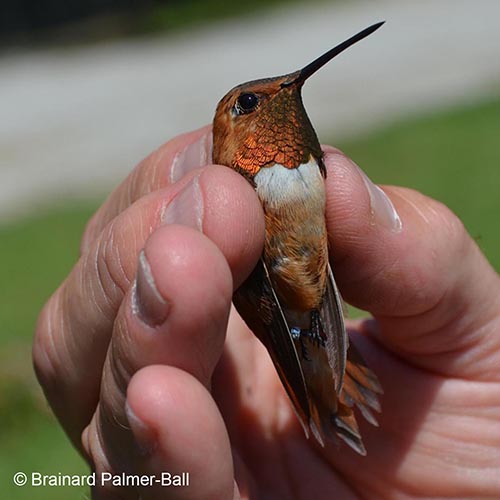 We always think of hummingbirds as being summer birds. But, did you know that we also have winter hummingbirds? They aren’t common, and they become less common the further you are from the southern coastal plains; however, they aren’t unique either. In the winter of 2011-2012, I was lucky enough to host one of these winter hummingbirds at my home in Kentucky. In this Backyard Ecology episode, I talk with Brainard Palmer-Ball about these winter hummingbirds. Brainard is a retired zoologist from the Office of Kentucky Nature Preserves. He’s also the person who captured and banded my winter hummingbird in 2011. In the eastern U.S., our winter hummingbirds aren’t the familiar ruby-throated hummingbirds that we see all summer. Instead, most of the hummingbirds that overwinter in the eastern U.S. are western species. There are a handful of western species that sometimes spend the winter in the eastern U.S., but the most common one is the rufous hummingbird. It is thought that we probably always had a few winter hummingbirds, but we just didn’t notice them. Then as hummingbird feeding increased in popularity in the 80s and 90s, more available food sources and more eyes watching those food sources meant that we became more aware of this phenomenon. These food sources aren’t drawing the winter hummingbirds or encouraging them to overwinter where they shouldn’t, but they are potentially improving survival chances during the worst parts of our winters. In our conversation, Brainard and I talk in more detail about our winter hummingbirds, how they aren’t “lost,” as was once thought, and how they survive through the winter. We also discuss the importance of feeders and tackle the question of whether leaving our feeders up, or putting them back out for late hummingbirds, is a good thing. In addition, we talk about banding hummingbirds and what can be learned from that process. Of course, Brainard also shares with us what we need to think about and do if we are lucky enough to have one of these winter hummingbirds show up at our homes. Links:
Episode image:
| |||
| 22 Apr 2021 | Growing Native Plants: Insights and Stories from 3 Native Plant Nurseries | 01:00:31 | |
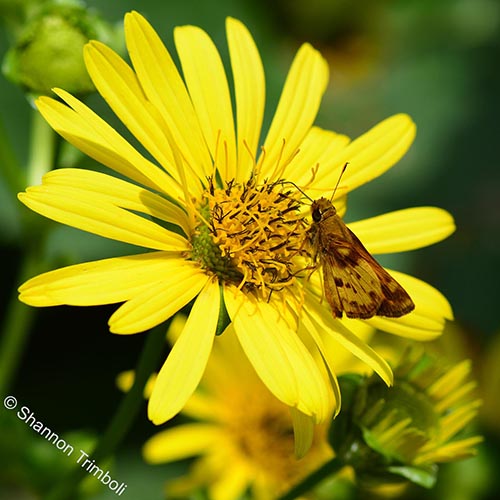 Gardening with native plants has been growing in popularity. Some people want to grow native plants for plant conservation purposes or to showcase the diverse, local flora of their region. Others want to grow native plants for the benefits they provide to pollinators and wildlife. Still others are interested in native plants as sources of food or herbal medicine. And some people want to grow native plants in their gardens for a combination of reasons. Whatever the underlying purpose is, we all share a common interest and often face some of the same general questions and challenges. This week’s episode of the Backyard Ecology podcast features a roundtable type discussion with the owners of three native plant nurseries located in Kentucky. Those nursery owners are Alicia Bosela from Ironweed Native Plant Nursery, Margaret Shea from Dropseed Native Plant Nursery, and myself from Busy Bee Nursery and Consulting. Even though we’re all located in Kentucky, our conversation is applicable to people in other states as well. Our conversation is a very fun, fluid discussion where our passion and enthusiasm for our work really shows through. Some of the many topics we cover include collecting, recommendations for people just getting started with growing native plants, some of our favorite starter native plants, and dealing with insect pests. We also discuss some of the questions that we are commonly asked. And of course, we share lots of stories and observations from our nurseries and our own gardens / properties. Throughout the conversation, you’ll also hear us asking each other questions and learning from each other. All of us recognize that there is always more to learn and we enjoy learning ourselves as well as helping others learn. I always find conversations like this educational and inspiring. I hope you find this episode educational and inspiring as well. Links:
Episode image:
| |||
| 03 Apr 2025 | Darkness Matters: Light Pollution’s Threats and Simple Ways to Help | 00:10:42 | |
Summary Darkness is a vital, and often overlooked, component of our ecosystems. Unfortunately, we’re losing it to light pollution. Decreasing the light pollution around your home will not only benefit the environment but will also benefit you because you’ll be able to see better without all the excess glare and will save money because you aren’t paying to light up the sky. 3 things you’ll learn from this episode:
Studies mentioned in this episode:
Other Backyard Ecology resources:
Thank you Thank you to our amazing Patrons who go above and beyond every month to provide financial support which helps us create so much free content for everyone to enjoy and learn from. Opportunity for ongoing coaching and support If you would like personalized help creating your own pollinator and wildlife habitat, then we invite you to join the Backyard Ecology™ Community. Because while there’s lots of great “big picture” information available about creating pollinator gardens or larger habitats for pollinators and wildlife. There are far fewer opportunities to say, “This is what I want to do. This is what I’m struggling with. How do I make it work on my property?” That’s part of what the Backyard Ecology™ Community offers its members every day. Learn more: https://www.backyardecology.net/community/
| |||
| 17 Apr 2025 | Doug Tallamy’s Habitat Restoration Story and How You Can Help Save Nature | 00:49:08 | |
Summary Dr. Doug Tallamy shares the story of how he and his wife transformed their newly built home located on a former hayfield into a thriving forest ecosystem. We talk about how they got started, their struggles along the way, the habitat wins they’ve celebrated, and what his next steps are for his property. He also shares what he’s most excited about, his thoughts on creating habitat that you can maintain as you get older, information about his newest book, and much more. Today’s guest Dr. Doug Tallamy has been an entomologist at the University of Delaware for 44 years and is the author of such well-known books as Bringing Nature Home, Nature’s Best Hope, and The Nature of Oaks. His newest book is How Can I Help?: Saving Nature with Your Yard. He is also the co-founder of Homegrown National Parks.
* affiliate links – We receive a small commission for purchases made through these links, but it comes at no extra cost to you. All commissions that we receive through these links goes toward producing Backyard Ecology™ content. We appreciate your support.
Thank you Thank you to our amazing Patrons who go above and beyond every month to provide financial support which helps us create so much free content for everyone to enjoy and learn from.
| |||
| 17 Mar 2022 | Grasslands and Grassland Birds of the Eastern U.S. | 00:57:15 | |
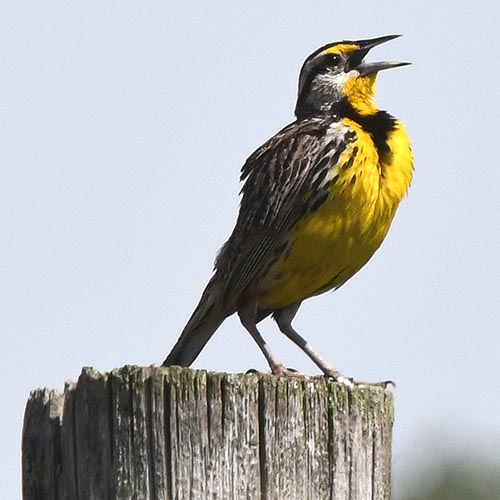 Grassland birds such as bobwhite quail, meadowlarks, sparrows, northern harriers, burrowing owls, and many others represent one of our fastest declining groups of birds. In many ways, this makes sense since grasslands are some of our fastest declining ecosystems, especially in the eastern U.S. Yet, many people don’t realize how rapidly grassland birds and the grassland ecosystems they depend on our disappearing. In this episode of the Backyard Ecology podcast, we talk with Jeremy French about grasslands and grassland birds. Jeremy is the Interior Low Plateau Ecoregion Coordinator for Quail Forever and the Southeastern Grasslands Initiative. Jeremey and I begin our conversation by talking about grasslands and the fact that many people don’t realize just how common grasslands were in the eastern U.S. Both of us share that we didn’t always know about our Eastern grasslands either. We may have known something about the grasslands in parts of Florida, but not for the rest of the eastern U.S. Yet, the plants, animals, and even historical accounts of the first European explorers to the area all provide hints of a very different and much more diverse landscape than the near solid forest that many of grew up thinking existed here. Our conversation then moves to the grassland birds that depend on the grassland ecosystems that are rapidly disappearing and have often been forgotten. We talk about some of the different types of grassland birds, how they are declining, and actions we can take on our own properties to help support grassland birds. We also share how important we both believe it is to learn about our grassland plants, grassland birds, and other organisms, as well as how some of the hardest and most eye-opening questions we’ve been asked have come from people just starting to learn about a topic. We wrap up with Jeremy telling us a little bit about the Southeastern Grasslands Initiative, Quail Forever, and ways that these two organizations can help our listeners. Links:
Episode image:
| |||
| 03 Mar 2022 | Spotted Lanternfly: Invasive Species Alert | 01:06:18 | |
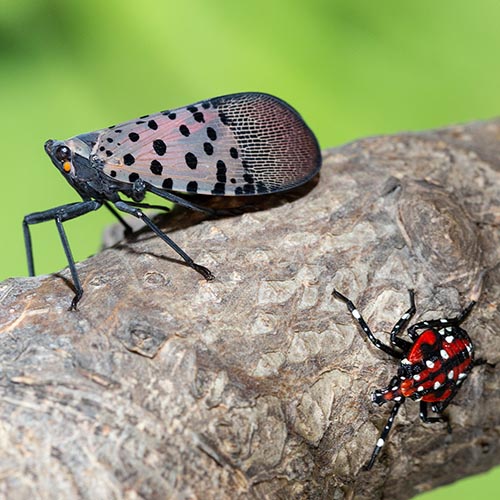 The spotted lanternfly (Lycorma delicatula) is an invasive species of leafhopper (a type of insect) that was accidentally brought to the U.S. from Asia. It was first detected in Pennsylvania in 2014 and has spread to multiple states since then. This episode of the Backyard Ecology podcast is all about the spotted lanternfly and is a little different than most episodes, because I don’t just have one guest – I have four guests. Each of the guests on this episode represents a different part of the spotted lanternfly story and response. Erin Otto is the National Policy Manager for the spotted lanternfly and is with the USDA’s Animal and Plant Health Inspection Service or APHIS. She joins us to help us understand the overarching work and coordination at the national level in regard to spotted lanternflies. Dana Rhodes is the Pennsylvania Department of Agriculture’s State Plant Regulatory Official. She brings with her the “been there, done that” wisdom, experiences, and lessons learned of a state that has been dealing with spotted lanternflies for several years now. Subba Reddy Palli is Kentucky’s State Entomologist and a Department Chair at the University of Kentucky. He represents those states that are on the leading edge, don’t have spotted lanternflies yet, and would like to keep it that way for as long as possible. Tracy Leskey is a Research Entomologist and Director at the USDA’s Appalachian Fruit Research Station. Tracy joins us to share some of the research going on related to spotted lanternflies. The researchers aren’t always the most visible individuals when it comes to emerging threats, but the work they do is vital to helping resource managers and others better understand the threat and ways to stop it, or at least manage it. Our conversation covers a wide range of topics including basic biology of the spotted lanternfly, information about its life cycle, the impacts caused by the spotted lanternfly, how it spreads, ways to manage it, current research, and much more. One of the points that came up over and over again in our conversation is how this is such a collaborative team effort. Federal agencies, state agencies, cities and local municipalities, universities, corporations, industries, and private individuals are all working together to address the spotted lanternfly. We all have a role to play when it comes to combatting this invasive species. Links:
Episode image:
| |||
| 16 Sep 2021 | A Conversation with the Co-Hosts of the Native Plants, Healthy Planet Podcast | 01:40:15 | |
 Sometimes it’s just fun to sit down and have a fun conversation with other people in the industry, and that’s exactly what we did in this episode of the Backyard Ecology podcast. In this episode, I talk with Fran Chismar and Tom Knezick. Fran is the Sultan of Sales for Pinelands Nursery and the co-host of the Native Plants, Healthy Planet Podcast. Tom is the General Manager at Pinelands Nursery, the owner of Pinelands Direct Native Plants, and the other co-host of the Native Plants, Healthy Planet Podcast. This was a very fun, relaxed, free-form conversation that covered a wide variety of topics related to native plants, the native plant industry, and gardening with native plants among other things. We all enjoyed hearing the perspectives and stories of someone from a different part of the country because Tom and Fran are in New Jersey, while I’m located in Kentucky. Many parts of our conversation came back to the shared belief that we need to make space for everyone in the native plant community. We don’t all need to have the same knowledge levels or goals. One person may be completely new to the world of native plants, while someone else may have decades of experience. Another person may be interested in growing native plants for pollinators, while someone else may be planting fields of native plants to improve quail habitat. There are a million different entry points and levels of involvement, and that’s ok. We’re all working towards the same overall goals, and we can accomplish so much more together, than any of us can on our own. We also discussed some of the challenges associated with obtaining native plants as a consumer and growing native plants for a nursery. Later, our conversation turned towards common questions that we get asked, such as “What is a native plant?” and the flipside of that question, “What is an invasive plant?” While on the surface, both those answers may seem simple, the more we dig into them, the more complicated the answers become. We agreed that we don’t have the answers, and nobody really does, but that it’s important to be having these conversations and asking these questions. Our conversation continued to twist and turn as we talked about how important it is to give kids the opportunity to connect with nature and shared our own childhood memories of spending time outside. We covered a lot of ground and a lot of different topics in this conversation, and I encourage everyone to check out the Native Plants, Healthy Planet podcast to hear more from Tom and Fran. Links:
Episode image:
| |||
| 10 Dec 2020 | Milkweeds in Urban and Suburban Monarch Waystations with Dr. Adam Baker | 00:49:32 | |
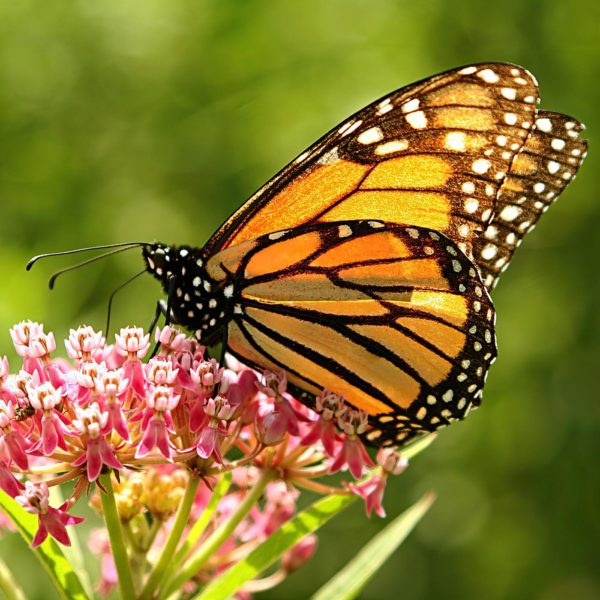 Hi Everyone! Today we are talking with Dr. Adam Baker who recently completed his PhD studying monarch butterflies and their use of monarch waystations in urban and suburban areas. His research has led to some important and easily applied strategies that any of us can use in our gardens. First, Adam looked at existing monarch waystations. He wanted to determine if monarchs used monarch waystations and if there were any key characteristics that might make one monarch waystation more successful than another. He found two very important characteristics that increased monarch butterfly use of the gardens for egg laying. First, more eggs were laid on milkweeds that were isolated from other plants – in other words, not touching other plants. Second, monarch waystations with clear lines of sight in the north-south directions were used much more than waystations where those lines of sight are blocked. Next, Adam looked at ways to design monarch waystations or pollinator gardens that would make them more attractive to egg laying monarchs. His research found that planting milkweed around the perimeter of the garden resulted in more monarch caterpillars and eggs than gardens where the milkweed was planted as a clump in the middle or mixed up with other plants throughout the monarch waystation. Additionally, he compared monarch egg laying behavior and bee usage of different species of milkweed and even compared some of the milkweed cultivars with their wild type counterparts. His research showed that tall, broad leaf species were more attractive to egg laying butterflies, than species with shorter or narrower leaves. The species of bees that used the different types of milkweed also varied. Yet another, component of Adam’s research looked at European paper wasp predation of monarch caterpillars. He found that butterfly houses or butterfly hibernation boxes – those long, skinny houses with slits in the front or side that are often placed in or near pollinator gardens or monarch waystations – are commonly used by European paper wasps. There’s no evidence that butterfly houses or hibernation boxes are actually used by butterflies. Thus, placing one in your monarch waystation or pollinator garden might be providing additional habitat for caterpillar predators while not doing anything to help monarchs or other butterflies. I love how Adam’s research provides us with applicable, hands-on activities we can do to support egg laying monarchs in our gardens. I also like that part of his research looked at bee usage of milkweeds because obviously milkweeds are used by more than just monarchs. Adam’s research is another example of how much we still have to learn about gardening for pollinators and wildlife, even for something as iconic and popular as the monarch butterfly. To me, it’s exciting to see more of this type of research being done, especially when it results in real-world applications that we can so easily use in our own yards and communities. Links:
| |||
| 31 Mar 2023 | Birding Tools and Technology to Help You Be a Better Birder | 01:09:36 | |
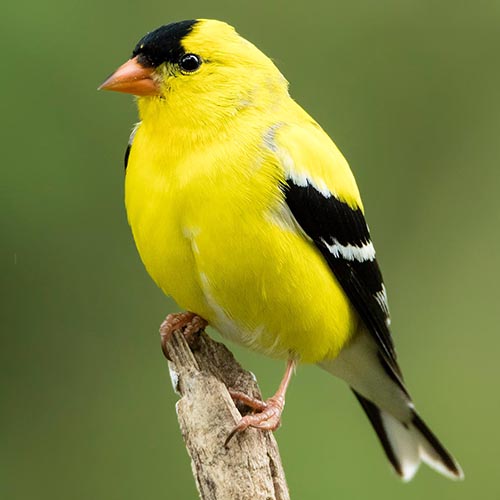 Birding is a fun activity with many different ways you can do it. You can bird by ear and identify birds by their songs. You can look at the birds and identify them that way. You can watch the birds out your window or as you spend time in your yard. Or you can go on trips where birding can be either a side activity or the main purpose of the trip. It really is an activity that pretty much anyone can do in pretty much any location. In this episode, I am joined by James Wheat. James is the President of the Kentucky Ornithological Society. You may also remember him from our conversation a few months ago about the Christmas Bird Count. Once again James shares a wealth of information along with his passion for helping others get involved in birding. Our conversation focuses on birding tools and technology that can be helpful for birders with any experience level. We start our conversation by talking about binoculars, what the numbers mean, and tips about what to look for when purchasing binoculars. Our conversation then moves to a discussion of free birding apps that James really enjoys using. The first birding app that we discuss is Merlin which is in some ways a digital field guide, but can also do so much more. This app can help you identify a bird whether you see it or hear it, and you can access tons of detailed information about that bird. The second app that we talk about is eBird which also has a desktop version. eBird helps you keep track of the birds that you’ve seen in different locations, let’s you see what birds other people have seen in a given location, and is used by scientists to study birds. We wrap up our conversation by talking about the Birding Hotspots website which provides logistical information about parking, trail surfaces, bathrooms, etc. associated with the eBird hotspots. Links to all the resources we talked about can be found on the webpage for this episode. Also, Anthony and I are working on a project that we’re very excited about. We’re hoping to make an announcement about it very soon, possibly within the next couple of weeks. If you want to be among the first to hear about it, and perhaps participate in our beta trial, then be sure to subscribe to our Backyard Ecology emails. You can do so at www.backyardecology.net/subscribe. That’ll keep you up to date with everything going on in the Backyard Ecology world. And when you sign up for our emails, you’ll also be able to download a free, e-book that explains why our familiar garden zones, don’t mean anything when it comes to gardening with native plants. That’s just our way of saying thank you for your interest in Backyard Ecology. Until next week, I encourage you to take some time to enjoy the nature in your own yard and community. Links for James:James’ email: james.a.wheat@gmail.com Binocular Resources:6 Steps to Choosing a Pair of Binoculars You’ll Love: https://www.allaboutbirds.org/news/six-steps-to-choosing-a-pair-of-binoculars-youll-love/ Merlin:Website: https://merlin.allaboutbirds.org eBird:Website: https://ebird.org/home Site Logistical Resources:Birding Hotspots: https://birdinghotspots.org Backyard Ecology Links:Website: https://backyardecology.net Episode image:American goldfinch | |||
| 20 Feb 2025 | Exploring the Fascinating World of Ground Nesting Bees | 00:46:48 | |
Summary Ground nesting bees represent a significant portion of our native bee population, yet they often go unnoticed due to their solitary nature and unique nesting habits. In this episode, we dive into the fascinating world of ground nesting bees and how we can get involved in their study and conservation. Today’s guest Dr. Jordan Kueneman is a research associate in the Danforth lab of Entomology at Cornell University. He is also the creator of the Ground Nesting Bee project on iNaturalist where he is collecting observations of ground-nesting bee aggregations. 3 things you’ll learn from this episode:
Bonus content: Resources Jordan mentioned: Other Backyard Ecology resources: Thank you Thank you to our amazing Patrons who go above and beyond every month to provide financial support which helps us create so much free content for everyone to enjoy and learn from. | |||
| 13 Apr 2023 | How Can Your State’s Native Plant Society Help You? | 01:05:54 | |
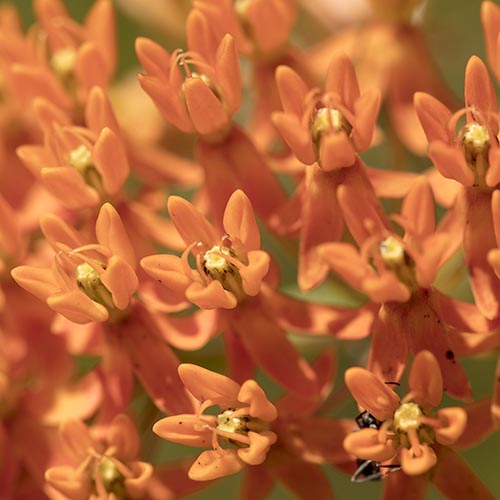 Do you want to start growing native plants in your yard, but don’t know where to find them? Or maybe you aren’t even sure what a native plant is for your area. Or maybe you are in a situation where you can’t plant anything right now, but you still want to learn about native plants and enjoy them in the wild. Your state’s native plant society may be able to help you in all of these situations. In this episode of the Backyard Ecology podcast, we’re joined by multiple guests representing native plant societies in different parts of the eastern U.S. Our guests are Randi Eckel from the Native Plant Society of New Jersey, Jeff Nelson from the Kentucky Native Plant Society, and Ellen Honeycutt from the Georgia Native Plant Society. We start our conversation with what seems like a very basic question, “What is a native plant?” As you’ll hear, the answers were all similar in their broad sense, but some of the details were a little different. Which of course, led to a conversation about those slight variations in the definitions and why they are important to be aware of when you are talking about native plants. We then dove into talking about native plant societies and what they do. Every native plant society is going to be different and do different things, but they all share a love of native plants, conservation, and education. They also tend to be very accessible and include members of all experience levels – from the person just getting started on their native plant journey all the way to professional botanists with decades of experience. Native plant societies also tend to have lots of educational resources available online for anyone interested in native plants. I highly encourage you to check out your state’s native plant society. Links to the Georgia Native Plant Society, Kentucky Native Plant Society, and Native Plant Society of New Jersey are below. I also included a link from the American Horticultural Society’s website which lists information for each state’s native plant society. On a side note, if you want to keep up with everything going on in the Backyard Ecology world, then please subscribe to our emails. You can do so at www.backyardecology.net/subscribe. And when you sign up for our emails, you’ll receive a link to download a free e-book that explains why our familiar garden zones don’t mean anything when it comes to gardening with native plants. That’s just our way of saying thank you for your interest in Backyard Ecology. Until next week, I encourage you to take some time to enjoy the nature in your own yard and community. Georgia Native Plant Society:Website: https://gnps.org/ Kentucky Native Plant Society:Website: https://www.knps.org/ Native Plant Society of New Jersey:Website: https://www.npsnj.org American Horticultural Society’s list of native plant societies:https://ahsgardening.org/gardening-resources/societies-clubs-organizations/native-plant-societies/ Backyard Ecology:Growing Native Plants, Insect-Plant Interactions, Playing in the Pond, and Much More with Dr. Randi Eckel: https://www.backyardecology.net/growing-native-plants-insect-plant-interactions-playing-in-the-pond-and-much-more-with-dr-randi-eckel/ Episode image:Butterfly milkweed (Asclepias tuberosa) | |||
| 29 Sep 2022 | Galls: Amazingly Diverse and Fascinating Plant Growths | 01:13:19 | |
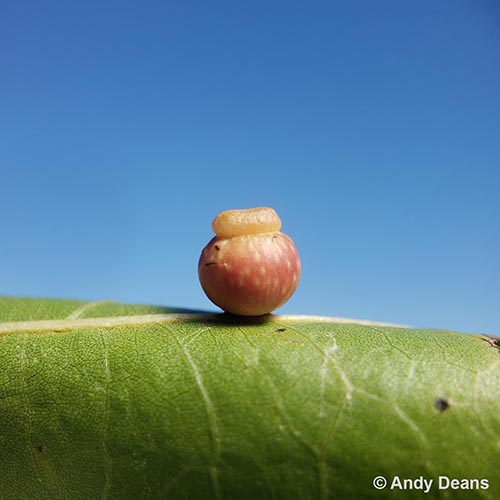 Have you ever found a leaf with weird little balls or spiky things attached to it? Or found a plant with a weird growth on its stem or a dense clump of leaves growing out of an odd place? Chances are those were galls. Going into this conversation, I knew a little bit about galls, but not much. However, what I knew was pretty interesting. So I wanted to learn more, and I thought you might be interested in learning more about them too. My mind was almost instantly blown. Galls are so much more diverse, interesting, and amazing than I ever dreamed of. Louis Nastasi joined me for this conversation. Louis is a PhD candidate at Penn State’s Frost Entomological Museum which is Penn State’s research collection of insects and other arthropods. His research is looking at gall wasps in prairie plants, particularly Silphiums, of the Midwest. At its most basic level, a gall is a piece of plant tissue that has been modified by the activity of another organism. However, in reality, galls are so much more than that implies. They can be formed by a variety of different organisms, although most of the ones we think about and encounter are formed by different types of insects. They can also be found in a variety of different places on the plant, including hidden inside the stem in such a way that you would never know it was there unless you cut the stem open. Louis and my conversation touches on all kinds of topics related to galls. We start out talking a little about what galls are and the types of organisms that can form them, then focus more on insect-induced galls. From there our conversation covers topics like why insects might choose to form a gall in this plant over that plant, the importance of galls and the ecosystem, and how little we actually know about galls. This was a really fun and educational conversation. I learned so much and am completely intrigued. I could have kept discussing and learning more about galls for much longer because they are so much more complex and interesting than I realized. I hope you find the conversation as interesting and educational as I did. I also encourage you to check out the resources that Louis shared with us. Links:
Episode image:
| |||
| 04 Feb 2021 | The Great Backyard Bird Count | 00:41:19 | |
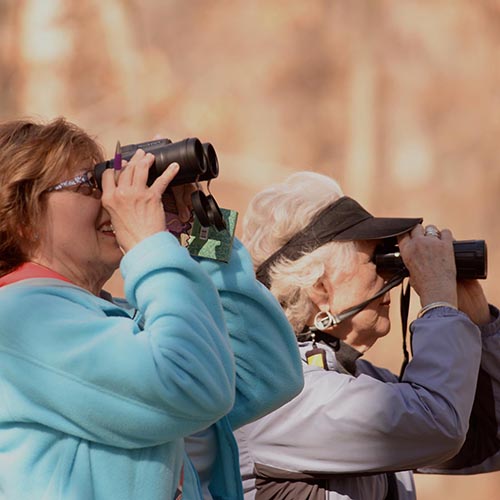 The Great Backyard Bird Count is an annual citizen science / community science project hosted by the Cornell Lab of Ornithology, Audubon, and Birds Canada. This international project takes place all over the world for four days every February. In 2021, it will happen February 12-15. In today’s episode of the Backyard Ecology podcast, we talk with Becca Rodomsky-Bish, Project Leader for the Great Backyard Bird Count, about the project, its importance, and how we can participate. We also talk about some tips and tools for people who may enjoy watching birds, but are just starting to learn how to identify them. In 2020, approximately 270,000 people from across the world participated in the Great Backyard Bird Count. Approximately 100,000 to 160,000 of those were from North America. One of the cool interactive features on the Great Backyard Bird Count’s website is a map that lights up the locations of new submissions as they are entered. As the weekend progresses, you can see the globe light up with people participating in the project. Despite its name, the Great Backyard Bird Count isn’t restricted to just your backyard. You can participate anywhere including at home, at a city or county park, at a state park, in the local schoolyard, etc. It’s also possible to do the count from a stationary location, such as a comfy chair by the window, or while walking your favorite trail. Participants in the Great Backyard Bird Count are asked to identify and count the birds that they see for a minimum of 15 minutes. You can do multiple counts and you can count for longer than 15 minutes if you would like. After making your observations, you enter your data into eBird which is an online database of bird observations from around the world. You can enter your data either on your computer or on your mobile device, depending on your personal preference. One thing that Becca stressed was that anyone can participate in the Great Backyard Bird Count. You don’t have to be an “expert birder.” If you enjoy watching birds, but aren’t real confident about identify them, that’s ok. We all started somewhere, and we’re all still learning new birds. The good news is that there are lots of tools available to help you. Field guides are one option and is the option that many of us who have been watching and identifying birds for awhile first learned how to use. However, today there are other tools available as well. One of those tools is an app created by the Cornell Lab of Ornithology. The app is called Merlin and it guides you through the identification process by asking you a series of questions. Based on your answers, it will offer you a few possible identifications for the bird that you are looking at. As of this recording, I haven’t personally used Merlin, but I’ve been told by multiple people that it is pretty good at helping you get to the correct identification. Even after the Great Backyard Bird Count is over, you can continue to add your bird observations to eBird. The lists created in eBird can be extremely valuable sources of information. As individuals, we can use them to help us keep track of our personal observations overtime and in different locations. At a larger scale, scientists can also use the observations entered into eBird to help answer broader ecological questions. Even something as simple as knowing what birds are found in a given area can help us understand what the habitat in that area looks like because certain bird species may only be found in certain habitats. Not finding certain birds in an area can also be important information, especially if those birds were once found in that area. That’s one of the ways that long-term databases or lists of birds observed in a single location over a long period of time can be very important in identifying trends or population changes over time. To date, there have been over 100 scientific papers published using eBird data. The research in many of those papers likely wouldn’t have been possible without the contributions of individuals like you and I to citizen science / community science projects like the Great Backyard Bird Count or eBird. Researchers, like everyone else, can only be in one place at a time. However, if we are all helping to make observations and reporting data, then we can do so much more. Not only does the information we gather make it easier to spot changes occurring right now, but it can also be used in the future to answer questions that we may not even know to ask yet. Links:
Episode image:
| |||
| 29 Jun 2023 | Sometimes Life Happens | 00:07:44 | |
I share a story of how Anthony and I had a “life happens” moment on our property over the weekend. My hope is that our story of how “life happened” to us this week can give you a little bit of encouragement, or at least, help you feel not quite so alone the next time life throws a wrench in your plans. The full transcript, including pictures, can be found on the episode’s webpage: https://www.backyardecology.net/sometimes-life-happens/ Get a free copy of our e-book, An Introduction to Gardening with Native Plants: Hardiness Zones and Ecoregions, when you subscribe to our email. Subscribe at www.backyardecology.net/subscribe. Links
Episode Image
| |||
| 10 Nov 2022 | Fascinating Wasp Diversity | 01:00:59 | |
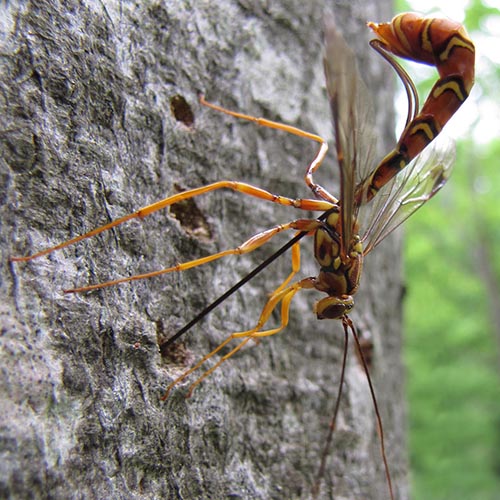 Wasps are often portrayed as one of “the bad guys” in the insect world. But part of that common misconception comes from a lack of knowledge or understanding about wasps in general and stereotypes that don’t apply to most wasp species. The truth is that wasps are extremely diverse and what most of us think of when we think of a “wasp” makes up only the tiniest percentage of all wasps out there. In fact, there are likely many different species of wasps that haven’t even been identified yet. And wasps play an extremely important role in the ecosystem – one that is often overlooked and not well-understood. In this episode of the Backyard Ecology podcast, we are joined by Louis Nastasi who is a self-proclaimed ambassador for wasps. Louis is a PhD candidate at Penn State’s Frost Entomological Museum which is Penn State’s research collection of insects and other arthropods. He also founded and is one of the instructors for the Wasp ID Course, which will have its second session in January 2023. During our conversation, Louis and I dive into the fascinating diversity of wasps, especially parasitoid wasps, and their vital roles in the ecosystem. Louis believes that a lot of the misconceptions around wasps are due to a lack of recognition of just how diverse wasps are. Contrary to popular belief, most wasps aren’t capable of stinging people and many are the size of a speck of dust. Like with the first episode that Louis was on, our conversation takes many twists and turns. We talk a lot about parasitoid wasps and just how amazing it is that many of these parasitoid relationships developed in the first place. (One of the wasps we talk about lays its eggs in diving beetle eggs which are found underwater!) We also discuss how much we don’t know about these species and how much there is still to learn. But through it all, Louis’s passion for wasps and wasp education shines through. Links:
Episode image:
| |||
| 01 Jul 2021 | Trail cameras: A fun way to watch wildlife in your yard | 00:49:40 | |
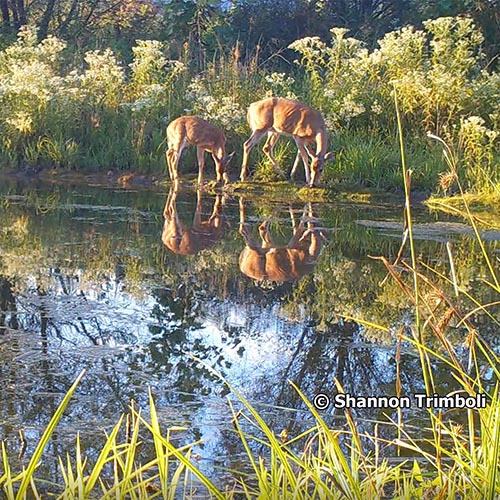 I’ve always really enjoyed looking at the pictures and watching the videos captured by the trail cameras on our property. The videos are always my favorite because you get to see more of the behaviors. Either way, retrieving the SD card from a camera is always exciting because you just never know what we are going to see when you begin going through the images. In this episode of the Backyard Ecology podcast, we talk with Anthony Trimboli about trail cameras. Anthony is a wildlife biologist, conservation educator, and my husband. He also has experience working in sporting goods stores where he helped people pick out the right cameras for them, which is why I asked him to talk with us about this subject. During our discussion, Anthony and I touch on the history of trail cameras and their use for wildlife research and management. We also talk in detail about some of the different features that today’s cameras have, some of the different ways that trail cameras can be used, and some of the things you might want to consider if you are purchasing one. In addition, Anthony shares tips for where to locate your trail camera so that it has the best chance of picking up wildlife moving through your property. Throughout the conversation we share some of the stories about things that we’ve seen on our own trail cameras. In my opinion, trail cameras are a great way to watch wildlife, no matter what size property you have. It’s always more fun to see things in person, but trail cameras give us the opportunity to see what’s happening when we aren’t watching or to see animals that may be a little more wary. This is true no matter how big or small your property is or whether it is located in a more urban or more rural area. Links:
Episode image:
| |||
| 14 Jan 2021 | Land Snails and their Amazing Diversity | 00:56:26 | |
 Land snails???? Come on, how do they fit with Backyard Ecology? True, land snails aren’t the most charismatic organism in our yards and communities, so it would be easy to just write them off and ignore them. Most of us probably do that on a regular basis. But, land snails are extremely important to our ecosystem and in some cases are critical to the survival of much more charismatic organisms. Not to mention, they can be pretty fascinating in their own right if we just give them a chance. On today’s episode of Backyard Ecology, we talk with Dan and Judy Dourson. Dan is a wildlife biologist, author, illustrator, and educator. Judy is an educator, author, editor, and researcher. Dan and Judy have had really interesting careers that have taken them from the mountains of Kentucky to the jungles of Belize and places in between. However, much of their recent work has focused on land snails. Although they are often overlooked, land snails play vital roles in the ecosystem. They help to recycle nutrients. They move spores of fungi and other organisms to new locations. And they are an important food source for everything from firefly larvae to songbirds and raptors. In some cases, like that of Florida’s snail kite, a species’ entire diet is made up of a single species of land snail. If those land snails go extinct, then so would the other animal (in this case the snail kite) that depends on them. The eastern U.S. has the highest biodiversity of land snails in all of North America. If you happen to live in the Appalachian Mountain region, especially along the Tennessee / North Carolina border, then you are in an area that is especially rich in land snail biodiversity including many species that are found nowhere else in the world. However, no matter where you live in the eastern U.S., you likely have a dozen or more species of land snails in your yard. Some of those species will be native, while others (like the ones that eat our vegetable gardens) are likely exotic. I love the fact that land snails are something that we can all find in our yards and communities if we just take the time to look for them. And maybe that is the point – just taking the time to slow down, look, and appreciate all the little things that we so often take for granted. Encouraging land snails in your yard isn’t hard either. Basically, all we have to do are the same things that we would do to encourage pollinators, songbirds, or other wildlife – no separate “land snail garden” required. My mind often focuses on the ecological importance of an organism, so I was surprised to learn that land snails are also being studied for their ability to address a number of medical issues. This has the potential to create another realm of valuable benefits that land snails can provide beyond their ecological benefits. There’s just so much that we don’t know and still have to learn about land snails and other organisms, especially the less charismatic ones. In the end, I think Judy had the absolute best quote of the day when she said, “You only protect what you learn to love and you can only love something if you know its name.” That is so true and is part of the reason why I include episodes like this which feature some of those undervalued species. I recognize that I don’t know enough about land snails and I’m as guilty as the next person of overlooking their importance. So my goal through conversations like this, is to learn more and gain a greater appreciation for some of these less well-known organisms. I’ve definitely been inspired to start looking for and identifying some of the land snails in my area. I hope you have been too. Links:
Episode image
| |||
| 25 Mar 2021 | Flower Flies or Hover Flies: Bee Mimic Extraordinaires | 01:09:05 | |
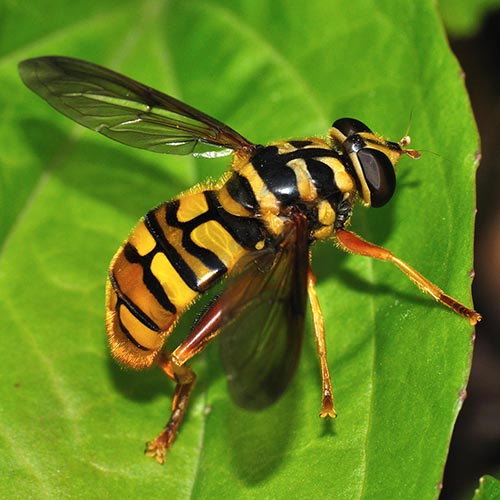 Flower flies, a.k.a. hover flies, are common garden visitors, but they are often overlooked. The reason they are so often overlooked is because they are extraordinary mimics, usually of bees or wasps. Their mimicry is so good, that flower flies are often mistakenly identified as bees in social media posts, magazine articles, newsletters, and sometimes even books. In this week’s episode of the Backyard Ecology podcast, we are talking with Dr. Jeff Skevington and Michelle Locke. Jeff and Michelle are co-authors authors of the book Field Guide to the Flower Flies of Northeastern North America. Their book covers the flower flies found from the Mississippi River across to the east coast and from Kentucky north all the way into Greenland. However, the book includes full distribution range maps for each species, so it will still be relevant for many areas outside of its primary focal range, especially in the eastern half of the continent. Our conversation covered many different topics including the life history of flower flies, where and when to look for them, and some fascinating behaviors like hilltopping and migrating. We also talked about how to identify flower flies, starting with how to know you are looking at a flower fly and not a bee or wasp. Michelle and Jeff are both extremely knowledgeable. I learned a lot from our conversation. Even though flower flies are important pollinators, there is still much that we don’t know about them. It’s really hard to manage for a species, or protect it if necessary, without basic information like knowing its full life history or population numbers and distribution. Yet, basic information like that is unknown for many species of flower flies. Multiple times throughout our conversation, Jeff and Michelle mentioned simple ways we could help fill in those knowledge gaps. Links:
Episode image:
| |||
| 04 Jun 2021 | Laurel Wilt Disease: Something we all need to be aware of | 01:16:38 | |
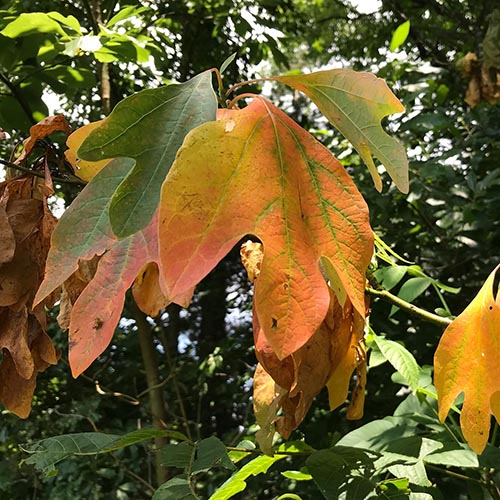 Laurel wilt disease is a disease caused by an introduced beetle and fungus. This disease is deadly to members of the Laurel family which includes redbay, sassafras, and spicebush. Laurel wilt disease also kills avocados, which aren’t native to the eastern U.S., but are in the Laurel family and are an important agricultural crop. As of spring 2021, laurel wilt disease has been found in 11 states in the eastern U.S. with the potential to spread to much further – even down into Mexico and Central America. In this episode of the Backyard Ecology podcast, we talk with Alexandra Blevins about laurel wilt disease. Alexandra is the Forest Health Specialist with the Kentucky Division of Forestry and has been monitoring laurel wilt disease in Kentucky. This isn’t a topic that any of us really want to discuss, but it is an important one and one that we all need to be aware of. In our conversation, Alexandra and I discuss the relationship between the redbay ambrosia beetle and the fungus that it carries. It is the fungus that causes laurel wilt disease. We also discuss how the disease kills the trees, what to look for in order to know if your trees have been infected, and what to do if you think you’ve found it. In addition, Alexandra shares with us some of the current research related to laurel wilt disease treatment and management. Unfortunately, as of this recording, there are no approved treatment options or “cures” for laurel wilt disease in sassafras and spicebush. As much as this could be a complete doom and gloom story, there is also a small ray of potential hope. The primary way that laurel wilt disease is spreading is from humans moving wood products which contain the beetle larva and the fungus. If we are the primary cause of the spread of the disease, then we also hold the key to stopping it, or at least greatly slowing its spread. One of the primary ways that we can keep from spreading the disease is to not move wood products such as firewood, smoking / grilling wood, uncured lumber, etc. Not only will that reduce the risk of spreading laurel wilt disease, but it will also reduce the risk of spreading lots of other introduced diseases and pests. Links:
Episode image:
| |||
| 28 Jan 2021 | The Valuable Ecological Roles of Crayfish and the Discovery of Two New Species | 01:09:35 | |
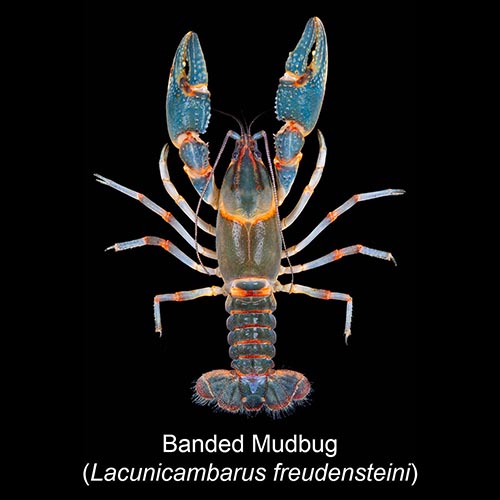 We’re lucky in the eastern U.S. because bodies of water are pretty common. For most of us, if we don’t have access to a creek, stream, river, pond, etc. in our immediate backyards, then we likely have access somewhere nearby in the surrounding community. This means it can be relatively easy for us to explore those waterways, and for many of us part of that exploration at some point included catching crayfish or other aquatic organisms. In this episode, we talk with Mael Glon, a PhD candidate at the Ohio State University in the Department of Evolution, Ecology and Organismal Biology. Our conversation with Mael focuses on crayfish biology, ecology, diversity, and a variety of other crayfish-related topics. Although we might think of crayfish as being mostly just a reddish-brown color, that’s not always the case. They can also include other colors such as turquois blue, golden yellow, bright red, and mossy green. Some species, especially the burrowing crayfish, can be very showy and absolutely gorgeous. We can often identify a crayfish species by looking at characteristics like those color patters, the size and shape of the claws, or where the specimen was found. However, for closely related species that look very similar, other characteristics or techniques must be used to accurately identify the species. One of those techniques is to look at the gonopods of the reproductively active males, but while that technique can be very precise, it also has obvious issues. Crayfish can be considered keystone species in many aquatic and semi-aquatic ecosystems because so many things eat them. However, their importance isn’t limited to just being a prey species. Some of our crayfish fall into a group commonly known as the burrowing crayfish. These are the crayfish that burrow underground and often form the mud chimneys that are found around the edges of ponds and streams or in wet meadows. Crayfish burrows are commonly used by a wide variety of animals besides the crayfish that built them. We have around 400 species of crayfish in North America. The majority of those are in the eastern U.S. and parts of the southeastern U.S. are considered a global hotspot for crayfish biodiversity. Recently, Mael and his colleagues added to this biodiversity by identifying and naming two new crayfish species found in Alabama and Mississippi. Identifying and recognizing new species at the scientific level is important because, when it comes to conservation, one large population of a single species is going to be viewed and managed differently than a population consisting of two or three species, each with much smaller ranges. Unfortunately, many of us aren’t aware of how diverse and special our crayfish populations are. I just think that it’s sometimes hard to recognize or appreciate the biodiversity that occurs in our own communities because to us it’s “normal” and therefore “nothing special.” That’s one reason why sharing what we are seeing on platforms such as iNaturalist can be beneficial, because sometimes it takes someone else’s eyes and perspective to help us realize just how special something is that we may see every day. Links:
Episode image:
| |||
| 12 Sep 2023 | Building Thriving Ecosystems and Exploring Nature in Your Backyard with Backyard Ecology | 00:10:36 | |
Over the last 6-8 months, we’ve been working hard to make Backyard Ecology even better and to implement new ways to help people on an even deeper level. I am so excited because I can finally share some of what we’ve been working on! The full transcript of this episode can be found at: https://www.backyardecology.net/building-thriving-ecosystems-and-exploring-nature-in-your-backyard/ Links to become a Backyard Ecologist:
General Backyard Ecology links:
We want to meet you where you are at in your ecological journey and be there for you as your needs change. That’s why we offer multiple ways to join us and become a Backyard Ecologist. To see all the ways that you can connect with us and become a Backyard Ecologist, visit www.backyardecology.net/join.
Thank you to our supporters on Patreon who go above and beyond each month to financially contribute towards making the Backyard Ecology blog, podcast, and YouTube channel possible. Thank you also to everyone who has made one-time donations to support the Backyard Ecology blog, podcast, and YouTube channel.
| |||
| 24 Nov 2022 | Thank You for Being Part of Backyard Ecology | 00:04:09 | |
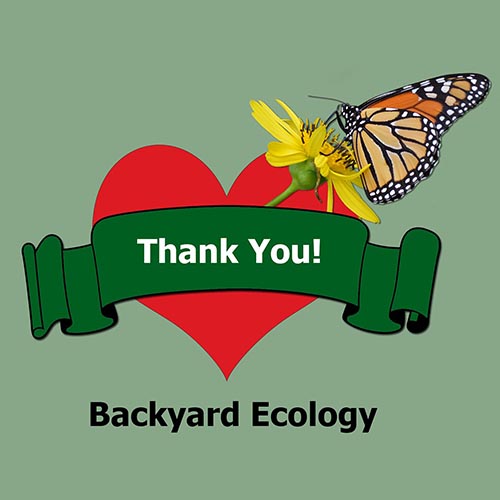 The holiday seasons are upon us. This is often a time to gather with family and friends, give thanks, share memories, exchange gifts, and reflect both on what we have and what we hope to achieve in the coming year. I thought about skipping this episode completely since it will release on Thanksgiving Day and many of us will be involved with holiday activities. But then I decided that instead of skipping the episode, I wanted to take just a few minutes to express my gratitude. Backyard Ecology is now 2 years old. In that short time, it has grown from a blog, to a blog and podcast, and now a blog, podcast, and YouTube channel. I am eternally grateful for everyone who takes the time to read the blog articles, listen to the podcast episodes, or watch the videos. Thank you so much for allowing Anthony and I to share our love of nature with you. I am also thankful for those of you who share our content with others. Knowing that you find our articles, podcast episodes, and videos valuable enough to share with your own friends, family, and community members means a lot to us. Thank you also to those of you who take the time to reach out to us and share your own experiences and observations with us. We love hearing from you and your emails, stories, and questions help us stay inspired and dedicated to putting in the time required to produce all of the free content that we create. I also want to say an extra special thank you to our monthly supporters on Patreon because their contributions are extremely important and deserve to be recognized. I thank them at the beginning of each episode and on the website, but I really can’t thank them enough. In addition to all of the time and energy Anthony and I invest in producing the Backyard Ecology content, there are also significant financial costs associated with purchasing the necessary equipment and software, paying the monthly fees for hosting the content, and more. Without the financial help of our Patrons, we probably wouldn’t be able to continue producing the Backyard Ecology blog, podcast, and videos. We are extremely grateful to each of our Patrons and are honored that they believe so much in us and our message that they choose to help us make Backyard Ecology freely available to all of our readers, listeners, and viewers. As we gather around our holiday tables this season and think about the people and things that we are grateful for, please know that each member of the Backyard Ecology audience is in my heart. Thank you for being a part of that audience and for allowing us to be a part of your life. Until next week, don’t forget to take some time to enjoy the nature in your own yard and community. Note: If you would like to help support Backyard Ecology you can make a one-time donation or join our Patrons in making a monthly donation for less than the cost of a cup of coffee or a meal at your favorite fast food place. Links to do so can be found below. Links:
| |||
| 01 Sep 2022 | Tips and Resources for Identifying Plants | 01:02:34 | |
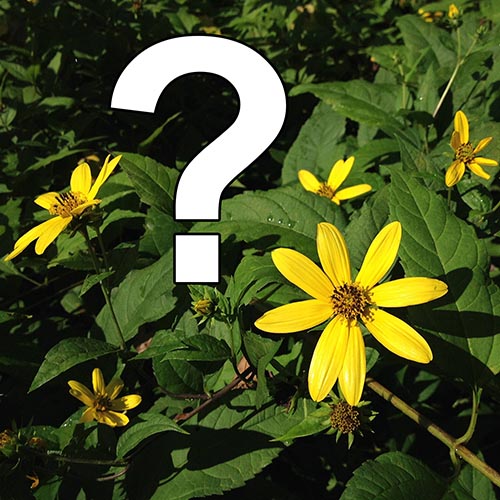 We’ve all been there. We are walking in the woods, in a field, along a creek bank, around our property, or around the local park and we stumble upon an interesting plant. It isn’t one that we know and we immediately begin to wonder, “what is that?” It’s a simple question that holds so much potential because once we know what the plant is, we can find out more about it. The plants we find growing in a location can also help tell fascinating stories about the history of that area, provide hints as to the types of animals or even other plants that might also be found there, and so much more. But it all starts with being able to accurately identify the plant. In today’s episode, I am joined by my husband, Anthony Trimboli. Anthony and I discuss some of the reasons why identifying plants you find can be important and some of the resources you can use for identifying plants (including pros and cons of each resource). We also share some of the things we look at when we are identifying plants. To make it easier for you to refer back to particular parts of the podcast, here is a rough outline of our conversation and the times we start discussing each topic.
Links
Episode image:
| |||
| 25 Feb 2021 | Clovers! Native Clover Conservation, Clover Yards, and More | 01:06:49 | |
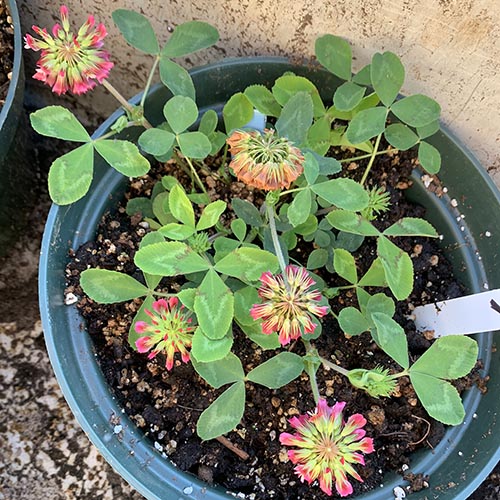 Clovers are often suggested for lawn alternatives or for incorporating into our yards to make them more pollinator friendly. Clovers can also play important roles in agriculture either in grazing systems or as cover crops in row cropping systems. In addition, they are a favorite of deer and rabbits. However, most (if not all) of the clovers in these systems and that we typically think of are exotic species. Our native clover species are not nearly as well known. In this episode of the Backyard Ecology podcast, we talk with Jonathan Kubesh. Jonathan is a PhD student at Virginia Tech University who is studying clovers. Jonathan brings a unique perspective to this topic, because although much of his work focuses on native clovers and native clover conservation, his field of study is in agriculture and agronomy. This allows him to serve as a valuable bridge between the two fields and areas of interest. While the term “clover” is often loosely used for several different genera of plants, true clovers all belong to the genus Trifolium. In the eastern U.S., we have approximately 10 different species of native clovers in the Trifolium genus. We also have a number of exotic species, such as the familiar white clovers that can be found in our yards and fields. Many of our native clovers are threatened or endangered. Some of our native clovers are tied to very special soil conditions and habitat types such as the limestone glades in the Nashville, TN area or the shale barrens which can be found in parts of Virginia, Maryland, and Pennsylvania. Other native clover species are tied to disturbance regimes that no longer exist, such as fire or short-term, intensive grazing by bison or deer. In our conversation, Jonathan and I discuss many different topics. A large part of our conversation is devoted to native clovers. Our discussion about native clovers covers their biology, the conservation efforts surrounding them, how agriculture and horticulture may play a role in those conservation efforts, the importance of keeping good records, and the valuable role of historical collections and herbarium records in helping to discover new populations and in guiding restoration efforts. Jonathan and I also talk about establishing clover yards and some of the factors that you might want to consider when deciding whether a clover yard is right for you. Like with so many other things in life, there isn’t one single answer that will fit all situations. However, Jonathan does an excellent job of discussing possibilities for different situations and for pointing us towards how to find more specific local help for determining the best option for our own unique situations. Links:
Episode image:
| |||
| 15 Sep 2022 | Planting for Pollinators | 00:58:50 | |
 One of the most common questions I get is, “What should I plant for pollinators?” As you’ll hear in today’s conversation, I’m not the only one who frequently gets that question. It’s probably the most common question asked of anyone who promotes pollinator gardening. Unfortunately, there isn’t a simple answer to that question because lots of different factors go into determining the best plants for any given area or situation. However, research into this topic can give us clues as to what plants might be good ones to consider for our own gardens. In this episode, we are joined by Dr. Laura Russo. Laura is an Assistant Professor of Ecology and Evolutionary Biology at the University of Tennessee. She and her colleagues have been studying interactions between native plants and flower visiting insects. They recently published a report evaluating pollinator preferences of 18 different native plants in garden settings. Laura and my conversation covers, not only some of the findings of the study, but also the complexities that go into conducting scientific research like this. There’s a lot more to it than simply planting a garden and seeing what visits the flowers. Recognizing those complexities can help us understand why this type of work is so important and why research related to planting for pollinators isn’t done as often or cover as many species as many of us might like. Obviously, with only 18 different species in the study, there are a lot of species that were left out of the study. So, another one of the topics we talked about was their reasons for picking the species they picked for the study. We also discussed the importance of taking into account the gardener’s preferences, as well as, the pollinators’ preferences when planting for pollinators around our homes. No project can ever test every single flowering plant out there under every single condition possible, but research like what Laura and her colleagues are doing is still really important. And you don’t have to live in east Tennessee for this research to be valuable, especially when you look at this research in conjunction with similar research from other areas. By looking at projects from a variety of locations, patterns can emerge, such as a genus that is consistently popular among flower visiting insects. These patterns can give us hints as to generalizations that we can make and point us in potential directions to go in the absence of exhaustive research in our exact location. Links:
Episode image:
| |||
| 01 Jun 2023 | 5 Tips for Attracting Butterflies to Your Yard | 00:11:29 | |
I offer five tips to help you attract butterflies to your property. Depending on your property and situation, you may not be able to do all of them. That’s ok. If you have a small property, look around you. See what’s lacking in your area and try to fill in the gaps. The important thing is to be aware and to do what you can. The full transcript can be found on the episode’s webpage: https://www.backyardecology.net/5-tips-for-attracting-butterflies/ We have lots of exciting opportunities planned with Backyard Ecology over the next several months. If you want to keep up with everything going on in the Backyard Ecology world, then please subscribe to our emails. You can do so at www.backyardecology.net/subscribe. And when you sign up for our emails, you’ll be sent a link to download a free, e-book that explains why our familiar garden zones, aren’t important when it comes to gardening with native plants. That’s just our way of saying thank you for your interest in Backyard Ecology. Links
Episode Image:
| |||
| 25 Nov 2021 | Wild Turkeys: A Conservation Success Story, Where We Are Now, and What We Can Do | 01:08:23 | |
 Wild turkeys are fascinating birds that are only found in North America. They are also a conservation success story – one which most people aren’t aware of because the turn-around was so successful. In this episode of the Backyard Ecology podcast, we talk with Dr. Bret Collier. Bret is a Professor of Wildlife Ecology at Louisiana State University who specializes in studying wild turkeys. If you ask a room of wildlife biologists to name our nation’s greatest conservation success stories, you are most likely to hear wild turkeys, white-tailed deer, and wood ducks come up frequently. It’s hard to believe now, but there was a time, not too long ago really, when wild turkeys, white-tailed deer, and wood ducks had been extirpated from many areas and were steadily declining in population numbers. Losing them would have been a distinct possibility. But massive conservation efforts turned those declines around. Now all three of those species are so common throughout much of their range that the conservation success stories they represent have been mostly forgotten. Bret and I discuss the wild turkey’s conservation success story because we both believe that it is a story worth telling and one that doesn’t need to be forgotten. We also talk about current turkey populations, because in the southeast we are seeing a decrease in turkey populations. There are hints that this might be starting to occur in other parts of the country too. As Bret said during our conversation, “Wild turkey conservation at a national level rests on the private landowners.” This is because so much of our land is privately owned, especially in the eastern U.S. So, in addition to talking about wild turkey populations, Bret shares with us the types of habitat that turkeys need and helps us understand some of the things we can do to make our properties a little better for turkeys. Links:
Episode image:
| |||
| 02 Nov 2023 | Fall Cleanup in the Pollinator and Wildlife Garden: A Comprehensive Guide to What You Need to Know and Do | 00:14:59 | |
When gardening with native plants for pollinators and wildlife, much of the traditional fall cleanup for gardens is not only unnecessary but could be detrimental. And if you don’t have to do all that fall cleanup, you’ll have more time to kick back and enjoy the everchanging natural wonders around you. The full transcript of this episode can be found at: https://www.backyardecology.net/fall-cleanup/ Until next week I encourage you to take some time to explore the nature in your yard and community. 🌻 🌻 🌻 If you’re listening to this in November 2023, please help us by taking our end-of-the-year survey. The survey’s results will help guide our plans for Backyard Ecology content and programs in 2024. This is your chance to tell us what topics you would like to hear more about and share any feedback you have with us. The link for the survey is: 🌻 🌻 🌻 Thank you to our supporters on Patreon who go above and beyond each month to financially contribute towards making the Backyard Ecology blog, podcast, and YouTube channel possible. Thank you also to everyone who has made one-time donations to support the Backyard Ecology blog, podcast, and YouTube channel. 🌻 🌻 🌻 Episode related links: 🦋 Why WEED is a Huge Problem for Native Plants! https://www.youtube.com/watch?v=WXTeYtN0Z_Q Become a Backyard Ecologist: 🦋 The Backyard Ecologist’s Newsletter: https://www.backyardecology.net/subscribe/ Backyard Ecology content: 🦋 Website: https://backyardecology.net Support Backyard Ecology: 🦋 Patreon page: https://www.patreon.com/backyardecology | |||
| 28 Apr 2022 | Gardening with Native Plants | 01:08:12 | |
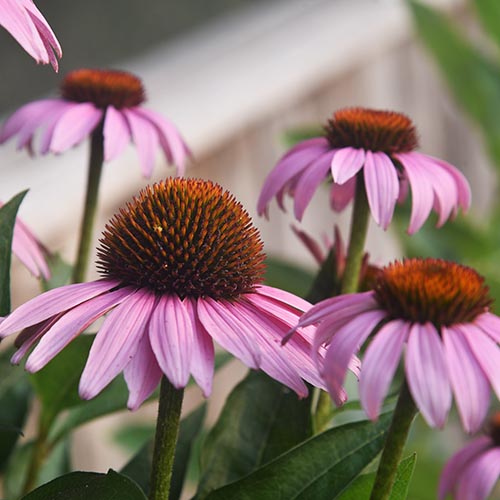 The interest in gardening with native plants has been growing steadily, and I am very excited about that fact. Growing native plants in our gardens and landscapes can have many benefits – both for us as the gardeners and for the pollinators and wildlife that also call our yards home. Plus, we have some absolutely gorgeous native plants that deserve to be recognized in their own right. In this episode of the Backyard Ecology podcast, we talk with Jennifer Ceska about gardening with native plants. Jennifer is a Conservation Coordinator with the State Botanical Garden of Georgia at the University of Georgia, Athens. She and her colleagues are doing some amazing work and I am grateful for their efforts to help others learn about and grow native plants. Jennifer and I both love sharing our knowledge and passion of the natural world, as well as continuing to learn ourselves. We’ve just always been naturally curious and that is reflected in this very informal conversation. One of the many topics we discuss is growing regionally appropriate native plants. This is especially important because many plants are native to one part of the country, but not another. For example, I was recently surprised to learn that common milkweed (Asclepias syriaca) isn’t native to Georgia and can actually become problematic there because it spreads so aggressively. Jennifer said that she was surprised as well when she first learned that common milkweed isn’t native to Georgia because so many resources and online maps show it as native across the eastern U.S. However, newer research has shown that it isn’t native to Georgia which is one of the reasons why the State Botanical Garden of Georgia has created a brochure discussing the best milkweeds to plant in Georgia and the ones to avoid. Other topics of conversation include some of our favorite native species to plant in smaller areas and cues to care for native plant gardens or even when growing native plants in fields and “wilder” areas. Jennifer also shares with us some of the fantastic native plant programs and resources available through the State Botanical Garden of Georgia. If you live in Georgia, then I encourage you to take a look at these valuable resources. Links:
Episode image:
| |||
| 23 Jun 2022 | Summertime Activities and an Exciting Backyard Ecology Announcement | 00:55:21 | |
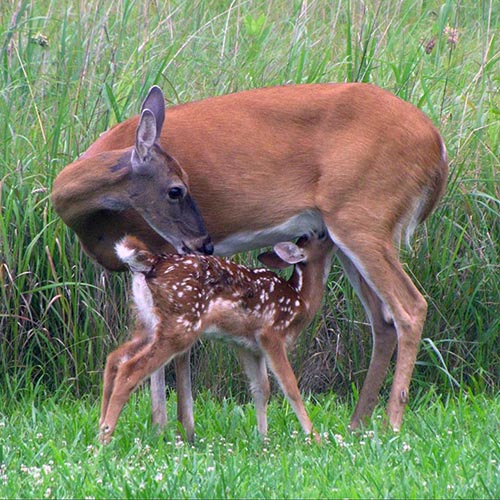 Summer brings with it butterflies, lightning bugs, caterpillars, hummingbirds, fawns, baby birds, and so much more. It can be a really fun time to just get outside and observe all of the fascinating plants and animals around us. There are also plenty of things that we can be doing at this time of year to help make our yards more attractive to pollinators and wildlife. My husband, Anthony Trimboli, joins us again for this episode of the Backyard Ecology podcast. Anthony has been on the podcast a few times, so you may remember that, like me, he is a wildlife biologist and educator. He also frequently helps me with my nursery and habitat consulting. This is an episode that I have really been looking forward to sharing with you because we have an exciting announcement to share. We now have a Backyard Ecology YouTube channel! Anthony is taking the lead on it and in this podcast episode, we share some of our plans for the new YouTube channel. In addition to talking about the new YouTube channel, we share some of the many things that you can be doing or observing in your yards at this time of year. Links
Episode image:
| |||
| 03 Feb 2022 | A Conversation with Kyle Lybarger from the Native Habitat Project | 00:52:42 | |
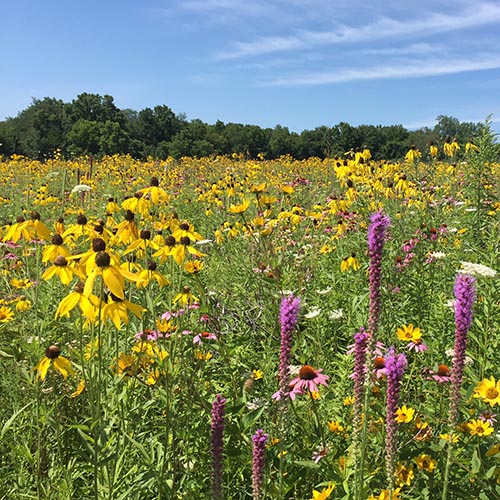 In 2021, Kyle Lybarger began creating TikTok videos about native plants and grassland ecosystems in Alabama. He quickly became a social media star and even gained the attention of more traditional media streams including The Weather Channel. Kyle is doing terrific work teaching about and raising awareness of native plants and grassland communities. He is also actively involved in multiple on-the-ground conservation and restoration projects. Kyle has been on my list of people to invite on the Backyard Ecology podcast for a while, but I couldn’t decide on the right topic. Well, if you follow his Native Habitat Project videos on any of his social media platforms, then you know that Kyle is a wealth of information on a variety of topics. He’s the type of person who would just be a lot of fun to go out in the field with or sit down and have a conversation with. So I decided, why not do that? Instead of trying to pick one specific topic to talk about, let’s just have a conversation and that’s what we did for this episode of the Backyard Ecology podcast. Like any good conversation, ours takes many different twists and turns. One topic we talked about in detail is how less than 1% of our native grasslands remain, but well over 90% of the eastern U.S. is privately owned. The result is that many of our remaining grassland ecosystem in the East are on private land. Often times, the landowners don’t know they have anything rare or special, because to them it is just “normal.” This can sometimes be true even in the middle of a neighborhood like with the Porter’s goldenrod story that he shared with us. Other topics we discussed included habitat management activities we are doing, how people can learn to identify plants or grassland remnants, and his goals for the Native Habitat Project. Links:
Episode image:
| |||
| 28 Dec 2023 | Top 10 Backyard Ecology Podcast Episodes: October 1, 2022 – October 1, 2023 | 00:13:07 | |
I can’t believe that 2023 is almost over! This year has flown by! For the past several weeks, I’ve been doing top 10 roundups of the different types of Backyard Ecology content. We’ve talked about the videos, the blog articles, and the nature trivia style shorts. So, let’s wrap it up with a rundown of the top 10 podcast episodes of the year. 🦋 9b) Everything You Want to Know About Nesting Birds with NestWatch 🦋 9a) Birding Tools and Technology to Help You Be a Better Birder 🦋 8) Exploring Urban Ecology: Understanding and Appreciating Nature Where We Live 🦋 7) Why Are Invasive Species Something You Should Care About? 🦋 6) Moths: Unsung Heroes of Pollination and Beyond 🦋 5) Gardening with Sedges - Mt. Cuba Center Carex Trial 🦋 4) How Can Your State’s Native Plant Society Help You? 🦋 3) Learning to See and Identify Plants with Alan Weakley 🦋 2) Ecology Based Landscaping with Larry Weaner 🦋 1) Growing Native Plants, Insect-Plant Interactions, Playing in the Pond, and Much More with Dr. Randi Eckel 🦋 Bonus: Gardening with Native Plants Other Episode Relevant Links: 🦋 Garden Revolution https://amzn.to/3Ckbp6F * Amazon links are affiliate links. We get a small commission from Amazon if you use them, but this comes at no cost to you. 🌻 🌻 🌻 Thank you to our supporters on Patreon who go above and beyond each month to financially contribute towards making the Backyard Ecology blog, podcast, and YouTube channel possible. Thank you also to everyone who has made one-time donations to support the Backyard Ecology blog, podcast, and YouTube channel. 🌻 🌻 🌻 Become a Backyard Ecologist: 🦋 The Backyard Ecologist’s Newsletter: https://www.backyardecology.net/subscribe/ Backyard Ecology content: 🦋 Website: https://backyardecology.net Support Backyard Ecology: 🦋 Patreon page: https://www.patreon.com/backyardecology
| |||
| 27 Oct 2020 | Introducing the Backyard Ecology podcast | 00:04:04 | |
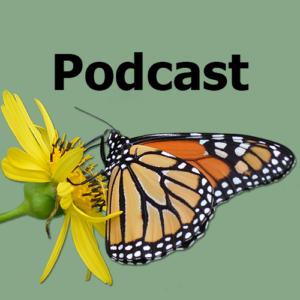 Many people believe that nature is only “out there” – in national parks, other large chunks of pristine land, or some far-off exotic place. For a long time, I did too. But the truth is that nature is everywhere and there are still plenty of discoveries to be made about the common species inhabiting our yards and communities. In addition to my love of learning about plants and animals, I also have a passion for teaching and sharing my love of nature with others. Backyard Ecology is one of the many ways that I have chosen to express that passion. I write a weekly Backyard Ecology blog and am so excited to be launching a Backyard Ecology podcast. Hi, my name is Shannon Trimboli, and I’m the host of Backyard Ecology. I live in southcentral Kentucky and am a wildlife biologist, environmental educator, beekeeper, author, and owner of a nursery specializing in plants for pollinators and wildlife conservation. I have always loved exploring nature and learning about different plants and animals. In this podcast, I will be talking with scientists, educators, and other experts about pollinators, backyard wildlife, gardening for pollinators and wildlife, new research and other news we should be aware of, specific things that can do to help, and many other topics. I have some amazing guests lined up and can’t wait to share our conversations. The first full episode should launch in early Dec. 2020. While we’re waiting for the official podcast launch, you can go to the Backyard Ecology website at www.BackyardEcology.net and take a look at some of my blogs. While you are on my website, you can sign up for my email list. Once you join the Backyard Ecology email list, you’ll get weekly emails with all our latest news including links to that week’s blog and podcast. I also have two quick favors to ask of you. First, go to your favorite podcast listening app and subscribe to this podcast. Second, tell your friends, social media contacts, and others about the Backyard Ecology podcast. Word of mouth and recommendations from someone we trust, is the fastest way for others to learn about a blog or podcast. Thank you so much for helping me spread the word about Backyard Ecology. If you have any questions or want to share your own nature-related discoveries, feel free to email me. I look forward to talking with you soon. Until then, I encourage you to make some time to go outside and discover the nature in your own backyards and communities. | |||
| 11 Nov 2021 | Diversity Matters When Gardening for Monarchs | 00:44:43 | |
 When it comes to gardening for monarchs, the most common thing you hear is “plant milkweeds.” Milkweeds are important, because they are the only thing that monarch caterpillars can eat. But they aren’t the whole story. In fact, having other types of flowering plants available can actually make your gardens more attractive to monarchs according to recent research from the University of Florida. In this episode of the Backyard Ecology podcast, we talk with Rebecca Nestle. Rebecca recently completed her Master’s degree at the University of Florida where she explored several different topics related to gardening for monarchs. Part of Rebecca’s research looked at how many eggs monarchs laid on focal milkweed plants in gardens composed only of milkweeds compared to gardens with several species that bloomed throughout the growing season. She also dove into another topic that relates to concerns we both often hear about monarch predators. In this part of her study, she compared the number of “natural enemies” (parasitoids and predators of monarchs) in mixed-species gardens compared to milkweed-only gardens. She then compared how well monarch caterpillars survived in each of those situations. Her results for all three of these studies were both surprising and exciting. Another part of Rebecca’s research that we discussed related to the effects of high nitrogen levels on swamp milkweeds (Asclepias incarnata). She again, conducted a study that compared monoculture stands of swamp milkweed and swamp milkweeds intermixed with other species. She then looked at the impacts of these treatments on monarch caterpillars. Once again, the results were a little surprising, and potentially a little comforting for people gardening for monarchs in urban environments, near golf courses, or in other heavily fertilized locations. Links
Episode image:
| |||
| 07 Dec 2023 | Top 10 Backyard Ecology Videos | 00:08:38 | |
Did you know that we have a Backyard Ecology YouTube channel? If you’re like many of the blog readers and podcast listeners who responded to our 2023 end-of-year survey, then answer is “probably not.” If you are one of our frequent viewers, thank you for coming on this journey with us. We enjoy reading all your comments on the videos. If you haven’t discovered the Backyard Ecology YouTube channel, then I encourage you to check it out. To get you started, here are the top 10 Backyard Ecology videos based on the number of views as of Thanksgiving 2023. The full transcript of this episode can be found at: https://www.backyardecology.net/top-10-videos/ 🌻 🌻 🌻 Thank you to our supporters on Patreon who go above and beyond each month to financially contribute towards making the Backyard Ecology blog, podcast, and YouTube channel possible. Thank you also to everyone who has made one-time donations to support the Backyard Ecology blog, podcast, and YouTube channel. 🌻 🌻 🌻 Episode related links: 🦋 YouTube channel: https://youtube.com/backyardecology Become a Backyard Ecologist: 🦋 The Backyard Ecologist’s Newsletter: https://www.backyardecology.net/subscribe/ Backyard Ecology content: 🦋 Website: https://backyardecology.net Support Backyard Ecology: 🦋 Patreon page: https://www.patreon.com/backyardecology
| |||
| 18 Aug 2022 | 5 Fall Blooming Native Plants I Love | 00:18:59 | |
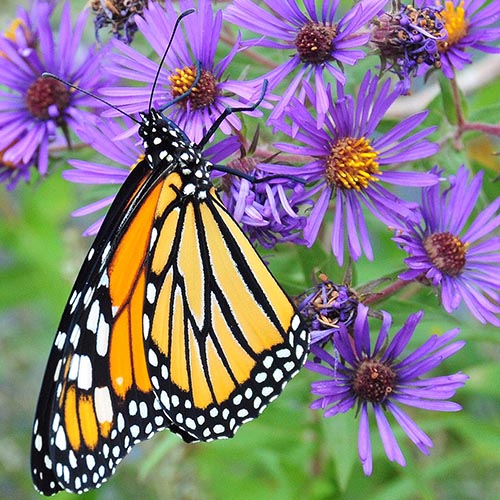 Fall is an extremely important time for pollinators, so having plenty of flowers available at this time of year is crucial if one of your goals is to attract pollinators. Luckily, there are lots of fall blooming, native plants that you can grow in your gardens. In the last Backyard Ecology podcast episode I talked about five late summer blooming native wildflowers that I love. Lots of people contacted me and said that they loved the episode and would like to hear more of my favorites. So, this time I thought I would share five of the fall blooming native plants that I love. I’m loosely defining fall as August through October. And just like last time, I’m not saying these are “the best native plants” to include in your pollinator garden. Because the best native plants for your yard and your goals, may not be the same plants that would be best for my yard, your neighbor’s yard, or for someone in a different state. These are simply a few of the many native plants that I love which bloom in the fall, that the pollinators love, that songbirds love, and which work well in a garden setting. You’ll have to decide if they are right for you or not. I’m also defining native as native to my area, which means you’ll have to double check whether these plants are native to where you live. To make it easier for you to refer back to particular parts of the podcast, here are the plants and the time I start talking about each:
Links:
Episode image:
| |||
| 17 Feb 2022 | Are Larger Patch Sizes Better When Planting for Pollinators? | 00:53:52 | |
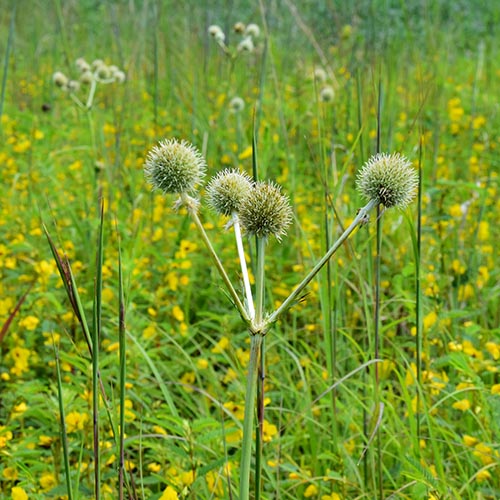 When it comes to planting for pollinators or gardening for pollinators, the traditional advice has always been to plant larger patch sizes or clumps of plants. The thought is that the larger patch sizes will be easier to see and more attractive to pollinators than smaller clumps or patch sizes. But saying that assumes that all pollinators are attracted to the same thing and that they respond to different species of plants in the same way. In this episode of the Backyard Ecology podcast, we talk with Tristan Barley. Tristan recently received his Masters degree from Miami University in Ohio, and is currently a PhD student in Entomology at the University of Illinois. The research that Tristan conducted for his Master’s thesis questioned the traditional advice. Tristan’s research looked at whether all pollinators prefer larger patch sizes and whether those preferences would vary not only based on the type of pollinator but also based on the type of plant. Perhaps, not surprisingly, he found that patch size preferences were different for some pollinators compared to others, specifically bumble bees and some of our tiny bees. He also found that the species of flower sometimes influenced the pollinator’s patch size preference. In addition, Tristan looked at how different patch sizes affected seed production in one of the plant species he studied. It was interesting to think about the influences of patch size from the plant’s perspective, and not just from the pollinator’s perspective. Our conversation discussed his research including what his findings meant from a practical standpoint and how we can apply his findings in our own pollinator gardens and pollinator plantings. We also talked about how many different types of animals visit flowers and how much happens on a flower. We both recommend taking time to just stare at a flower and enjoy getting to know everything that visits the flower. Links:
Episode image:
| |||
| 15 Jun 2023 | Learning to See and Identify Plants with Alan Weakley | 00:55:13 | |
If you’ve ever found a plant that you didn’t recognize and wanted to know what it was, then this episode is for you. We talk with Dr. Alan Weakley about learning to observe plants, how to identify plants, why that’s important, and some exciting new tools that are available to help us better recognize and appreciate the diversity of plants around us. Alan is the director of the University of North Carolina's Herbarium, which is located at the North Carolina Botanical Garden. He is also the author of the Flora of the Southeastern US and the newly released FloraQuest app. The full transcript of this episode can be found on the episode’s webpage: https://www.backyardecology.net/learning-to-see-and-identify-plants-with-alan-weakley/ Get a free copy of our e-book, An Introduction to Gardening with Native Plants: Hardiness Zones and Ecoregions, when you subscribe to our email. Subscribe at www.backyardecology.net/subscribe. Episode links:
* Amazon links are affiliate links. Backyard Ecology links:
Episode image:
| |||
| 17 Jun 2021 | Crossover Episode with Nature’s Archive: Charley Eiseman - Naturalist, Author, Innovator, and Leaf Mining Insect Specialist | 01:12:08 | |
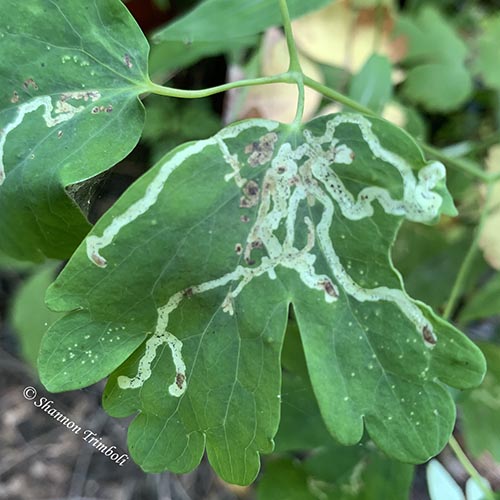 This episode is different from anything I’ve done before, because Michael Hawk, who hosts the Nature’s Archive podcast, and I are sharing each other’s episodes. One of the things I really like about the Nature’s Archive podcast is that in addition to the biology, Michael also digs into the stories of how his guests got to where they are. My personal experiences, plus those of the interns, volunteers, college students, and recent grads that I’ve worked with in the past have made me realize how valuable those stories are. So, often the thought is that we can’t be successful unless we know exactly what we want to do and forge a laser straight path forward. But that’s usually not the case. I think hearing that and discussing that can be so valuable and helpful for all of us. The Nature’s Archive episode that I chose to share with you is about leaf mining insects. Every year I notice the trails of leaf mining insects in my garden or on leaves out in the fields or woods. But I’ve never really gone much further than saying “Yep, leaf miner.” In this episode, however, Michael talks to Charley Eiseman who is a leaf mining insect specialist. Wow! I never dreamed leaf mining insects were so diverse and fascinating. I always assumed that they were all caterpillars, which I now know is not true. I’m definitely going to be looking at leaves with leaf mining insect trails a lot differently now. After listening to this episode, I highly encourage you to follow the link below to look at the original show notes for this episode on the Nature’s Archive Podcast. Michael has some cool pictures of leaf mining insect trails in leaves, as well as, links to the books and other resources that he and Charley talked about. While you’re visiting the Nature’s Archive website, you may find some other episodes that you would enjoy listening to. I know I’ve downloaded several that I want to listen. Oh! And check out Michael’s photography while you’re there. He has some amazing pictures. Links:
Episode image:
| |||
| 12 May 2022 | Checking In After 50 Episodes of the Backyard Ecology Podcast | 00:03:47 | |
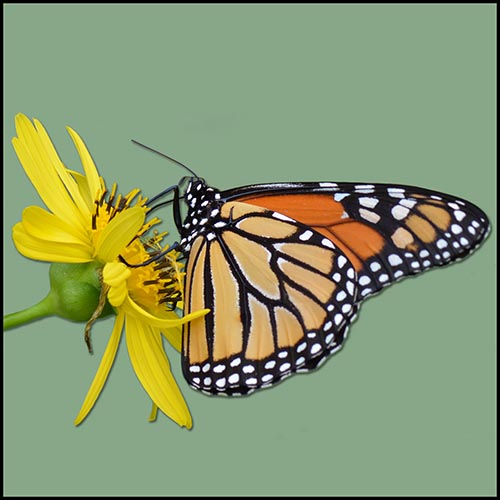 I can’t believe that I’ve been podcasting for a year and a half and that this is my 50th episode of the Backyard Ecology podcast! I am truly honored and humbled that so many people enjoy hearing what I have to say and are following the podcast. Looking back, we’ve covered such a wide range of subjects including:
I’m eternally grateful for all of the scientists, educators, and resource managers who have taken the time to talk with us. I’ve had so much fun learning from and geeking out with each of them. I also appreciate each of you who have taken the time to email me and share your own thoughts, experiences, and discoveries. Those emails always bring a smile to my face. As this 50th episode approached, I kept trying to think of the “perfect” topic to cover. After all, isn’t 50 supposed to be a big milestone? Regardless of whether we’re talking birthdays, anniversaries, or podcast episodes. But the more I thought about it, the more I realized that I really didn’t want to do a typical episode this time. Instead, I wanted to stop a second and check in with you. I wanted to find out your thoughts. After all, I don’t want to just be blabbering into the digital airwaves. I want the Backyard Ecology podcast to be valuable to you and that means I need to make sure it is meeting your needs. To allow me to more easily gather and distill everyone’s thoughts and feedback I’ve created a short survey. The link to the survey will be in the show notes and on the webpage for this episode. Please take a few minutes to fill out the survey. Your answers will help guide me as I produce future episodes of the Backyard Ecology podcast. The survey will be available until June 12, 2022. As a thank you for sharing your thoughts with me, anyone who fills out the survey will have the option to enter a drawing to win 1 of 5 copies of my new book, Attract Pollinators and Wildlife to Your Yard: 15 Free and Easy Ways. Before I wrap up, I wanted to say once again how grateful I am to my Patrons on Patreon who help support this podcast, for everyone who listens to this podcast, and to the guests who have shared their knowledge and passion with us. Until next week, I encourage you to take some time to enjoy the nature in your own yard and community. Links:
| |||
| 05 Jan 2023 | Ecology Based Landscaping with Larry Weaner | 01:01:12 | |
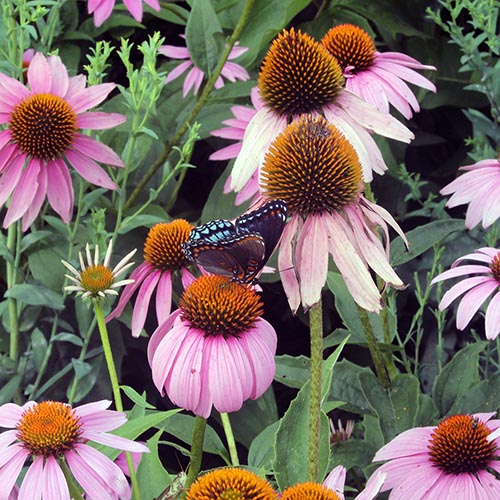 Do you want your yard to benefit nature, while also being a place that speaks to you and is somewhere you enjoy spending time? Would you love for your yard to also be a place your neighbors admire and that inspires them to create pollinator and wildlife friendly landscapes? In this episode of the Backyard Ecology podcast, we talk with Larry Weaner about how to achieve both those goals. Larry is a Landscape Designer and the founder of Larry Weaner Landscape Associates and its educational affiliate, New Directions in the American Landscape, or NDAL. He is also the author of the book, Garden Revolution. According to Larry, ecology based landscaping or ecological landscaping takes into consideration where and how native plants naturally grow then adapts that knowledge to your property. The goal is to create a landscape that not only benefits nature, but is also a place that speaks to you and is somewhere you enjoy being. One of the topics that came up several times, and in several different ways, was how we connect and engage with a place. The place-based parts of our conversation included not only personal connections, but also community connections. Community connection is important because if our ecology based landscaping connects with our neighbors, then they may replicate some of those principles on their own properties, thus increasing the ecological benefits. Another topic that wove its way throughout our conversation was maintaining and managing our landscapes. This topic came up multiple times and in multiple ways. As Larry said, there probably isn’t any such thing as a “no maintenance” landscape. Larry also talks about the biggest challenge he sees people face, especially when getting started. Larry is a wealth of knowledge when it comes to integrating ecological principles and landscape design. His approach is one that really resonates with me and has done so for several years. I encourage anyone who is interested in creating ecology based landscapes to read his book and look into his courses. Until next week, I encourage you to take some time to explore the nature in your own yard and community. Guest Links:
Backyard Ecology Links:
Episode image:
| |||
| 08 Apr 2021 | Reconnecting with the Natural World at Night | 01:04:55 | |
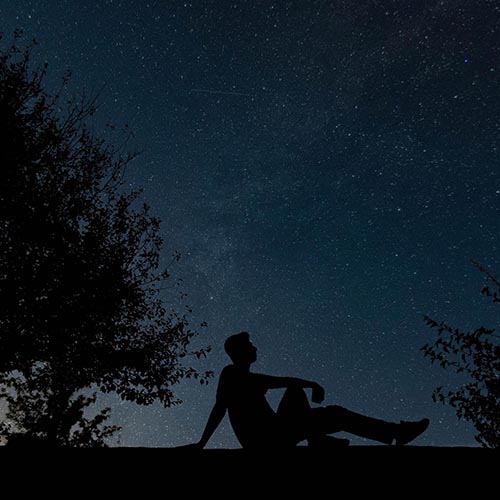 It is so easy to come home at the end of a long day, eat supper, and then just sink into the couch to veg out for a bit or keep ourselves busy with household activities that need to be done. I’ll be honest, I’m as guilty as the next person of falling into that trap. But nature doesn’t just stop when the sun goes down. Instead, a whole new world opens up and comes to life – a world that is just as interesting and fascinating as anything we find during the daytime. In this week’s episode of the Backyard Ecology, I talk with Bill Napper. Bill is a volunteer night naturalist at Bernheim Arboretum, a caver, an author, and much more. At Bernheim, Bill leads night hikes and other night programs that cover a variety of seasonal topics related to the natural world at night. He jokes that he has spent over a decade in the dark. Bill just has a general love of the night and enjoys sharing that passion with others. During our conversation, Bill and I talk about many different topics. Some of the animals we talk about include crickets and katydids, lightning bugs, the night jars (whip-poor-wills, chuck-wills-widows, poor-wills, and night hawks), moths, and bats. We also talk about the night sky, noise pollution, and light pollution. In addition, Bill offers tips for finding formal night programs that you can participate in, as well as, ways you can enjoy the natural world at night in your own backyard. You really don’t have to travel to the middle of nowhere to experience nature’s night life. There is likely a lot going on in your own yard. This was just an easy, fun conversation that touched on lots of different topics related to the natural world at night. We don’t dive too deep into any of the topics we discussed. We’ll do that in other episodes. Our goal with this episode was simply to remind all of us about how captivating nature’s night life can be, and hopefully inspire us to make the time to go outside at night and reconnect with the nocturnal world in our own ways. Links:
Episode image:
| |||
| 09 Dec 2021 | Liking lichens: A Glimpse into the Fascinating World of Lichens | 01:06:31 | |
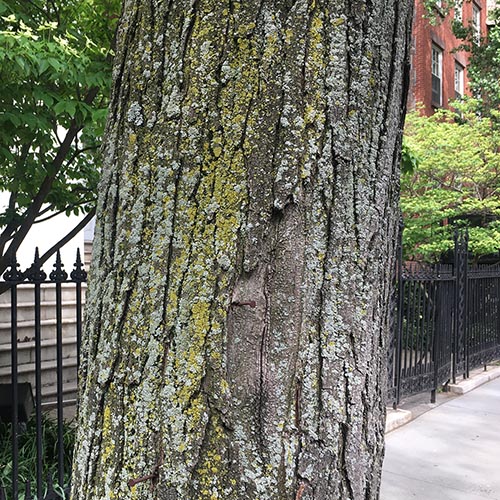 Lichens are AMAZING organisms. You can find them practically everywhere from very urban areas to very rural areas. You can find them growing on trees, rocks, buildings, benches, and all kinds of different things. But many of us really don’t know a whole lot about lichens. In today’s episode of the Backyard Ecology podcast, I talk with Dr. James Lendemer. James is the lichenologist at the New York Botantical Gardens and a professor at the City University of New York. He also co-authored the book, Urban Lichens: A Field Guide for Northeastern North America. Our conversation dives into many different realms of the fascinating world of lichens. James and his colleagues say that “Lichens are a lifestyle,” because lichens don’t have a single common ancestor like you would find for all sunflowers or all oak trees. Instead, lichens have evolved multiple times in multiple different types of fungus. In some ways saying a fungus is a lichen is like saying an animal is an herbivore, carnivore, or parasite. It is simply describing a feeding style. We also talked about how lichens are made up primarily of a fungus and either an algal or cyanobacteria, but also include all kinds of other organisms. Each lichen is kind of like its own little ecosystem. It’s also the fungus that determines the species of lichen. Depending on the species of lichen, the individual lichens could all share the same species of algal or cyanobacteria or the individuals could contain different species of algae and cyanobacteria. It can get complicated, but very intriguing at the same time. James and my conversation covered many other topics including how most species of lichens in eastern North America can be identified in the field with a hand lens and a good field guide. The new book, Urban Lichens: A Field Guide for Northeastern North America, that he co-authored with Jessica Allen and Jordan Hoffman provides one such field guide. Urban Lichens was primarily written as a field guide to the lichens in New York City and other large urban areas in the northeast, but it isn’t good only in urban areas. Many of the species found in those areas are also the most common species found in yards throughout the temperate regions of eastern North America. That makes it a great option for those of us wanting to learn more about the lichens in our own yards and communities, regardless of whether we live in a large metropolitan area, a suburban area, or a more rural area. Links:
Episode image:
| |||
| 28 Oct 2021 | Bats and Bat Houses | 01:01:25 | |
 Bats are often associated with Halloween and relegated to roles in scary movies, but they are so much more. Bats are very diverse and fascinating creatures that play an invaluable role in our ecosystem. I love the fact that more people seem to be recognizing this and wanting to do things like put up bat houses and make their yards more bat friendly. In this episode, I talk with Reed Crawford. Reed is a PhD student in Ecology, Evolution, and Conservation Biology at the University of Illinois at Urbana-Champaign. He is studying bats and how they thermoregulate. His research has lots of implications for how we can make our bat houses safer for and more attractive to bats. Reed and I start out talking about some of the common myths we hear about bats and the many threats that bats face. We then move on to discuss how bats need roosting spots with different conditions depending on factors like the time of year and the reproductive stage of the bat. The temperature of the site throughout the day and night is one of those important conditions, especially for moms and their young (pups). Unfortunately, sometimes our bat houses can provide nice, warm, attractive conditions for mother bats to raise their young, but on our really warm summer days can get too hot and potentially kill the bats. Part of Reed’s research is looking at different modifications we can make to bat houses to make them safer for the bats. We talk about many of those modifications including a different style of bat house called a rocket box, that doesn’t look like the flat boxes that are commonly sold as bat houses. In addition to Reed’s research, we talked about suggestions for putting up a bat house and improving the bat habitat around our homes. One of the questions Reed and I both commonly get in regards to bat houses, is “Why aren’t bats using the bat house that I put up?” Unfortunately, there isn’t a simple answer to that question. It often depends on a number of different factors. But, hopefully Reed’s research and those of others pursuing similar questions, will help us give more solid answers to that question in the future. Links
Episode image:
| |||
| 31 Dec 2020 | Native and Non-native Earthworms in the Eastern U.S. with Mac Callaham | 00:53:27 | |
 Hi Everyone! Today we are talking with Mac Callaham who is a Research Ecologist with the Southern Research Station of the U.S. Forest Service. Mac’s focus is on invasive species, with a specialty in soil animals, especially earthworms. Like many people, I grew up thinking that earthworms were a good thing and a natural part of our ecosystem. However, that’s not completely true. In North America, many of our earthworms were wiped out during the Ice Age either directly from the glaciers or because the ground, even quite a distance out from the glaciers, was frozen. We still have some native earthworms in the Pacific Northwest and parts of the southeast, but we also have quite a few non-native species of earthworms. Some of these non-native earthworm species have probably been here since the early European colonists arrived and brought their plants with them. Other species are much newer arrivals – some being discovered for the first time within the last few years. The impacts of these non-native earthworms depends on where they are found. In more northern parts of the continent, the effects of the non-native earthworms can be devastating to the ecosystem. This is because the local ecosystem existed for so long without earthworms in it. However, in areas where there were native earthworms, the impacts are often not quite so drastic, but that doesn’t mean there are no impacts. In many areas of the southeast, non-native earthworms are much more common than native species. Yet, even though the species composition has changed, we aren’t always seeing the same sort of dramatic impacts that are being seen further north. Part of that could be because those species have been in the southeast longer and part of it is likely that those species of non-native earthworms are doing some of the same things as the native earthworms in this area. However, some of the more recently discovered species of non-native earthworms can have quite drastic effects, even in the southeast, because their feeding behaviors are very different from the native species. Throughout this episode, Mac and I talk about the different types of earthworms, their impacts in various parts of the region, how much we don’t know, and how there really isn’t a simple, black and white answer when it comes to earthworms. Yes, non-native earthworms can have serious, negative impacts on the natural ecosystem, especially in parts of the continent. But in other areas, earthworms, even non-native species, can help soil health, especially in southern regions that have been highly impacted through long-term agricultural use. This is a complicated topic and we talk about some of those complications, including things that we as homeowners can do. Links:
Photo credit: Yuanyuan Li | |||
| 05 Oct 2023 | Resharing Your Favorites: Gardening with Native Plants | 01:03:07 | |
Did you know that common milkweed isn’t native to Georgia? Or that there are many native plants which can be grown in large pots on a patio or balcony? Or that some simple “cues to care” can significantly change how a native plant garden is perceived by others? I originally recorded this conversation with Jennifer Ceska in the spring of 2022. A year and a half later it is, by far, my most downloaded episode to date. We had an amazing conversation that covered a wide range of topics related to gardening with native plants. So, I thought I would reshare it with the transcript so that those who missed it the first time or who prefer to read the transcripts can enjoy it too. Jennifer is a Conservation Coordinator with the State Botanical Garden of Georgia at the University of Georgia, Athens. The full transcript of this episode can be found at: https://www.backyardecology.net/reshare-gardening-with-native-plants Until next week I encourage you to take some time to explore the nature in your yard and community. 🌻 🌻 🌻 Anthony and I have been exploring new ways to better serve you. Our group coaching programs have evolved out of our desire to help you and other members of our Backyard Ecology audience in a deeper, more personal way. These are offered on a seasonal basis and are designed to address some of our most asked questions in a way that allows you to ask questions and get personalized feedback for your unique situation. If you want to learn more about our group coaching programs, go to https://www.backyardecology.net/group-coaching/. And, if you’re listening to this episode shortly after it goes live and want help designing your pollinator and wildlife garden, then you’re in luck. Our next group coaching program, Design Your Pollinator and Wildlife Oasis: Garden-sized Plots, starts in just a few days. But don’t wait, registration closes on October 9, 2023, and we don’t plan to offer this specific group coaching program again until at least the summer of 2024. 🌻 🌻 🌻 Thank you to our supporters on Patreon who go above and beyond each month to financially contribute towards making the Backyard Ecology blog, podcast, and YouTube channel possible. Thank you also to everyone who has made one-time donations to support the Backyard Ecology blog, podcast, and YouTube channel. 🌻 🌻 🌻 Episode Links: 🦋 Jennifer’s email: jceska@uga.edu 🦋 Best Milkweed for Georgia Gardens brochure: https://botgarden.uga.edu/wp-content/uploads/2018/03/milkweedinformation.pdf 🦋 State Botanical Garden of Georgia: https://botgarden.uga.edu/ 🦋 Georgia Plant Conservation Alliance: https://botgarden.uga.edu/conservation-science/georgia-plant-conservation-alliance/ 🦋 Georgia Native Plant Initiative: https://botgarden.uga.edu/conservation-science/georgia-native-plant-initiative/ 🦋 Connect to Protect: https://botgarden.uga.edu/conservation-science/connect-to-protect/ 🦋 Georgia Pollinator Plants of the Year Program: https://botgarden.uga.edu/conservation-science/pollinator-plant-program/ 🦋 Georgia Grasslands Initiative iNaturalist project: https://www.inaturalist.org/projects/georgia-grasslands-initiative-ggi
Become a Backyard Ecologist: 🦋 The Backyard Ecologist’s Newsletter: https://www.backyardecology.net/subscribe/ 🦋 Backyard Ecology Community: https://www.backyardecology.net/community/ 🦋 Group coaching: https://www.backyardecology.net/group-coaching/
Backyard Ecology content: 🦋 Website: https://backyardecology.net 🦋 YouTube Channel: https://www.youtube.com/backyardecology 🦋 Blog: https://www.backyardecology.net/blog/
Support Backyard Ecology: 🦋 Patreon page: https://www.patreon.com/backyardecology 🦋 Make a one-time donation: https://www.paypal.com/biz/fund?id=K7F3HJLJT9F8N
| |||
| 22 Dec 2022 | Top 10 Most Popular Backyard Ecology Episodes: Thanksgiving 2021 – Thanksgiving 2022 | 00:17:07 | |
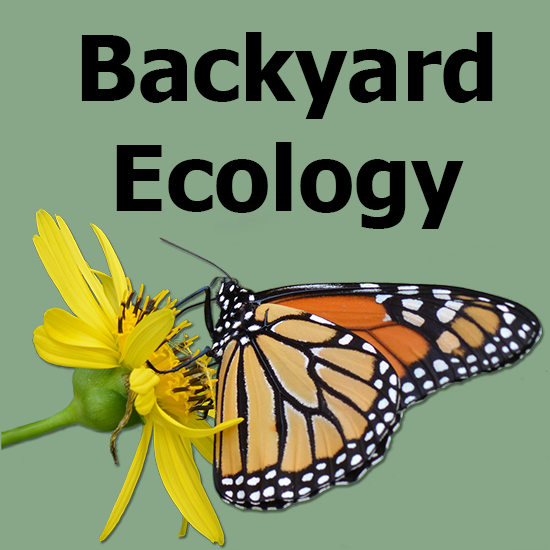 Over the past year, we’ve had some amazing conversations with a variety of highly talented and passionate people. I am very grateful to them for sharing their enthusiasm and knowledge with us. What was your favorite episode of the year, and why? Please let us know in the comments. For today’s episode, I’m going to quickly review the 10 most popular Backyard Ecology episodes that were published between Thanksgiving 2021 and Thanksgiving 2022. 10) 5 Late Summer Blooming Native Plants I Love: https://www.backyardecology.net/5-late-summer-blooming-native-plants-i-love/ (1:42) * Note: Numbers 3, 4, and 5 were essentially a 3-way tie. There were only 9 downloads separating numbers 3 and number 5. I listed them in the order that they were on the day that I looked at the stats. But I have no doubt that if I had looked at the numbers on a different day, then they could very easily have been in a different order. Bonus: A Glimpse into the Fascinating World of Cedar Glades: https://www.backyardecology.net/a-glimpse-into-the-fascinating-world-of-cedar-glades/ (14:47) I hope you enjoyed that review of the most popular episodes published between Thanksgiving 2021 and Thanksgiving 2022. Please help Backyard Ecology continue to grow by telling others about the Backyard Ecology blog, podcast, and YouTube Channel. I wish you the happiest of holiday seasons and until next week, I encourage you to take some time to explore the nature in your own yard and community. Links:
| |||
| 09 Jan 2025 | We’re back! | 00:03:26 | |
Summary Going forward, in addition to the traditional audio version of the podcast episodes, there will also be a video version available for the episodes with guests. The video version will be available on the Backyard Ecology™ YouTube channel.
Links and Resources
Thank You Thank you to our amazing Patrons who go above and beyond every month to provide financial support which helps us create so much free content for everyone to enjoy and learn from. | |||
| 23 Dec 2021 | Top 10 Backyard Ecology Podcast Episodes in 2021 | 00:09:28 | |
 The first “real” episode of the Backyard Ecology podcast went live on December 3, 2020. (Technically that was episode 2, but I don’t count the introduction episode as a “real” episode because all I was doing was telling you that I was going to start the Backyard Ecology podcast.) This is episode 40, and we are fast approaching 25,000 total downloads. I am excited by how both the Backyard Ecology blog and the Backyard Ecology podcast have grown over the last year, and I am thankful to all my listeners and readers. In this episode of the Backyard Ecology podcast, I thought it would be fun to review the top 10 most downloaded episodes in 2021. Maybe you’ll find one that you missed, or be reminded of one that you wanted to listen to but then forgot about. Hopefully, you’ll also be reminded of some of the episodes that you really enjoyed. Also, let me know in the comments what your favorite episode was this year. Was it one of these? Or was it another one that didn't make the top 10 list? I know there were a lot of good episodes that didn't quite make the top 10 list. Top 10 most downloaded Backyard Ecology podcast episodes this year10) NRCS Programs for Pollinators and Wildlife - https://www.backyardecology.net/nrcs-programs-for-pollinators-and-wildlife/ 9) Deer Ticks and Lyme Disease - https://www.backyardecology.net/deer-ticks-and-lyme-disease-why-is-lyme-disease-more-common-in-the-north/ 8) Winter Hummingbirds in the Eastern U.S. - https://www.backyardecology.net/winter-hummingbirds-in-the-eastern-u-s/ 7) Bats and Bat Houses - https://www.backyardecology.net/bats-and-bat-houses/ 6) Acorns, Birds, Reptiles, Amphibians and More: Responses to Forest Disturbances - https://www.backyardecology.net/acorns-birds-reptiles-amphibians-and-more-responses-to-forest-disturbances/ 5) Mysterious Bird Deaths of 2021 - https://www.backyardecology.net/mysterious-bird-deaths-of-2021-digging-deeper-into-the-bird-mortality-event/ 4) Growing Native Plants in Small Yards - https://www.backyardecology.net/growing-native-plants-in-small-yards/ 3) Growing Native Plants: Insights and Stories from 3 Native Plant Nurseries - https://www.backyardecology.net/growing-native-plants-insights-and-stories-from-3-native-plant-nurseries/ 2) A Conversation with the Co-Hosts of the Native Plants, Healthy Planet Podcast - https://www.backyardecology.net/a-conversation-with-the-co-hosts-of-the-native-plants-healthy-planet-podcast/ 1) Factors that Make Pollinator Gardens More Attractive to Pollinators - https://www.backyardecology.net/factors-that-make-pollinator-gardens-more-attractive-to-pollinators/ Bonus episode:Some people prefer listening to podcasts on YouTube, but YouTube views don’t count as downloads. So, for a bonus, I wanted to share the most viewed episode on YouTube. That episode is:
| |||
| 20 Jan 2022 | Songbirds, Fire, and Seed Dispersal | 00:52:10 | |
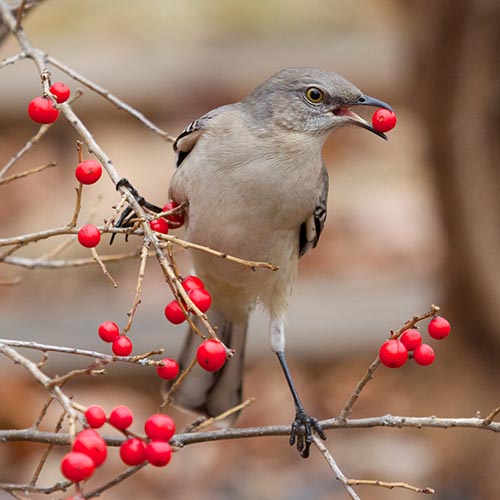 Sometimes you read or hear something that makes you say, “Wait a minute! What?” It was one of those moments that led to this episode. In this episode of the Backyard Ecology podcast, I talk with David Mason. David is a PhD candidate at the University of Florida who has been doing some really interesting work related to songbirds, seed dispersal, and disturbed areas. Open habitats such as grasslands, shrublands, and open woods are often very rich in bird diversity and abundance. Fires used to be a relatively common occurrence in these areas and would help them remain open instead of growing up into closed canopy forests. Many of these areas are adapted to fire, but we don’t always realize it because fires have been suppressed for centuries. Over the last few decades, however, the use of prescribed fires for maintaining open habitats has become increasingly common. Much of David’s research is focused on seed dispersal by songbirds after a prescribed fire. David shares this research with us including the types of seeds that birds are bringing to his research sites. We also talk about what he isn’t finding, which is actually why I wanted to have him as a guest on the podcast. We not only discuss his findings, but also the potential implications and applications of those findings. David’s research on songbird-mediated seed dispersal after prescribed fires is the main focus of our conversation. However, his broader interest is in seed dispersal after a variety of disturbance events – prescribed fire being just one type of disturbance and songbirds being just one method of dispersal. Towards the end of our conversation, we briefly touch on another branch of his seed dispersal research. This is a connection that I don’t know if I ever would have thought about on my own, but it raised some interesting questions for me and made me think about things a little differently. Links:
Episode image:Mockingbirds and other songbirds can be important agents for seed dispersal. | |||
| 11 Mar 2021 | Lightning bugs and Fireflies – A conversation with Lynn Faust, Part 2 | 00:50:40 | |
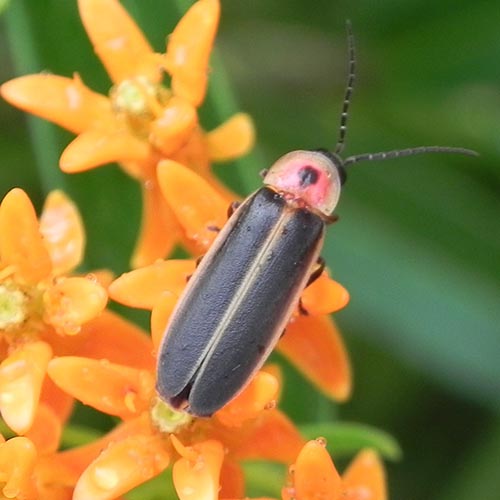 This week’s episode of the Backyard Ecology podcast is the conclusion of our conversation with Lynn Faust. Lynn is the author of Fireflies, Glow-worms, and Lightning Bugs: Identification and Natural History of the Fireflies of the Eastern and Central United States and Canada. In this episode, we continue to just geek out about lightning bugs. Once again, this is a very informal conversation that includes stories and more educational content. If you haven’t listened to the previous episode, then I encourage you to go back and listen to Episode 15, which is part 1 of this conversation. We ended the previous episode talking about the larvae of the Pyractomena or Spring Tree Top Flasher fireflies and how they are so special because they pupate on the sides of trees where we can see them. And they do this in the late winter / very early spring, basically the late Feb. or early March timeframe in Kentucky and Tennessee. We jump right back into that conversation with Lynn describing some of Pyractomena’s mating behaviors and why they might choose to come out so early. Much of the story of lightning bugs and fireflies revolves around the theme of just paying attention, making observations, sharing what you see, and asking questions. People doing those things have led to the discovery of new species like the synchronized fireflies of the Smokies and the Low Country Ghost. Other people have been able to help better document the range of a given species like the Pink Flashers. Those activities have also led to recognizing previously overlooked behaviors like the fireflies nectaring on milkweeds. There’s so much out there to learn and discover if we’re willing to open our eyes and pay attention. Lightning bugs, like many other insects, also face some threats. The main threats to lightning bugs are light pollution, pesticides in the soil, soil compaction, and habitat loss. Lynn talks about these threats and realistic ways that we can make our yards more firefly friendly. She takes a very balanced approach that basically boils down to being aware of how your actions might affect lightning bugs or other organisms and then making the best choices for you and your situation. I, for one, appreciate that balance. Lynn also shares some tips for observing lightning bugs. Again, if you missed the first part of this conversation, then I encourage you to go back to episode 15 and listen to it. In that episode, Lynn shared the story of how she went from just watching the lightning bugs to becoming “The Lightning Bug Lady.” We also talked about some of the different species found in the eastern U.S., how to identify firefly species, and the general life history of fireflies. I hope you enjoy both these episodes. Links:
Episode image:
| |||
| 15 Apr 2021 | Eastern Bluebirds: Biology and Tips for Attracting | 00:44:50 | |
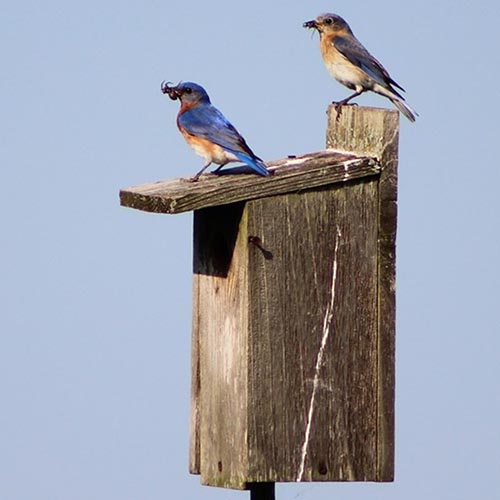 Eastern bluebirds are a conservation success story. Their numbers plummeted in the early 1900s. Then in the 1960s and 70s, consorted efforts were started to establish bluebird trails and similar programs. Growing up in the late 1970s and 1980s, I remember often hearing about the plight of the eastern bluebird and the need to put up nest boxes for them. Today, their numbers have rebounded and they are considered a low conservation concern. In this week’s episode of the Backyard Ecology podcast, we talk with Michael Patton. Michael is an Avian Biologist with the Kentucky Department of Fish and Wildlife Resources. He also recently completed a research project looking at eastern bluebird nesting behavior. During our conversation we talk about some general life history traits of the eastern bluebird including population trends, mating behaviors, and nesting behaviors. We also talk about Michael’s research looking at the factors that influence how many clutches a pair of eastern bluebirds will have in a year including provisioning rates of each parent. Michael also shared with us a variety of tips for attracting bluebirds to our properties. Instead of jumping straight to “put up a bluebird house.” Michael took a big picture view with his answer. He discussed the need to provide the right type of vegetative habitat, the different types of food eastern bluebirds need and how to provide those, and then of course the need to provide cavities for the bluebirds to use as nesting sites. Whenever possible, Michael provided both natural and artificial alternatives. For example, when it comes to providing nesting cavities he suggested leaving standing dead trees for natural cavities if it was safe to do so as a natural option, or providing bluebird nest boxes as an artificial option. We wrap up the conversation with Michael sharing some interesting facts that he learned while doing his research. Links:
Episode image:
| |||
| 27 Oct 2022 | Monarch Butterflies and OE (Ophryocystis elektroscirrha) | 01:07:47 | |
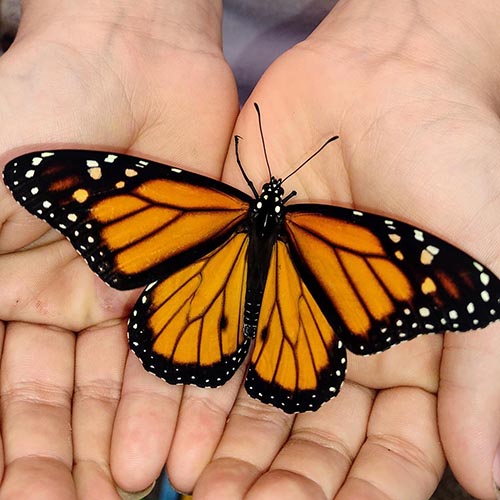 Monarch butterflies have become an increasingly hot topic in recent decades, and especially in the last couple of years. Conversations about monarchs often revolve around topics like their migrations, the importance of milkweeds, or other flowers we can plant for monarchs. Rarely do the topics of monarch health or monarch diseases come up. Yet these can also be fascinating and important topics to learn about and discuss. In this episode of the Backyard Ecology podcast, we are joined by Dr. Sonia Altizer and Kade Donaldson. Sonia is a Professor of Ecology at the University of Georgia and Kade is the Project Manager for Monarch Health which is a community science project based out of the University of Georgia. Most of our conversation revolves around the tiny protozoan, Ophryocystis elektroscirrha, more commonly referred to by its initials: OE. OE is a parasite of monarch butterflies that has been interacting with monarchs for the past several centuries, at least, and likely for almost as long as there have been monarchs. However, over the last couple of decades, something has changed. OE has gone from being relatively rare to infecting very high percentages of some monarch populations. Exactly what has changed is still a topic of ongoing research, but the increased prevalence of OE appears to correlate to changes in human activities. The goal, therefore, is to determine what has changed and find ways to keep OE from spreading any more than it would naturally spread. One of the ways that OE infections are being studied is through Project Monarch Health. Project Monarch Health is a community science project that asks members of the public to help document OE infections throughout the country. Anyone can participate in this project which is based out of the University of Georgia, and we talk about Project Monarch Health quite a bit during our conversation. Other topics that we discussed are some of the common questions they get through Project Monarch Health. Those questions include ways people can help monarch butterflies and inquiries about raising monarchs. We also talked about how monarchs are only one part of the larger ecosystem. Protecting and conserving monarchs can also help lots of other organisms, but we need to be careful not to get so focused on monarchs that we lose sight of the big picture. Links:
Episode image
| |||
| 16 Nov 2023 | Resharing Your Favorites: Winter Hummingbirds | 00:59:25 | |
Did you know that some hummingbirds will overwinter in the eastern U.S.? These aren’t our normal ruby throated hummingbirds that visit our feeders and yards all summer long. These are often western species of hummingbirds, like the rufus hummingbird. Winter hummingbirds aren’t common, and they become less common the further you are from the southern coastal plains; however, they aren’t unique either. I can tell you from personal experience that it is SOOOO much fun to host one if you’re lucky enough to have one show up on your property. I originally recorded this conversation with Brainard Palmer-Ball in the fall of 2021. Brainard is a retired zoologist from the Office of Kentucky Nature Preserves and is the person who banded my winter hummingbird when it showed up over a decade ago. The full transcript of this episode can be found at: https://www.backyardecology.net/reshare-winter-hummingbirds Until next week I encourage you to take some time to explore the nature in your yard and community. 🌻 🌻 🌻 🌻 🌻 🌻 Thank you to our supporters on Patreon who go above and beyond each month to financially contribute towards making the Backyard Ecology blog, podcast, and YouTube channel possible. Thank you also to everyone who has made one-time donations to support the Backyard Ecology blog, podcast, and YouTube channel. 🌻 🌻 🌻 Episode related links: 🦋 Operation Ruby Throat: http://www.rubythroat.org/ Become a Backyard Ecologist: 🦋 The Backyard Ecologist’s Newsletter: https://www.backyardecology.net/subscribe/ Backyard Ecology content: 🦋 Website: https://backyardecology.net Support Backyard Ecology: 🦋 Patreon page: https://www.patreon.com/backyardecology | |||
| 23 Jan 2025 | From Suburban Yard to Wildlife Haven: Amanda’s Story | 00:43:13 | |
Summary Amanda shares the journey she and her husband have taken to transform their small, suburban yard into a vibrant habitat for birds and pollinators. We discuss the various projects they’ve undertaken, the challenges of DIY landscaping, the importance of community support, and the positive reactions from neighbors and family. Their story shows how creating wildlife habitat can benefit both the environment and the property owners’ well-being. Amanda encourages others to start small, focus on native plants, and seek community support to achieve similar successes. Today’s guest Amanda is a mom, medical writer, former biomedical researcher, and nature enthusiast who lives in middle Tennessee on a small, suburban lot. I met Amanda about a year ago when she joined a small group coaching program we were offering in the Backyard Ecology™ Community. She dove right in and continued as community member after the coaching program was done. 3 things you’ll learn from this episode
Bonus content Resources Amanda mentioned Other Backyard Ecology resources Thank you Thank you to our amazing Patrons who go above and beyond every month to provide financial support which helps us create so much free content for everyone to enjoy and learn from. | |||
| 22 Jul 2021 | Deer Ticks and Lyme Disease: Why is Lyme disease more common in the north? | 00:53:18 | |
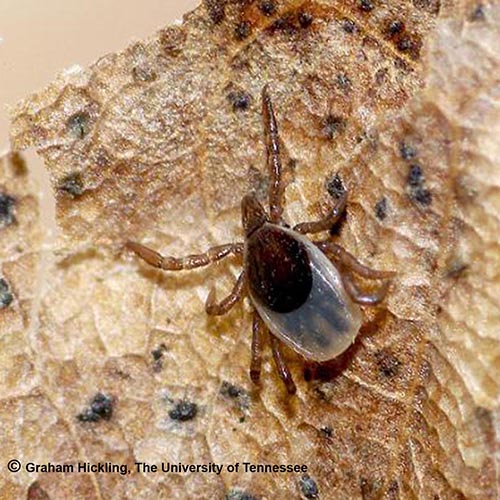 Lyme disease is our most common tick-borne disease and it is estimated that there are around 400,000 cases each year. Black-legged ticks or deer ticks (Ixodes scapularis) are the only species of tick that carries Lyme disease in the eastern U.S. Although deer ticks are found throughout the eastern U.S., Lyme disease is much more common in the northeast, than it is in the southeast. In this episode of the Backyard Ecology Podcast, we talk with Dr. Howard Ginsberg. He is a Research Ecologist with the Eastern Ecological Science Center of the U.S. Geological Survey. Recently, he and a number of his colleagues published a journal article about their research into why Lyme disease is more common in the north. Our conversation covers a number of different topics from basic tick biology to the research and their conclusions. One of the things that really stood out to me about their research was just how complicated the issue is. It isn’t as simple as just looking at how common deer ticks are in your area. Instead, deer ticks in different parts of the country often choose different hosts, and not all of those hosts are equally likely to transfer the bacterium that causes Lyme disease. The immature ticks also have different behavioral patterns depending on where they are from. All of these factors help to contribute to our risk of catching Lyme disease in different regions of the country. Ticks may not be our favorite organisms. I’ll admit to having no great love for them. But, as people who enjoy nature and presumably spend quite a bit of time outside, I think it is important to understand our risks of catching different tick-borne diseases. The recent research by Dr. Ginsberg and his colleagues shines an important light on how complicated this topic is and how behavioral and ecological factors at a regional level can impact risks of contracting Lyme disease. This is one of those situations where the answers can be complicated, but at the same time fascinating and intriguing. It also shows just how much we still have to learn. Links:
Episode image:
| |||
| 06 Jan 2022 | Habitat Management and Observing Nature in the Winter | 00:52:45 | |
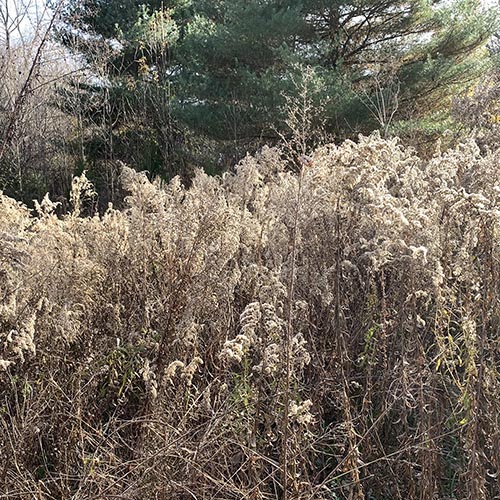 Winter is often depicted as being dark and cold. A time to slow down and spend more time inside, than outside. But winter can be a really great time for observing nature and doing many habitat management activities. Habitat management activities that we can do in the winter is a topic that I get asked about frequently. So, I thought it might be helpful to share with you some of the things that we do on our farm at this time of year or that we recommend to others. In this episode of the Backyard Ecology podcast, we’re talking with Anthony Trimboli. You may remember Anthony from the trail camera episode he did with us several months ago. Anthony is a wildlife biologist and my husband. He also helps me with my nursery and habitat consulting business. Anthony and my conversation is very fluid. We cover a wide range of habitat management activities such as identifying and treating invasive species, identifying erosion issues that may need to be addressed in the future, cutting trees, and planting. Our conversation also frequently wanders from habitat management activities to more general activities related to observing nature. That only made sense to us, because being able to see and enjoy the nature on our property is one of the reasons why we do the habitat work that we do. Some of the nature observations we frequently like to do in the winter are search for cool native plants, look for vernal pools and observe the animals found there, look for shed antlers, and watch the birds. Hopefully, you enjoy are our conversation and find it helpful as you think about activities to do on your property this winter. Links:
Episode image:
| |||
| 18 Mar 2021 | The Fascinating World of Frogs and Toads in the Eastern U.S. | 01:07:28 | |
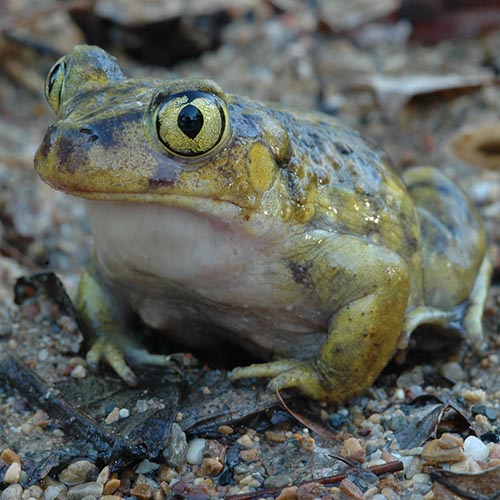 Frogs and toads are so much fun to observe and learn about. In the eastern U.S. we are lucky because we have enough water that they can be found virtually anywhere. Some species may be very specific in their habitat needs, but others are fairly general and can be found in urban areas as well as more rural areas. In this week’s episode of the Backyard Ecology podcast, we are talking with Dr. Cy Mott. Cy is an associate professor of biology at Eastern Kentucky University. His focus is on amphibian ecology, which of course, includes frogs and toads. (Toads are actually a subgroup within frogs. So, all toads are frogs but not all frogs are toads.) During our conversation, Cy shared with us the important roles that frogs and toads play in the ecosystem. He also talked about the threats that frogs and toads face. This led to a discussion about some of his current research on the impacts of bush honeysuckle on aquatic habitats and tadpole survival. I found his research and the potential implications of that research very intriguing. Cy and I also discussed how to make our yards more frog and toad friendly. You can create a pond or vernal pool if you want, but it isn’t necessary. There are plenty of other ways to provide habitat for frogs and toads. We also talked about some of the different species that we could find around our homes or in other locations, and recommendations for how to start learning to identify the different species you find. In the eastern U.S., we have around 45 species of frogs and toads. Frogs and toads are fairly well studied in the U.S., especially compared to some of our less-charismatic organisms. However, even with as well-studied as frogs and toads are, a new species was still identified not too long ago near New York City. To me, this just continues to show the importance of paying attention and sharing our observations. Links:
Episode image:
| |||
| 06 Mar 2025 | How to Do Spring Garden Cleanup for Pollinators and Wildlife | 00:10:46 | |
Summary As gardeners, it’s common to get the gardening itch in late winter and early spring. The temptation to finish cleaning up our gardens during this time is a natural temptation. However, when doing your spring garden cleanup, it’s important to remember why you didn’t do those activities in the fall. Remembering that can help you choose what to do and when so that you can best support the pollinators and wildlife that visit your property. 3 things you’ll learn from this episode:
Other Backyard Ecology resources:
Thank you Thank you to our amazing Patrons who go above and beyond every month to provide financial support which helps us create so much free content for everyone to enjoy and learn from. Get customized help There are lots of great “big picture” information available about creating pollinator gardens or larger habitats for pollinators and wildlife. But, there are far fewer opportunities to say, “This is what I want to do. This is what I’m struggling with. How do I make it work on my property?” That’s part of what the Backyard Ecology™ Community offers its members every day. If you live in the eastern U.S. and would like personalized help creating your own pollinator and wildlife habitat, then we invite you to join the Backyard Ecology™ Community. Learn more: https://www.backyardecology.net/community/ | |||
| 08 Dec 2022 | The Christmas Bird Count: An Over 120 Year Tradition | 00:47:00 | |
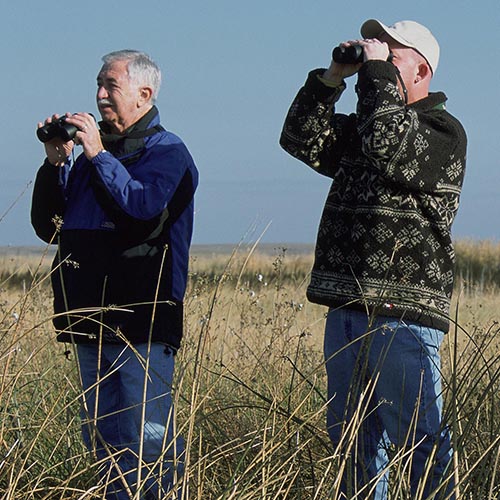 The Christmas Bird Count, also known as the CBC, began in 1900. For the past 122 years, volunteer birders of all ages and abilities have gathered together to conduct surveys of the birds found in their areas. The Christmas Bird Count is the longest running, community science or citizen science program in the U.S. and has spread to Canada and many other countries. The data collected through the Christmas Bird Count are extremely valuable and have been used in numerous scientific papers. Perhaps the most well recognized of those papers in recent years is the one published in 2019 citing the drastic decline in bird populations over the past roughly 50 years. In this episode of the Backyard Ecology podcast, we are joined by James Wheat. James is the President of the Kentucky Ornithological Society and the Regional Editor for the Christmas Bird Counts in Kentucky. During our conversation, James and I talk about what the Christmas Bird Count is and why it is so important. He also shares with us what happens on a Christmas Bird Count, who can participate (spoiler alert: anyone who enjoys birdwatching), how people can get involved, and some of his favorite CBC experiences. Just as a quick reminder, every week, I send a short email with links to the most recent Backyard Ecology blog article, podcast episode, and video, as well as, any other news of interest. It’s the best way to make sure that you never miss anything in the Backyard Ecology world. You’ll also get a free e-booklet as my gift to you when you join my email list. If you haven’t signed up, then please do so using the link below. Until next week, I encourage you to take some time to enjoy the nature in your own yard and community. Related Links:
Backyard Ecology Links
Episode image:
| |||
| 10 Aug 2023 | Exploring Urban Ecology: Understanding and Appreciating Nature Where We Live | 00:55:25 | |
Did you know that urban ecology doesn’t just apply to big cities and towns? Even if you live in a fairly rural area, if there is a lot of interaction between where you live and a nearby town or city then you may fall into the broad category of urban ecology. That means urban ecology is likely to apply to most of us. Today we're talking with Dr. Sarah Gagné. Sarah is the author of the newly published book, Nature at Your Door, Connecting with the Wild and Green in the Urban and Suburban Landscape. She is also an Associate Professor of Landscape Ecology at the University of North Carolina, Charlotte. The full transcript of this episode can be found at: https://www.backyardecology.net/exploring-urban-ecology/ Sara’s links:
Other episode-related links:
* Amazon links are affiliate links. Backyard Ecology links:
* * * Get a free copy of our e-book, An Introduction to Gardening with Native Plants: Hardiness Zones and Ecoregions. Just go to www.backyardecology.net/ecoregions to request your copy. * * * Thank you to our supporters on Patreon who go above and beyond each month to financially contribute towards making the Backyard Ecology blog, podcast, and YouTube channel possible. Thank you also to everyone who has made one-time donations to support the Backyard Ecology blog, podcast, and YouTube channel. | |||
| 14 Dec 2023 | Top 10 Backyard Ecology Blog Articles: October 2022 - October 2023 | 00:10:44 | |
I always like to do roundups of the top 10 blog articles and top 10 podcast episodes at the end of every year because I know how easy it is to miss stuff. Sometimes we have the best intentions to go back and read or listening to something, but other things come up and then we forget. So, it can be helpful to have a reminder at the end of the year for some of those articles that we might have missed. Top 10 Backyard Ecology Blog Articles Bonus: Most downloaded Backyard Ecology blog article of all time 🌻 🌻 🌻 Thank you to our supporters on Patreon who go above and beyond each month to financially contribute towards making the Backyard Ecology blog, podcast, and YouTube channel possible. Thank you also to everyone who has made one-time donations to support the Backyard Ecology blog, podcast, and YouTube channel. 🌻 🌻 🌻 Become a Backyard Ecologist: 🦋 The Backyard Ecologist’s Newsletter: https://www.backyardecology.net/subscribe/ Backyard Ecology content: 🦋 Website: https://backyardecology.net Support Backyard Ecology: 🦋 Patreon page: https://www.patreon.com/backyardecology
| |||
| 06 Feb 2025 | How to Attract More Birds to Your Yard | 00:08:25 | |
Summary When someone decides they want to attract birds to their yard, often the first thing they do is put up a birdfeeder (or two). It’s what we did when I was a kid, and it’s what countless other people I know have done. There’s nothing wrong with putting out a birdfeeder. They’re a great way to bring the birds to locations where it’s easy for us to watch them. But, if you want to attract more birds (and better care for the ones you are already attracting), then you need to take more of an ecosystem approach. As an added bonus, you’ll also attract and provide for other wildlife and pollinators – something bird feeders alone will never accomplish. 3 things you’ll learn from this episode
Other Backyard Ecology resources Thank you Thank you to our amazing Patrons who go above and beyond every month to provide financial support which helps us create so much free content for everyone to enjoy and learn from. Get help If you would like personalized help creating your own pollinator and wildlife habitat, then we encourage you to check out the Backyard Ecology™ Community. Because there’s lots of great “big picture” information available about creating pollinator gardens or larger habitats for pollinators and wildlife. But, what’s lacking are opportunities to say, “This is what I want to do. This is what I’m struggling with. How do I make it work on my property?” That’s part of what the Backyard Ecology™ Community offers its members every day. Learn more: https://www.backyardecology.net/community/ | |||
| 17 Dec 2020 | An Introduction to iNaturalist with Maddy Heredia | 00:36:25 | |
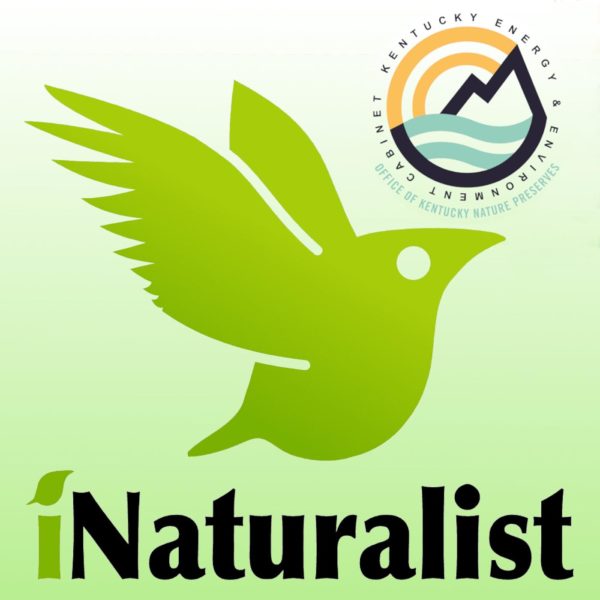 Hi Everyone! On today’s episode of Backyard Ecology, we talk with Maddy Heredia who is the outreach specialist and a biologist with the Kentucky Nature Preserves. Maddy and I first met when she was in college and volunteered on a citizen science / community science program that I was leading. Today we turned things around as she taught me a little bit about iNaturalist, which is a program that I knew about in the broad sense, but have never really used myself. I had a lot of fun recording this episode and I hope you enjoy it too. iNaturalist is a tool that can either be used through a smartphone app or online with your computer. iNaturalist is commonly used to help people identify a plant or animal. After you upload a picture and a little additional information about when and where you found it, iNaturalist will make recommendations as to what the organism could be. Other iNaturalist users can also comment on your photograph and help with the identification. Another common way that iNaturalist is used is by people who want to document the plants and animals they find. You can document the plants and animals in your yard, the pollinator garden at the local elementary school, the county park or other public land, or anywhere else. The observations that you make and upload to iNaturalist are publicly accessible. Those observations are extremely valuable to scientists because they can’t be everywhere at all times. Also, we often don’t know exactly where specific plants or animals are found, especially when it comes to understudied organisms like insects. Observations uploaded to iNaturalist can help fill in those knowledge gaps. For example, recently a species of moth that had previously never been documented in Kentucky before was documented in the state because someone took a picture of it and uploaded it to iNaturalist. I like the fact that not only can I use iNaturalist to help me learn more about the plants and animals that I find, but it can also help scientists learn more about those plants and animals as well. After talking to Maddy and hearing her walk us through the steps of using iNaturalist, I think I’m going to set up an account to help document some of the plants and animals that I find, as well as, to help identify some of the mystery insects that I discover as I’m taking pictures of different pollinators. If you aren’t already using iNaturalist, then I encourage you to take a look at it. I’m guessing, that like me, you can find multiple uses for it. And if you use iNaturalist in Kentucky, please join the Kentucky Nature Preserve’s projects so your observations can help them learn more about all of our amazing plants and animals. Links:
| |||
| 18 May 2023 | Gardening with Sedges - Mt. Cuba Center Carex Trial | 00:59:06 | |
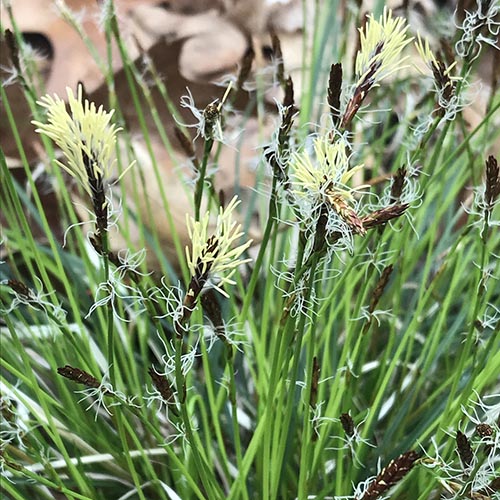 Did you know there is a group of native plants which can be highly adaptable, can serve multiple functions in our gardens, and perhaps even be a backbone component to our home landscapes, but which has historically been overlooked for those purposes? This group of native plants is the sedges, or more specifically, members of the genus Carex. In this episode of the Backyard Ecology podcast, we talk with Sam Hoadley about sedges and their use in the home garden and landscape. Sam is the Manager of Horticultural Research at Mt. Cuba Center in Delaware. Recently, Mt. Cuba Center released their Carex trial report. This report evaluated 70 species and cultivars of Carex over 4 years for garden and landscape use in the Mid-Atlantic Region. During our conversation, Sam and I talk about how Mt. Cuba Center’s trials are conducted, the importance of sedges / Carex species, how they can be used in the garden or home landscape, and many other topics. Sedges may not produce the colorful, flashy flowers that we often think about and are drawn to when we are picking native plants to use in our home landscapes or pollinator and wildlife gardens, but they are definitely worth considering. Not only do they have their own innate beauty, but they can also serve so many different functions in the garden and landscape – including filling in so called “problem areas” or serving as a potential lawn alternative. We have lots of exciting opportunities planned with Backyard Ecology over the next several months. If you want to keep up with everything going on in the Backyard Ecology world, then please subscribe to our emails. You can do so at www.backyardecology.net/subscribe. And when you sign up for our emails, you’ll be sent a link to download a free, e-book that explains why our familiar garden zones, aren’t important when it comes to gardening with native plants. That’s just our way of saying thank you for your interest in Backyard Ecology. Episode Resources:Sam’s email: shoadley@mtcubacenter.org Backyard Ecology Links:Website: https://backyardecology.net Episode image:Pennsylvania sedge (Carex pensylvanica) | |||
| 20 May 2021 | Encouraging Curiosity and Engaging Young People with Heather Montgomery | 00:59:05 | |
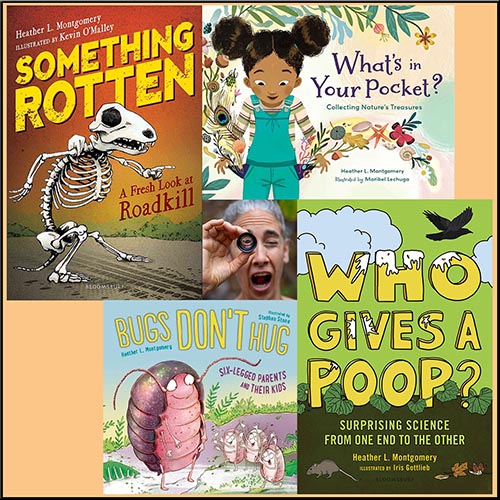 I know from the emails and messages that I’ve received that many of you are parents, teachers, grandparents, aunts, uncles, or friends of young people. Well, this episode is for all of you. In this episode of the Backyard Ecology podcast, we talk with Heather L. Montgomery. Heather is an award-winning author, educator, and someone I’m honored to call a friend. Her books include: Bugs Don't Hug: Six-Legged Parents and Their Kids, How Rude! Real Bugs Who Won't Mind Their Manners, Something Rotten: A Fresh Look at Roadkill, and Who Gives a Poop?: Surprising Science from One End to the Other. Her newest book, What's in Your Pocket?: Collecting Nature's Treasures, will come out in September 2021. As you’ll quickly discover in this episode, Heather is an amazing storyteller who is passionate about engaging people, especially young people, in nature. Like me, she is also a big kid at heart. Our conversation covers a wide variety of topics including ways to engage young people in nature, but the theme that carries through all those topics is curiosity. Heather and I both believe that encouraging young people to be curious can help them throughout their lives, no matter what career path they end up taking. It’s also just fun to be curious and see where a question takes us – no matter what our age is. Links:
Episode image:
| |||
| 07 Jul 2022 | The Fascinating World of Venus Flytraps | 00:56:12 | |
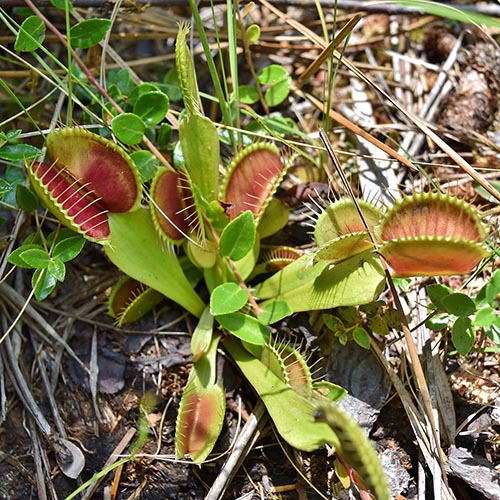 Did you know that Venus flytraps are insect pollinated? Or that they are native to a very small part of eastern North and South Carolina? Or that they rarely eat flies? I didn’t either until I stumbled upon a research paper talking about the pollination of Venus flytraps. That paper led me down a rabbit hole of questions and fascinating discoveries about a plant that I had always been intrigued by, but had never taken the time to really learn about. In this episode of the Backyard Ecology podcast, we’re joined by Laurie Hamon. Laurie is an entomologist who recently completed her dissertation at North Carolina State University studying Venus fly traps and their pollination. She is also the author of the paper that I stumbled upon and which sent me on my own quest to learn more about Venus flytraps. Laurie and I began our conversation by talking about how the only place in the world that you can find Venus flytraps growing naturally is in a small region on the border of North and South Carolina. We also talked about the fact that Venus flytraps are insect pollinated and all the complicated questions that arise from the idea of a carnivorous plant being insect pollinated. Other topics of discussion included the feeding habits of Venus flytraps (which eat more ants and spiders than flies), the population status of Venus flytraps, where you can find them, and the threats that they face. We wrapped up the conversation by talking about how small populations of this rare and infinitely fascinating species can sometimes be found on private lands or along boggy roadsides. Laurie also provided us with a website where people who are lucky enough to have Venus flytraps on their property can go to learn more about how to care for and protect this charismatic little plant. Links
Episode image:
| |||
| 21 Jul 2022 | Getting the Community Involved in Creating Pollinator Habitat | 00:51:05 | |
 I often hear comments or questions such as, “I do what I can in my yard, but I wish more people in my community would plant pollinator gardens.” Or, “What can I do to get my community involved and to make my community more pollinator friendly?” It can feel overwhelming and like there isn’t anything we can do beyond our own individual space. But, sometimes all it takes is one person to step forward, raise their hand, and say “This is important. I can take the lead, but I can’t do it on my own. Who wants to help?” In many ways, that’s what happened in Bexley, Ohio. Today we are talking to Rebecca Ness. Rebecca is the Vice Chair of the Environmental Sustainability Advisory Council in Bexley, Ohio. She is also the Chair of Love Your Alley, which is a local program that encourages community involvement in creating pollinator habitat. Rebecca and I discuss how the pollinator habitat emphasis for the Love Your Alley program came about, program successes, challenges, and lessons learned. I love how the Love Your Alley Program is bringing the community of Bexley, Ohio together in so many different ways. The program seems like it is a win, not only for their local pollinators, but also for the people who participate in the program. I also think that the Love Your Alley program can serve as an example, or case study, for people who would like to do something similar in their own community or neighborhood. It is my hope that this conversation will help you gain insights on ways to get your community or neighborhood involved with creating pollinator habitat. Or, at least provide encouragement from knowing that it can be done and that there are others who are not only doing it but are willing to share their experiences. Links
Episode image:
| |||
| 21 Dec 2023 | Top 10 Backyard Ecology “Shorts” | 00:04:42 | |
Did you know that in addition to the regular Backyard Ecology videos that Anthony creates, he also produces a series of nature-trivia style short videos? Most of these videos are literally only a few seconds long so are perfect “bite-sized” samples if you’re just getting started or are looking for something to watch for a few seconds on your phone. So, let’s quickly run through the top 10 Backyard Ecology shorts based on number of views as of Thanksgiving 2023. Since the videos are so short, I’m just going to list the titles and let your curiosity decide whether to follow the link and explore further. 🦋 10) Caterpillar's Poop Stick Defense! https://youtube.com/shorts/R_mMaD2TadU Bonus Other Episode-Related Links 🌻 🌻 🌻 Thank you to our supporters on Patreon who go above and beyond each month to financially contribute towards making the Backyard Ecology blog, podcast, and YouTube channel possible. Thank you also to everyone who has made one-time donations to support the Backyard Ecology blog, podcast, and YouTube channel. 🌻 🌻 🌻 Become a Backyard Ecologist: 🦋 The Backyard Ecologist’s Newsletter: https://www.backyardecology.net/subscribe/ Backyard Ecology content: 🦋 Website: https://backyardecology.net Support Backyard Ecology: 🦋 Patreon page: https://www.patreon.com/backyardecology
| |||
| 24 Dec 2020 | Moths in the Winter with Shelby Fulton | 00:31:48 | |
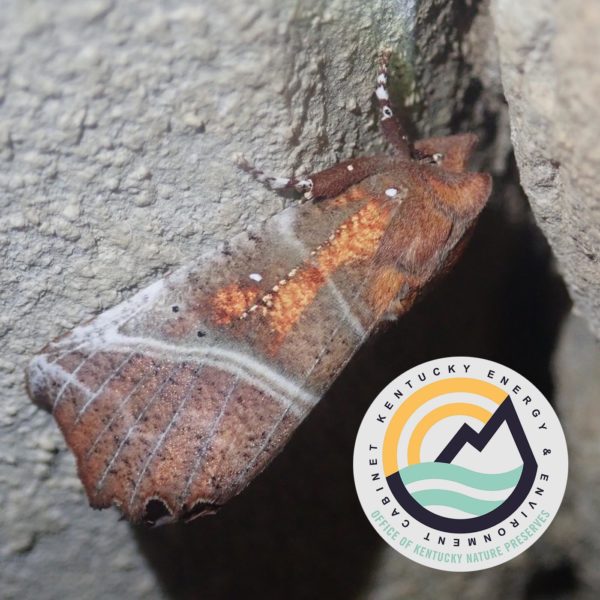 Hi, Everyone! In today’s episode of the Backyard Ecology podcast we are talking with Shelby Fulton who is a terrestrial biologist with the Kentucky Nature Preserves. Our conversation focuses on moths and how they survive the winter. We also talk about how diverse moths are and ways to observe them during the winter. The number of different moth species is astonishing. For example, there are over 2,500 different species in Kentucky alone. Many species of moths are extremely small – almost too small to see. Others are much larger and easily identified. How a moth spends the winter is determined by its species. Some species overwinter as eggs, some as caterpillars, some as cocoons, and some as adults. The most common overwintering strategy is as a cocoon (pupae). There are also quite a few moths that overwinter as adults. Moths that overwinter as adults tend to have fluffy, “furry” abdomens. Some of these species are dormant all winter – basically going into the moth equivalent of hibernation. While others may be active and fly around on warmer winter nights. In addition to the fluffy, “furry” abdomens, moths that are active on warmer winter nights also tend to have other physiological adaptations to help them stay warm. These adaptations usually include the ability to shiver and warm themselves up enough so they can fly. Some species have internal adaptations that allow the moth’s hemolymph (insect blood) to help keep itself warm. Those internal adaptations prevent the heat generated from the moth’s shivering behavior from being lost to the outside environment as quickly as it would be lost without those internal adaptations. Many of the moths that overwinter as adults are relatively small (dime to nickel sized) and tend to be narrowly triangular and kind of drab colored. But some of them, like the herald (Scoliopteryx libatrix), which is featured in the photograph associated with this episode, are beautiful shades of brown or have intricate dashed patterns. One of the primary places that moths overwinter, whether as adults, caterpillars, or cocoons, is in the leaf litter. That is one of the reasons why leaving your leaves on the ground and not throwing them away, burning them, or mulching them is so important if you want to provide habitat for moths, or even butterflies. If you want to try and see some of the species of moths that overwinter as adults in your area, then you can try a sugar bait. There are many different sugar bait recipes, but they all include some form of alcohol, sugar, and fermented fruit. Mix everything up and spread it on a tree on a warm winter night, then check it periodically to see if anyone shows up. Taking pictures of any winter moths that show up and posting them to iNaturalist is a great way to get help identifying the moths. It will also help researchers learn more about what species of moths are active in your area during the winter, because this is yet another relatively understudied area of backyard ecology. Links:
Photo credit: Shelby Fulton, Office of Kentucky Nature Preserves | |||
| 26 May 2022 | A Glimpse into the Fascinating World of Cedar Glades | 00:51:18 | |
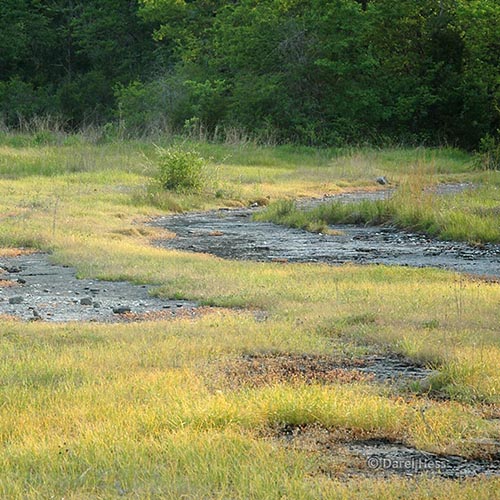 Glades are ecosystems where the soils are really shallow and rocky, often with patches of rock showing on the surface. They can be found all over the world, including multiple states within the eastern U.S. These ecosystems are unique areas that support some really interesting and sometimes highly specialized or rare organisms. Admittedly, they can also be frustrating for homeowners who may have one in their yard and be trying to force it to conform to the standards of a “normal” yard because they think something is wrong with it. However, sometimes all it takes is discovering that there isn’t anything wrong with that area, but instead it is something special and can be celebrated for its own uniqueness. In this episode of the Backyard Ecology podcast, we are talking with Dr. Kim Cleary Sadler. Kim is a professor of biology education at Middle Tennessee State University and co-director of the Center for Cedar Glade Studies. Glades are classified by the type of rock that is found there. So, you can have limestone glades, chert glades, sandstone glades, shale glades, etc. Much of Kim and my conversation focuses on limestone glades, or what in some areas are more commonly known as cedar glades. However, we also touch on a few other types of glades and the basic concepts that we talk about can be applied to pretty much any type of glade. In this episode, Kim and I discuss some of the characteristics of glades, some of the different types of organisms you can find there, ways homeowners can deal with glades on their properties, and much more. We also share numerous stories related to our experiences with glades. Links
Episode image:
| |||
| 13 Jul 2023 | Moths: Unsung Heroes of Pollination and Beyond | 01:02:42 | |
Did you know that there are approximately 10 times more moth species worldwide than there are butterfly species? Or that without moths we would have fewer songbirds, less genetic diversity in many of our native plants, and lower harvests of many popular fruits? Or that creating better moth habitats around our homes also benefits our health and wellbeing? Dr. Elena Tartaglia shares her love of moths, some of the key roles they play in the ecosystem, how helping moths also helps us, and much more. Elena is a co-founder of National Moth Week and a Research Associate at Rutgers University. The full transcript of this episode can be found on the episode’s webpage: https://www.backyardecology.net/moths-unsung-heroes-of-pollination-and-beyond/ Get a free copy of our e-book, An Introduction to Gardening with Native Plants: Hardiness Zones and Ecoregions, when you subscribe to our email. Subscribe at www.backyardecology.net/subscribe. National Moth Week links:
Other episode links:
* Amazon links are affiliate links. Backyard Ecology links:
Episode image:
| |||
| 02 Feb 2023 | Growing Native Plants, Insect-Plant Interactions, Playing in the Pond, and Much More with Dr. Randi Eckel | 01:06:04 | |
 You know how sometimes you’ll meet someone and things just “click?” You quickly discover that you have lots of shared interests and experiences and your conversation just flows as it goes down one path and then the next. Well, that’s exactly what happened in this episode as I talked with Dr. Randi Eckel. Randi is the owner of Toadshade Wildflower Farm which is a mail-order native plant nursery. She is a life-long naturalist, lover of nature, entomologist, and confirmed plant and ecology nerd. Randi is also the president of the Native Plant Society of New Jersey. Growing native plants and interactions between plants and insects were two of the major themes of our conversation, but our conversation also went down many other twisty, curvy paths. This was one of those conversations that could so easily have occurred sitting on the front porch or around a campfire. I hope you enjoy listening to it as much as I enjoyed recording it. [2:47] Randi’s story of how she got to where she is now and discussion of career paths If you find value in the Backyard Ecology content, please consider making a one-time or monthly donation. You can find out how at https://www.backyardecology.net/support /. Until next week, I encourage you to take some time to explore the nature in your own yard and community. Randi’s Information:
Other Resources Mentioned:
Related Backyard Ecology Resources:
General Backyard Ecology Links:
Episode image:
| |||
| 09 Jun 2022 | Ask a Bumble Bee: What Flowers Do Bumble Bees Prefer? | 00:58:08 | |
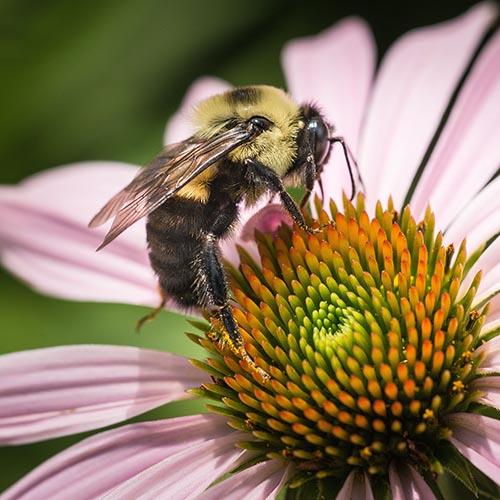 I often get asked what people can plant for bees. I can give good general answers to those questions, because we have a good idea of what types of flowers tend to be attractive to bees in general. We can then use that information along with personal observations made by ourselves and others to fairly easy determine what we can plant in a given area for bees in general. However, we still have a lot to learn when it comes to knowing what types of flowers certain types of bees prefer or what we can plant for specific types of bees. This is especially true when it comes to our native bees. Ask a Bumble Bee, is a new community science, or citizen science, project that is striving to answer some of those questions specifically for bumble bees. Finding out what types of flowers bumble bees prefer and what we can plant for them is especially important, because many species of bumble bees appear to be declining in number. In this episode of the Backyard Ecology podcast, we talk with Jenan El-Hifnawi. Jenan is the Project Coordinator for Ask a Bumble Bee. Jenan joins us to talk about the project, the types of questions it hopes to answer, and how anyone who is interested can help out by observing bumble bees on flowers. Along the way we also share some of our own stories and experiences. Links
Episode image:
| |||
| 14 Apr 2022 | Light Pollution and Its Impacts on Birds and Other Wildlife | 00:43:34 | |
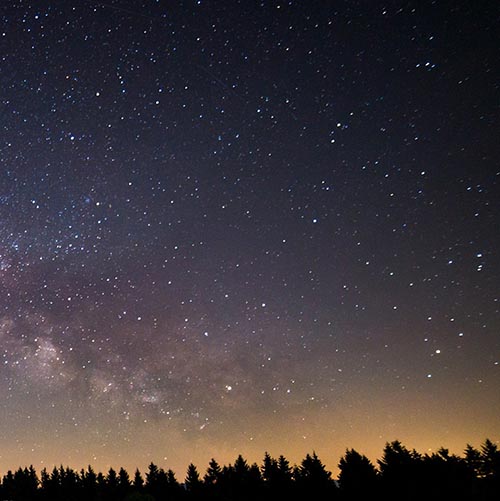 Once upon a time, the moon was the brightest object in the night sky followed by the stars. However, that’s no longer the case. Today the night sky is so brightly lit by artificial lights sources that the majority of people living in North America can no longer see the Milky Way from their yards. Even for those of us who can see the Milky Way, it is often greatly dimmed by nearby artificial light sources or sky glow caused by the closest city or town. Does it matter if our view of the stars is diminished? Actually, it does. All of that extra light that is obscuring the stars is called light pollution and it has significant impacts on a wide variety of wildlife species and can even affect us. In this episode of the Backyard Ecology podcast, we talk with Murry Burgess. Murry is an ornithologist, urban ecologist, and children’s author. She is also working on her PhD at North Carolina State University where she is studying the effects of light pollution on barn swallows. Murry and I start our conversation by defining light pollution and discussing some of its sources. We then talk about some of the different impacts it can have on birds, insects, and even us. During the conversation, Murry shares with us some of the findings from her research with barn swallows and how those results are likely to translate to other bird species. We also discuss some of the ways we can minimize light pollution, both at an individual scale and at larger community-wide scales. And while most of our conversation focuses on light pollution, we frequently interweave other stories and topics related to our mutual passions for wildlife and inspiring others to appreciate the nature around them. Links:
Episode image:
| |||
| 20 Sep 2023 | The Secret to Building a Thriving Backyard Ecosystem: Embracing “It Depends” | 00:09:19 | |
“It depends” is often the most accurate and expert answer that you can give to questions related to biology and ecology. Granted, it can be a frustrating answer because we all love simple, straightforward answers. But once you understand the true meaning of “it depends,” it becomes a very liberating answer, especially when it comes to creating pollinator and wildlife habitat. The full transcript of this episode can be found at: https://www.backyardecology.net/it-depends Until next week I encourage you to take some time to explore the nature in your yard and community. 🌻 🌻 🌻 Are you looking for a supportive place where you can ask questions, celebrate your accomplishments, gain encouragement when you’re feeling discouraged, and have fun geeking out about nature? Then we encourage you to check out the Backyard Ecology Community. The Backyard Ecology Community is a membership community for people in the eastern U.S. who love nature and want to transform their yards and communities into ecosystems that support pollinators and wildlife. Learn more at: www.backyardecology.net/community. 🌻 🌻 🌻 Thank you to our supporters on Patreon who go above and beyond each month to financially contribute towards making the Backyard Ecology blog, podcast, and YouTube channel possible. Thank you also to everyone who has made one-time donations to support the Backyard Ecology blog, podcast, and YouTube channel. 🌻 🌻 🌻 Become a Backyard Ecologist: 🦋 The Backyard Ecologist’s Newsletter: https://www.backyardecology.net/subscribe/ Backyard Ecology content: 🦋 Website: https://backyardecology.net Support Backyard Ecology: 🦋 Patreon page: https://www.patreon.com/backyardecology
| |||
| 13 Oct 2022 | 5 Native Plants that Bloom in the Late Fall | 00:23:14 | |
 One of the most common pieces of advice given related to pollinator gardening is to try and have a constant supply of blooms available throughout the growing season. That’s easy in the spring. The summer is a little more challenging than the spring, but is still relatively easy. Even early fall isn’t too bad thanks to the goldenrods, ironweeds, and other fall flowers. It’s the shoulder seasons that are the most challenging for providing flowers for pollinators. By shoulder seasons I mean the late winter / early spring and the late fall / early winter. For me, that typically corresponds to February / March and October / November. Your shoulder seasons may occur at slightly different times depending on how far north or south you live and your elevation. One of the reasons that the shoulder seasons are difficult is because the weather is so crazy at that time. Most flowers just can’t take the cold temps, frosts, and freezes that are often associated with the shoulder seasons. However, there are a few native plants that can handle the crazy weather of the shoulder seasons. I’m recording this in October, so I’m going to focus on native plants that bloom in the late fall /early winter shoulder season, or the October / November time period. On a side note, if the weather is good, many of our goldenrods, white fall asters, thoroughworts, and other fall flowers will bloom well into October. However, most of those flowers will be killed off with the first good frosts. The native plants that I’m focusing on in this episode are the ones that typically don’t start blooming until around October and that can survive those first frosts after most of the earlier blooming fall flowers are gone. To make it easier for you to refer back to particular parts of the podcast, here are the plants and the time I start talking about each:
Links:
Episode image:
| |||
| 05 Aug 2021 | Mysterious Bird Deaths of 2021: Digging Deeper into the Bird Mortality Event | 01:17:01 | |
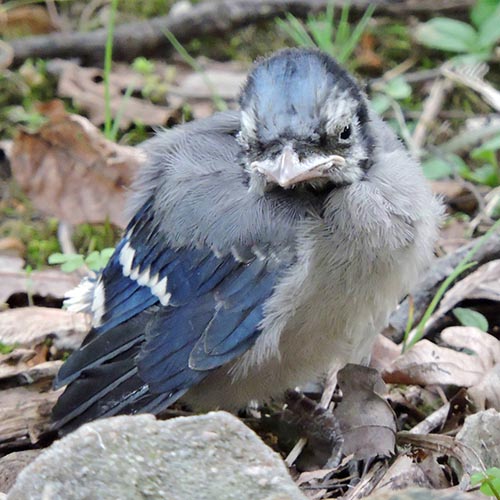 In the spring of 2021, reports started coming in of birds dying with weird eye and/or neurological symptoms. At first, it seemed like the bird mortality event was only in Washington, D.C., Maryland, and Virginia, but before long reports began to also come in from West Virginia, Delaware, New Jersey, Pennsylvania, Ohio, Indiana, Kentucky, Tennessee, and Florida. Researches and others from multiple state, federal, and private organizations and agencies have been working together to try and determine what is causing this mysterious bird mortality event. In this episode of the Backyard Ecology Podcast, we talk with Dr. Brian Evans. Brian is an ornithologist at the Smithsonian National Zoo and Conservation Biology Institute. He has been involved with studying the bird mortality event at a regional level since soon after it started to be recognized as an issue. This is a very open and candid discussion about a subject that has garnered a lot of confusion and frustration in only a couple of short months. Our conversation covers a wide range of topics related to what we know and don’t know, because at this point, what we don’t know about this mortality event far outweighs what we do know. That can be frustrating, but at the time of this recording, two months ago we knew absolutely nothing about this bird mortality event. Given that we’ve been building our knowledge from practically zero, we’ve actually learned quite a bit in a short time. It just doesn’t always feel that way, because there is so much more that we want and need to know. In addition to talking about the bird mortality event itself, Brian and I also discuss what goes on behind the scenes when something like this happens. We would all love to be able to snap our fingers and have all the answers for what is causing this mortality event and how to stop it, but that’s not the way things work. We also know that this is not the first bird disease or mortality event to suddenly pop up, and it probably isn’t going to be the last. Similar things have happened with just about every other group of animals. So, having a basic understanding of what goes into studying and learning about something like this, can be very helpful for those of us who love wildlife and nature. We also talk about some of the concrete action steps that we can take to help protect our birds and to help with the research. One of the points that Brian really wanted to highlight is how vital community involvement is to learning about this bird mortality event. Researchers need our help to determine the answers to even the most basic questions about this event. There is just so much that we don’t know and the more data the researchers have, the better chance they have of finding the answers that we all want to know. Reporting what we are seeing to the Smithsonian’s national database, and where appropriate, our individual states’ databases can go a long way towards helping them gather that data. Links:
Episode image:
| |||
| 31 Mar 2022 | Attracting Ruby-Throated Hummingbirds to Your Yard | 01:00:25 | |
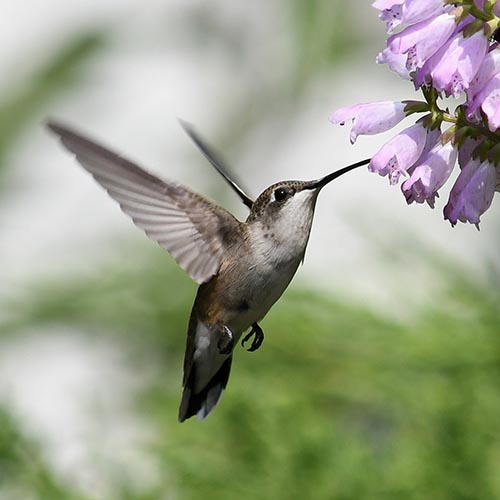 Ruby-throated hummingbirds are common and much beloved summer visitors to yards and gardens throughout the eastern U.S. and Canada. In this episode of the Backyard Ecology podcast, we talk about ruby-throated hummingbirds, their northward migration, and how to make our yards more hummingbird friendly. We are joined in this conversation by Cyndi Routledge who is the CEO of Southeastern Avian Research (SEAR). When people think about attracting hummingbirds to their yards, the most common reaction is to put up a hummingbird feeder. However, making your yard more attractive to hummingbirds goes way beyond just putting up a feeder. Approximately, 80% of a ruby-throated hummingbird’s diet consists of soft-bodied insects. Hummingbirds also prefer natural nectar sources over sugar-water while they are nesting and raising young. Water sources and places to build nests or find shelter from storms are also important factors that hummingbirds look for when choosing their territories. Cyndi and I spend a significant amount of time discussing what makes good hummingbird habitats and how we can use this knowledge to make our yards more attractive to ruby-throated hummingbirds. Cyndi also shares with us the proper way to maintain our feeders if we choose to put up hummingbird feeders. As she points out, hummingbird feeders are for our enjoyment, not the hummingbirds’ survival. So, if we choose to put out feeders, then it is our responsibility to make sure that they aren’t going to inadvertently harm the birds. Other topics in our conversation include the ruby-throated hummingbird’s migration north, some common myths and folktales that we often hear, how hummingbirds are adapted to survive cold temperatures, the different roles of the male and female hummingbirds, and much more. Links:
Episode image:
| |||
| 19 Aug 2021 | NRCS Programs for Pollinators and Wildlife | 01:00:56 | |
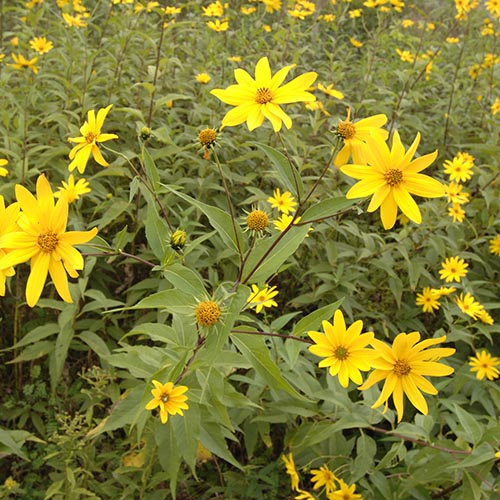 If you listen to the Backyard Ecology podcast, then you are likely interested in creating pollinator and/or wildlife habitat on at least part of your property. The Natural Resources Conservation Service or NRCS is a federal agency that has a number of programs which can help us do just that. Previously, NRCS programs and services were restricted to people with 10 acres or more, but that is no longer the case. In this episode of the Backyard Ecology Podcast, we talk with Randall Alcorn. Randall is a Private Lands Biologist with the Kentucky Department of Fish and Wildlife Resources and an NRCS Area Liaison. (The NRCS is a federal agency, but in some states like Kentucky, they partner closely with the state fish and wildlife agency.) During our conversation, Randall tells us about several NRCS programs including cost-share programs for pollinator habitat, timber stand improvement, invasive species management, early successional growth habitat, edge feathering, wetland conservation easements, riparian corridors, stream bank mitigation, ephemeral pools, and shallow wetlands. Some of these NRCS programs have a more regional scope, while others have a national scope. Randall and I also talked about who to contact if you are interested in finding out more about the NRCS programs available in your area. Additionally, Randall walked us through a general timeline of what to expect if you apply for an NRCS program and how that works from a practical standpoint, including options for those who may have difficulty financing everything upfront before receiving the cost-share reimbursement. Links:
Episode image:Part of an NRCS planting in the Chesapeake Bay Watershed | |||
| 04 Mar 2021 | Lightning bugs and Fireflies: A conversation with Lynn Faust, Part 1 | 00:50:58 | |
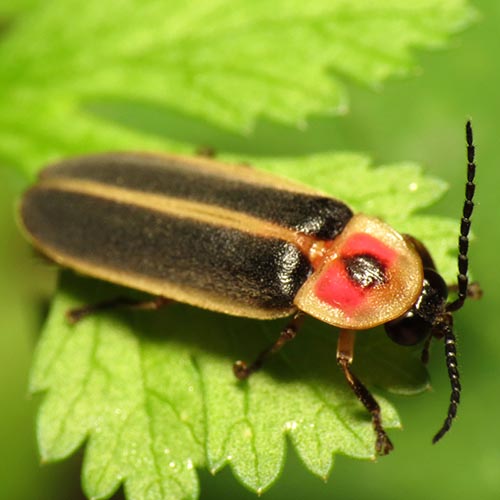 For many of us in the eastern U.S., warm spring and summer nights are characterized by the methodical flashing of fireflies and lightning bugs. Fireflies and lightning bugs are exactly the same thing. I grew up calling them “lightning bugs,” but somewhere along the line picked up the term “firefly.” Now I use both terms interchangeably. It doesn’t matter what you call them, these flashing insects have the ability to bring out the child in all of us. In this episode of the Backyard Ecology podcast, we talk with Lynn Faust. Lynn is the author of Fireflies, Glow-worms, and Lightning Bugs: Identification and Natural History of the Fireflies of the Eastern and Central United States and Canada. She is also sometimes called “The Lightning Bug Lady,” and with good reason as you’ll quickly learn when you listen to this episode. Our conversation is very informal and includes lots of stories mixed in with more educational discussions. This episode is a little different than previous episodes because it is the first in a two-part series. Lynn is so knowledgeable, enthusiastic, and has so many great stories that I couldn’t fit everything into one episode. So, we’ll start our conversation in this episode, and then conclude our conversation in the next episode. Often, we tend to think of lightning bugs as all being the same, but they aren’t. In the eastern U.S., we are very rich in lightning bug species and we’re still identifying new species. One of the things that I love about lightning bugs is that we can enjoy them on so many different levels. We can sit on our porches or in our lawn chairs and just appreciate their beauty. We can run around in our bare feet and catch them. We can learn the different flash patterns and begin identifying the species that we are seeing. Or anything in between. In this episode, Lynn shares the story of how she went from just watching the lightning bugs to becoming “The Lightning Bug Lady.” We also talk about some of the different species found in the eastern U.S., how to identify firefly species, and the general life history of fireflies. In the next episode, we’ll continue our life history discussion. We’ll also talk about some exciting recent discoveries, threats to fireflies, ways we can make our yards more lightning bug friendly, and tips for observing fireflies. I hope you enjoy both these episodes. Links:
Episode image:
| |||
| 02 Sep 2021 | Factors that Make Pollinator Gardens More Attractive to Pollinators | 00:57:14 | |
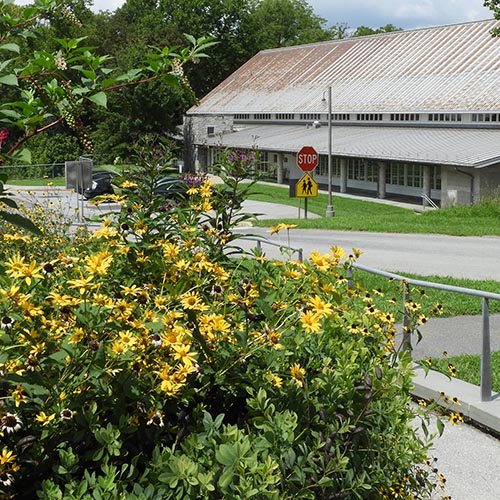 Pollinator gardens have rapidly increased in popularity, but unfortunately, there hasn’t been a lot of research on the best ways to create those gardens or on how effective those gardens really are. Happily, that’s beginning to change. More and more scientists are beginning to tackle those types of questions in order to help us better manage and protect the pollinators in our built environments. In this episode of the Backyard Ecology Podcast, we talk with Travis Watson. Travis is the Horticulture Manager at East Tennessee State University. He also recently completed his thesis research on the types of factors make pollinator gardens more attractive to pollinators. Travis and I talk about his research and some of his findings that stood out. One of potentially the most comforting findings to many people is that size didn’t really matter. His largest study sites had proportionately the same number of insect pollinators as his smallest study sites. The types of pollinators present may have changed, but overall insect abundance was proportionally similar between all sites. This means that no matter how small your property is, you can still do something to support pollinators. Another key finding in his research was the importance of floral diversity. Having diverse flower families, species, colors, shapes, sizes, and bloom times all contributed to greater pollinator diversity and attractiveness. Travis attributes this to the fact that with greater floral diversity, the odds increase that you’ll be “inviting a pollinator specialist to the table” without excluding any of the generalist species that would be there anyways. However, we also discuss that this shouldn’t be taken to the extreme of trying to plant a single individual of a bunch of different species. You still need multiples of each species. As with most things in life, it is important to find that happy medium. Our conversation covers a wide range of other topics related to his research and ways that we can apply his findings in our own gardens and yards. We end with him offering suggestions for other ways that you can get involved and make a difference, even if you don’t have land of your own. Links:
Episode image:
| |||
| 11 Feb 2021 | More than a Mud Puddle: The Exciting World of Vernal Pools | 01:02:35 | |
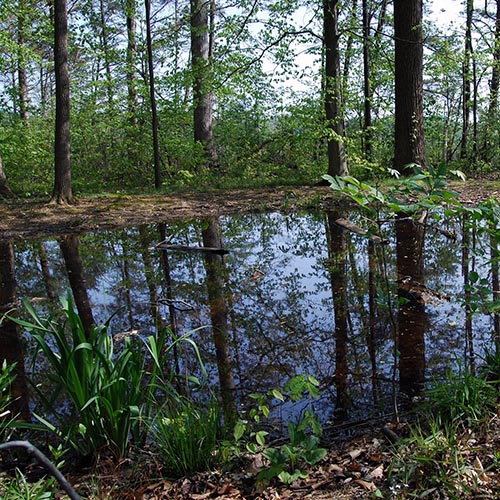 Vernal pools are a special type of shallow wetlands that fill with snow melt and rain in late fall through early spring, then dry up sometime during the summer. Because they dry up, they are sometimes overlooked or dismissed as “not very good wetlands.” However, they serve an important role in the ecosystem and can be teeming with all kinds of life. In this episode, we talk with Tom Biebighauser about vernal pools. Tom is a wildlife biologist, wetland ecologist, educator, and author. He has written multiple books about vernal pools and has made a career of restoring and creating wetlands. Throughout our conversation, Tom shares many stories about creating vernal pools on his own property, on other people’s properties, and at schools. Almost by definition, vernal pools don’t contain fish, because fish wouldn’t be able to survive when the vernal pool dries up. However, because they don’t have fish, vernal pools are extremely important breeding sites for frogs, toads, salamanders, and many aquatic invertebrates. In more permanent bodies of water, those animals and their eggs, tadpoles, and larva would face a significant threat of being eaten by hungry fish, but that’s obviously not a risk in a place where there aren’t any fish. In many states, 90% of our wetlands have been drained and filled. This is especially true for vernal pools, probably because they do dry out for part of the year. Vernal pools are often relatively small – sometimes only the size of a living room or even smaller. They are also very shallow, usually only inches to maybe a foot or so deep, and have gently sloping sides. One of the reasons that wetlands are often drained is for mosquito control. However, mosquitoes typically aren’t a problem around vernal pools because the mosquito eggs and larvae are eaten by everything that is in the vernal pool. If a vernal pool or wetland holds water for more than a couple of months then it will attract frogs, dragonflies, damselflies, and other mosquito predators. Many people are probably familiar with the concept of rain gardens and may even have a rain garden already. However, vernal pools differ from rain gardens in that vernal pools hold water for several months, while rain gardens go dry much faster. Because rain gardens typically only hold water for a few hours to a few days, they don’t develop the complex ecosystems of a vernal pool. There are lots of opportunities to create vernal pools around our homes, on our school grounds, or in other places within our communities. The cost of creating a vernal pool can range from practically nothing, to a few hundred dollars, to several thousand dollars, depending on the size of the vernal pool you want to create, the type of soil you have, and how much labor you want to do yourself. However, in many cases there are funds available to help cover the costs of creating vernal pools or other shallow wetlands. Tom has written several books that walk you through how to create vernal pools. His books plus lots of free resources and guides are available through his website. Links:
Episode image:
| |||
| 16 Feb 2023 | Battery Powered Lawn Care Equipment and Ecological Lawn Care | 00:52:42 | |
 Lawn care probably isn’t the first thing you think of when you think about backyard ecology. Honestly, it isn’t for me either. But it is something that most of us have to deal with in one way or another whether we do it ourselves or hire someone to do it for us. And I don’t know about you, but lawn equipment in general, much less battery powered lawn equipment, is not my area of expertise. That’s why when I heard about a landscaping company which specializes in low impact lawn care and has transitioned to all battery powered equipment, I became intrigued. Anthony and I have some battery powered lawn care equipment, but we’ve always shied away from battery powered lawn mowers. We just didn’t think battery powered lawn mowers could handle our uneven, rough, hilly yard. But if this company was using all battery powered equipment on a commercial scale, then maybe we needed to rethink our assumptions for our own yard. Maybe you’re in a similar boat and are trying to decide if battery powered is the way to go for your next piece of lawn equipment. Or maybe you’d like to be able to hire someone who approaches lawn care from a more ecological perspective but don’t know how to find that person or the questions to ask. If so, then this episode is for you. In this episode, we are talking to Richard McCoy. Richard is the owner and operator of McCoy Horticultural Services. In the last couple of years, his business has transitioned from traditional gas powered lawn care equipment to battery powered equipment. His company also specializes in organic and low impact lawn care. Our conversation covered a number of topics related to battery powered lawn care equipment, vetting a land care contractor, and low impact lawn care. I appreciate Richard sharing his expertise and experiences with us. [2:58] Richard’s story about how he got to where he is now If you are looking for some simple, quick and easy ways to make your yard more attractive to pollinators and wildlife, you may want to check out my newest book, Attract Pollinators and Wildlife to Your Yard: 15 Free and Easy Ways. You can learn more about the book and place your order at https://shannontrimboli.com/product/attract-pollinators-and-wildlife-to-your-yard-15-free-and-easy-ways/ . Until next week, I encourage you to take some time to enjoy the nature in your own yard and community. Richard’s Information:
Other Resources Richard Recommended:
General Backyard Ecology Links:
Episode image:
| |||
| 25 Aug 2023 | The American Goldfinch: A Comprehensive Guide | 00:18:38 | |
American goldfinches are beautiful and fascinating songbirds that can be found over most of the continent. Their late nesting season and almost exclusively seed-based diet, even as nestlings, make them unique among our songbirds. They are also easy to attract to our properties. I talk about all those things and much more in this episode. The full transcript, including additional pictures, can be found on the episode’s webpage: https://www.backyardecology.net/american-goldfinch/ Incorporating native plants into your landscape is a great way to improve the habitat in your yard for butterflies, hummingbirds, songbirds, and just about every other type of animal that visits your property. If you want to learn more about gardening with native plants, then I’d like to give you a free copy of our e-book, An Introduction to Gardening with Native Plants: Hardiness Zones and Ecoregions. Just go to https://www.backyardecology.net/ecoregions/ to request your copy. Until next week I encourage you to take some time to explore the nature in your yard and community. Episode Links
Backyard Ecology Links
Episode Image:
| |||
| 02 Mar 2023 | Why Are Invasive Species Something You Should Care About? | 00:55:33 | |
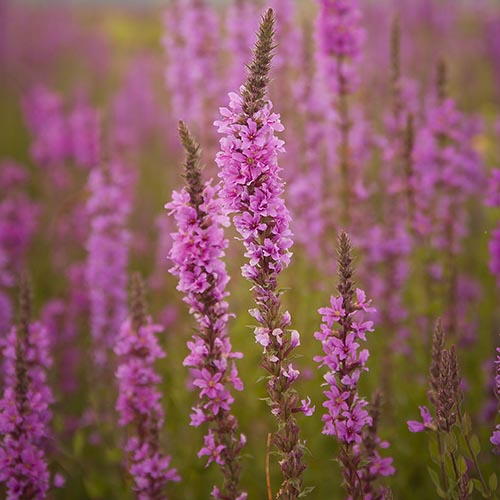 Do you struggle with invasive species on your property? Or, have you ever wondered, what’s the big deal with invasive species? Why are they so bad? Or maybe you just wondered how our invasive species got here. After all, if they are so awful, then why would anyone bring them here? If so, then you aren’t alone. Invasive species are something that most of us struggle with. In this episode, I’m joined by my husband, Anthony Trimboli. Many of you may know Anthony from the Backyard Ecology videos he produces every week or from previous podcasts episodes which he has been on. In addition to creating Backyard Ecology content, he also does habitat consulting and works in our native plant nursery. Anthony and I talked about a wide range of topics related to invasive species beginning with a discussion about what exactly is an invasive species and whether those species are inherently “bad.” We also talked about why it matters if a species is invasive, some of the negative impacts invasive species can have, and whether any of the short-term uses that pollinators and wildlife may gain from invasive species makes up for their negative impacts. Much of our conversation focused on invasive plants, because we both agreed that invasive plants are probably the type of invasive organism which individual property owners have the greatest ability to do something about. This part of our conversation included topics such as how to know whether a species is invasive and how to control those species on your property, as well as a discussion about whether native plants can be invasive. We wrapped up our discussion by talking about how invasive species got here. Spoiler alert: No one did the evil “bwahaha” laugh and thought to themselves, “Let me introduce this horribly invasive species so it can wreak havoc and destroy the ecosystem.” The story of invasive species is one of unintended consequences. If you haven’t checked out the Backyard Ecology YouTube channel, then I encourage you to do so. Anthony adds new content every week. There’s a link to the channel in the show notes, as well as a separate link for the channel’s invasive species playlist. Until next week, I encourage you to take some time to enjoy the nature in your own yard and community. Links to Relevant Resources:
General Backyard Ecology Links:
Episode image:
| |||
| 30 Sep 2021 | Acorns, Birds, Reptiles, Amphibians, and More: Responses to Forest Disturbances | 00:56:39 | |
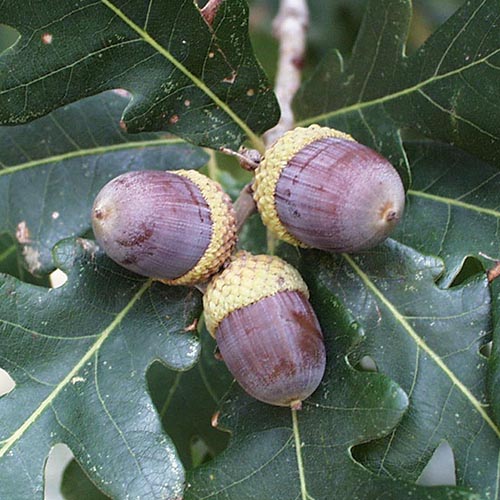 What happens when you do a shelterwood cut, conduct a prescribed burn, or have some other natural or human-made disturbance event in oak hickory forests? What happens to the acorn crop? How do different types of wildlife respond? What about the other vegetation in the woods? In this Backyard Ecology episode I talk with Dr. Cathryn Greenberg. Katie is a Research Ecologist with the US Forest Service, Southern Research Station. She has been involved in multiple long-term studies looking at how different species, or groups of animals, respond to forest disturbances, both natural disturbances (wind, wildfires, etc.) and human-created disturbances (logging, prescribed burns, etc.). These forest disturbances can cause openings in the closed canopy of mature forests or may be more low-grade and not have much of an impact on the canopy. Two aspects that make Katie’s research unique are:
We talked about a wide variety of topics including how forest disturbances such as shelterwood cuts can affect acorn production. We also discussed the impacts of different types of forest disturbances on breeding songbirds populations and diversity, as well as, on reptile and amphibian populations. We even took a side tangent to discuss a long-term study she and her colleagues have conducted looking at amphibian use of ephemeral pools in Florida. One important concept to recognize from her research is that forest disturbances don’t affect all species the same, even within the same general “group,” such as songbirds. Some may benefit from the disturbances; some not-so-much, at least temporarily. Like with anything else, there isn’t a one-size-fits- all answer. We wrap up with Katie reminding us how important it is to know our goals and what we are trying to accomplish with our land management. Links:
Episode image:
| |||
| 07 Jan 2021 | Conserving our Southeastern Grasslands with Dwayne Estes | 00:54:04 | |
 Many of us grew up hearing about the decline of the old growth forests and their impacts on neotropical songbirds and other wildlife. I think this was especially true for those of us who grew up here in the eastern U.S. However, the story that hasn’t been told as well is that of the southeastern grasslands and how they have declined. Yes, I said “southeastern grasslands” because historically, much of the southeast was a diverse patchwork of grassland communities, not a continuous forest like it has often been portrayed. On today’s episode of Backyard Ecology, we talk with Dwayne Estes, Executive Director of the Southeastern Grasslands Initiative (SGI). SGI works in a region that basically covers from Columbia, MO across to Long Island, NY, down to Miami, FL and back across to Brownsville, TX. Even though New York and some of these other areas aren’t what we traditionally think of as part of the southeast, all of these areas have very similar grasslands. In addition to his work with SGI, Dwayne is also a Professor of Biology in the Center of Excellence for Field Biology, Austin Peay State University. As Dwayne tells us, it has only been within the last decade or so that we’ve begun to realize just how diverse our southeastern grasslands were. Despite the fact that most of us probably think of Kansas and the Great Plains when we hear the term “grasslands,” the southeastern U.S. actually has more types of grasslands than the entire Great Plains of the U.S. and Canada combined. All these different types of southeastern grasslands also translate to a greater biodiversity of animals than can be found in Great Plains. Scientists now think that approximately half of all the plants and animals in the eastern U.S. are tied to grasslands. Part of this biodiversity stems from the fact that not all animals like the same types of grasslands – some species like short grass, some like tall grass, some need larger tracts, some are happy on smaller acreages, some like drier areas, and some are drawn to wetter areas. By having so many different types of southeastern grasslands, there are opportunities for all of these different habitat preferences to be met. And just to be clear, when we talk about southeastern grasslands, we aren’t talking about mowed yards. We’re talking about short-grass prairies, tall grass prairies, savannahs, glades, wet prairies, coastal plains, and other similar locations where native grasses and their associated wildflowers are the dominant vegetation. Trees and shrubs can exist in those areas too, as in the case of savannahs, but they aren’t the dominant vegetation type like you see in a forest setting. Nowadays, it can be hard to find naturally occurring southeastern grasslands because many of our southeastern grasslands have been turned into agricultural lands (croplands or pastures) or allowed to grow up into forests after fire was removed from the ecosystem. Some of the best places to look for existing southeastern grassland remnants are often in powerline rights-of-ways, along rocky roadsides, along old fence rows, or in similar places. It is entirely possible for someone to have a southeastern grassland remnant on their property and not even realize it. Most of our remaining southeastern grasslands have been reduced to only a few acres and are located on private land which makes small landowners critical in identifying, managing, and helping to conserve our southeastern grasslands. Larger tracts of southeastern grasslands still exist in a few places, but they are much less common than the smaller grasslands. The Southeastern Grasslands Initiative is working to raise awareness of our southeastern grasslands and to provide science-based resources for identifying, managing, and conserving those habitats. They are accomplishing this by partnering with many different conservation and educational organizations and agencies, as well as, with individuals who are just interested in southeastern grasslands and want to help make a difference. The Southeastern Grasslands Initiative fully embraces the concept of working hand-in-hand with others to accomplish their mutual goals. Among the many resources that the Southeastern Grasslands Initiative is developing which will be of direct benefit to interested individuals is information which will help landowners determine whether they have a southeastern grassland remnant hiding on their property. It’s hard to protect or take care of something if you don’t even know it exists. So, the first step is learning how to figure out if you have something that might be worth protecting or conserving. The Southeastern Grasslands Initiative is also embarking on a new project that will provide seed lists by ecoregion for homeowners and landowners who want to plant southeastern grasslands species on their properties. These lists will be tailored to each of our different ecoregions, as well as the specific soil types and available sunlight at each location. A prototype seed list for the Nashville Basin region is available on the Southeastern Grasslands Initiative’s website with more lists being developed and added in 2021 and 2022. I highly encourage everyone to listen to this episode and then check out the amazing resources available on the Southeastern Grasslands Initiative’s (SGI) website. They also have some great volunteer opportunities (both in-person and remotely) if you want to get more involved. Links:
Episode Image:
| |||
| 18 Feb 2021 | Wasps: Victims of an Often Undeserved Reputation | 01:04:44 | |
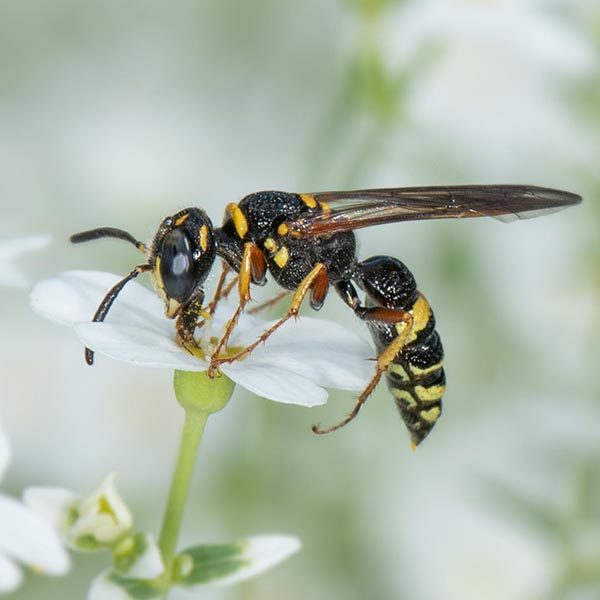 Like many people, I grew up with a healthy…. apprehension (ok, fear) of wasps. And, of course, I’ve seen all the memes on social media vilifying wasps and calling them names that I’m not going to repeat on this podcast. But, those fears and concerns are mostly unfounded and misplaced. Wasps generally aren’t going to bother you, especially when they are on flowers, and they definitely aren’t the evil villains they are often portrayed as. Instead, they are a vital part of the ecosystem that helps control many different insect and arachnid populations, as well as, helps with the pollination of some plants. In this episode of the Backyard Ecology podcast, we talk with Heather Holm. Heather is a pollinator conservationist and award-winning author. As of this recording, her book, Wasps: Their Biology, Diversity, and Role as Beneficial Insects and Pollinators of Native Plants, has just been published. Because wasps are such diverse organisms, her book focuses on the wasps that we are most likely to find visiting flowers. Of course, I had to start our conversation by asking Heather the obvious question – “Why wasps?” Her answer was that as pollinator gardens become more popular, more people are beginning to notice wasps visiting the flowers. Her goal with this book is to help people better understand and appreciate those wasps, instead of being afraid of them. In many ways, wasps are just like bees. In fact, bees evolved from wasps. Most adult wasps feed on nectar and other sugary substances like honeydew and tree sap. However, unlike bees which gather pollen to feed to their larvae, wasps hunt for prey to feed their larvae. The specific type of prey they hunt for depends on the species of wasp. Wasps can be very specific with the prey they capture. For example, the cicada killer only hunts cicadas. In some cases, the cicada she captures may be 2-3 times her size! Another species of wasp, called the queen ant kidnapper ant, only eats queen ants that still have their wings and are coming back from their nuptial flights. There are also a number of wasp species that hunt spiders. Just about every type of insect, plus spiders, is on the menu for some species of wasp and this has led to a wide diversity of wasp species. There are way more species of wasps than bees. And because their prey is so specific, you may find several different species of wasps nesting in close proximity to each other because their different diets mean that they aren’t competing with each other. Like bees, most of our wasps are solitary which means that each female must create and provision her own nest(s). This doesn’t leave them much time, or desire, to defend their nests. Also like bees, wasps can be found nesting below ground, in standing dead trees, in logs, and in pithy or hollow stems. Some wasps even build nests made entirely of mud. Some of these mud structures can be very beautiful and delicate pots that look like they should be ceramic vessels in a dollhouse. Despite their many similarities to bees, wasps are a group of animals that many people love to hate. However, they are rarely as bad as they are made out to be, especially when they are feeding on flowers. As Heather puts it, “the flower restaurant isn’t defended.” And in some ways, wasps can be easier to identify than bees. If you want to identify the wasps that you find on your flowers, Heather suggests taking lots of pictures including a top-down view, a sideview, and a head-on view. Using your flash can also be helpful for picking up details and reducing the blur if the wasp doesn’t sit perfectly still for you. I encourage anyone who is interested in learning more about wasps, including how to identify them, to take a look at Heather’s book. And if you aren’t quite ready to venture into the world of wasps, then I still encourage you to take a look at Heather’s website. It is a treasure trove of free educational resources on pollinators, especially native bees. (In addition to her new wasp book, she has several other books on bees, pollinators, and native plants.) Links:
Episode image:Bee wolf (Philanthus gibbosus) drinking nectar and serving as a pollinator | |||
| 16 Mar 2023 | Everything You Want to Know About Nesting Birds with NestWatch | 01:05:53 | |
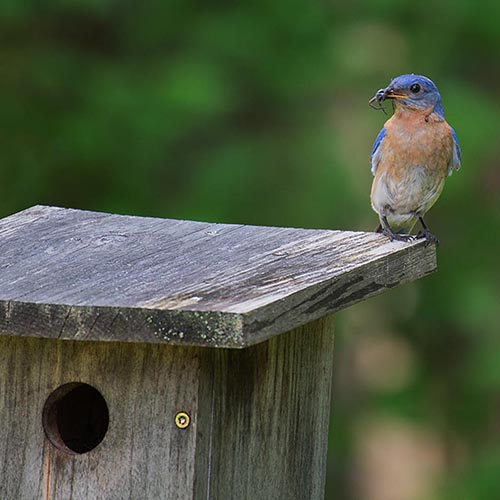 Do you enjoy having birds nest on your property? Would you like to learn more about what to look for in a nest box to make it the best it can be for your birds? Are you interested in finding out how you can safely monitor your nesting birds and help scientists study nesting birds? In this episode, I am joined by Holly Grant. Holly is the Project Assistant for NestWatch which is a community science program based out of the Cornell Lab of Ornithology. We discuss a wide range of topics related to nesting birds including:
Oh! And if you like to put out hanging baskets, but the wrens or other birds always decide that’s where they want to nest, then you definitely want to listen to this episode. Towards the end of our conversation, Holly shares a great tip which will allow you to continue watering your plant without disturbing the nest! Also, Anthony and I are working on a project that we’re very excited about. We’re hoping to make an announcement about it in the next couple of months. If you want to be among the first to hear about it, then be sure to subscribe to our Backyard Ecology emails. You can do so at www.backyardecology.net/subscribe. That’ll keep you up to date with everything going on in the Backyard Ecology world And when you sign up for our emails, you’ll be able to download a free, e-book that explains why our familiar garden zones don’t mean anything when it comes to gardening with native plants. That’s just our way of saying thank you for your interest in Backyard Ecology. Until next week, I encourage you to take some time to enjoy the nature in your own yard and community. NestWatch links:
Other Resources Mentioned:
General Backyard Ecology Links:
Episode image:
| |||
| 04 Aug 2022 | 5 Late Summer Blooming Native Plants I Love | 00:23:12 | |
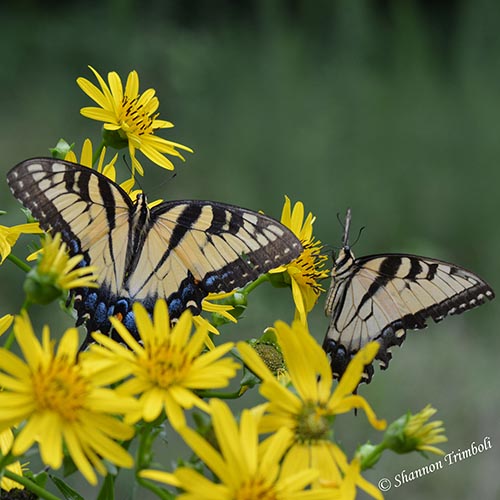 Late summer is often thought of as a challenging time for gardening. It’s hot, it’s humid, we may or may not be getting regular rainfall, and there are often lots of other summertime activities competing for our attention. But if our goal is to plant for pollinators and wildlife, then it is important to make sure we have plenty of plants blooming at this time of year too. In this episode of the Backyard Ecology podcast, I share some of the native plants that I love and why I love them so you can decide if they are right for you. All of these plants bloom in the July / August time frame, attract lots of pollinators, and have a large native range that includes Kentucky. You’ll have to look up the plant to see if it is native to where you live. I’m not saying these are the “best native plants to plant,” because there is no way for me to know if these are the best plants for you without talking to you and learning more about your property and goals. These are simply some of the native plants I love and are in no particular order because my “favorite” has a tendency to change based on which one I’m looking at and what pollinators I’m thinking about. To make it easier for you to refer back to particular parts of the podcast, here are the plants and the time I start talking about each:
Links
Episode image:
| |||
| 29 Apr 2021 | Tracking the Periodical Cicadas with Dr. Gene Kritsky | 01:06:39 | |
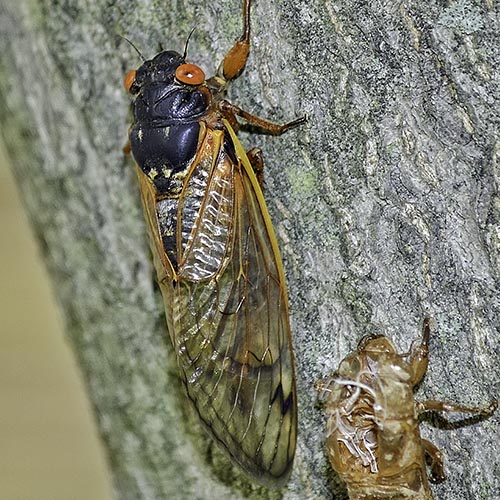 For many of us, the rhythmic chatter of annual cicadas is a natural part of every summer. But then… every once in a while… the trees explode in a deafening chorus of periodical cicadas. Periodical cicadas will spend over a decade as nymphs underground before emerging and maturing into adults. The adults only live a few weeks, but what an impression they make while they are here! In this episode of the Backyard Ecology podcast, we talk with Dr. Gene Kritsky. Gene is the Dean of the School of Behavioral and Natural Sciences at Mount St, Joseph University in Cincinnati. He is also the author of the book Periodical Cicadas: The Brood X Edition. During our conversation, Gene talked about the different species of 17-year periodical cicadas, as well as, the difference between broods and species. We also talked about the interesting life history of periodical cicadas and the important roles they play in the local ecosystems when they emerge. In addition, Gene provided tips for anyone who might be a little concerned about any negative impacts that periodical cicadas might have on their trees. One of the most exciting things Gene shared with us is his research on documenting and mapping the different broods. The idea that whole broods could be missed for centuries or that we have new broods appearing as portions of known broods shift their emergence patterns is fascinating to me. I also love the fact that he has given all of us the opportunity to help document and map the different broods through his Cicada Safari app. Using the Cicada Safari app, we can help Gene and other researchers gain a better understanding of the distribution of the different broods. With today’s tools and technology, we have the opportunity to easily help create much more detailed and comprehensive maps of the broods than scientists have ever been able to do before. But to it will take all of us working together and documenting what is happening in our own yards and communities. I think that’s exciting and hope we can help grant Gene’s wish to completely overwhelm him with data. I also appreciate all of the fun and educational resources that are included in the Cicada Safari app and on the Cicada Safari website. Whether you want to learn how to identify the different species, just have some fun making origami cicadas, learn how to dive into the historic records to try and identify overlooked broods in your area, or are looking for potential science fair project ideas, the Cicada Safari website has you covered. Links to the Cicada Safari website, Gene’s book, and other periodical cicada resources he recommended can be found below. When we recorded this in 2021, Brood X was the periodical cicada emergence that we were looking forward to. However, at least one brood of periodical cicadas emerges somewhere in the country every year. So, no matter when you listen to this episode, it is likely that there will be an emergence somewhere in the U.S. that needs to be documented and mapped. Links:
Episode image:
| |||
| 03 Dec 2020 | 2 Million Blossoms and Dr. Kirsten Traynor | 00:33:31 | |
 Hi Everyone! On today’s episode of Backyard Ecology we talk with Dr. Kirsten Traynor, a research associate at Arizona State University and the editor of 2 Million Blossoms, a quarterly magazine dedicated to protecting our pollinators. Our conversation takes a curvy, twisty path that covers multiple different topics including what led her to start the magazine, some of the articles in the magazine, a discussion of some of the crazy interactions between plants and their pollinators, some of her current research, and what’s next for the magazine. Kirsten’s journey into the world of pollinators started when she became a beekeeper. Her honey bees served as a “gateway bug” that inspired an appreciation of all the other bees that she also found visiting flowers. She started 2 Million Blossoms because she wanted to bring together beekeepers, native bee enthusiasts, and other people who love pollinators. Her goal with the magazine is to inform, inspire, and entertain. 2 Million Blossoms launched in January 2020. The tone of the magazine is very positive and it always has beautiful photographs and artwork. Articles over the past year have included the story of someone who rode her bike from Mexico to Canada and back as she followed the migration path of the monarchs, how coyotes serve as important seed dispersers for pawpaws and persimmons, goldenrods that grow well in garden settings without taking over, the lost migration of hover flies on the east coast, and photo essays exploring the connection between nature and the night sky. Kirsten also hinted at some of the stories she has planned for 2021. I’m a huge fan of 2 Million Blossoms and it’s currently the only magazine that I read cover to cover. I can’t wait to see what’s in store for its second year. If this is your first time hearing about the magazine, then I encourage you to check it out. Kirsten was even kind enough to give our listeners a coupon code for $5 off the subscription price. (And no, I don’t get any kick back or affiliate fees if you subscribe. I just really enjoy the magazine and think many of you will too.) Links:
| |||
| 06 May 2021 | Important Backyard Ecology News and Changes | 00:07:51 | |
 Thank you for joining me on this Backyard Ecology journey. I can’t believe we’re already up to episode 24 of the Backyard Ecology podcast! And the blog has been going on, in one form or another, for much longer than that. I am really looking forward to continuing on this journey with you. This week’s Backyard Ecology podcast episode is a short, but important one because it talks about some changes that are coming to both the podcast and the blog. Don’t worry, Backyard Ecology isn’t going away. I enjoy it too much and know that you find it valuable too, but I’ve also realized that I need to make some changes. This was a hard episode for me to record, because I opened up about some of what I’ve been going through over the last few months. I also shared the reasons why I am making the changes that I am making and how I hope those changes will help all of us. I wrap up this episode with a very specific request for help related to one area of Backyard Ecology. Links:
| |||
| 20 Mar 2025 | BirdCast: Revealing the Mysteries of Bird Migration | 01:14:25 | |
Summary Today’s guest 3 things you’ll learn from this episode:
Resources Andrew mentioned: Other Backyard Ecology resources: Thank you Thank you to our amazing Patrons who go above and beyond every month to provide financial support which helps us create so much free content for everyone to enjoy and learn from. | |||
| 30 Nov 2023 | Tips and Tricks for Growing Prairie Plants in Your Native Plant Garden | 00:54:05 | |
Did you know that for many of our most commonly grown native wildflowers and grasses, 2/3 or more of the plant is underground in the form of roots? Or that you can reduce weeding requirements in your native plant garden by understanding the root systems of different plants that you are growing? Or that there is now a resource that can help you avoid mistaking a native plant in your garden as a weed and accidentally pulling it? Today, we are talking to Hilary Cox and Neil Diboll. They are the authors of the newly published book, The Gardener's Guide to Prairie Plants. Neil is also the president and consulting ecologist of Prairie Nursery, located in Wisconsin. The full transcript of this episode can be found at: https://www.backyardecology.net/growing-prairie-plants 🌻 🌻 🌻 Thank you to our supporters on Patreon who go above and beyond each month to financially contribute towards making the Backyard Ecology blog, podcast, and YouTube channel possible. Thank you also to everyone who has made one-time donations to support the Backyard Ecology blog, podcast, and YouTube channel. 🌻 🌻 🌻 Episode related links: 🦋 Hilary’s email: crumpetlee@gmail.com Become a Backyard Ecologist: 🦋 The Backyard Ecologist’s Newsletter: https://www.backyardecology.net/subscribe/ Backyard Ecology content: 🦋 Website: https://backyardecology.net
🦋 Patreon page: https://www.patreon.com/backyardecology | |||
| 21 Jan 2021 | Native Seed Production and Tips for Starting a New Native Plant Garden or Restoration Area | 01:03:44 | |
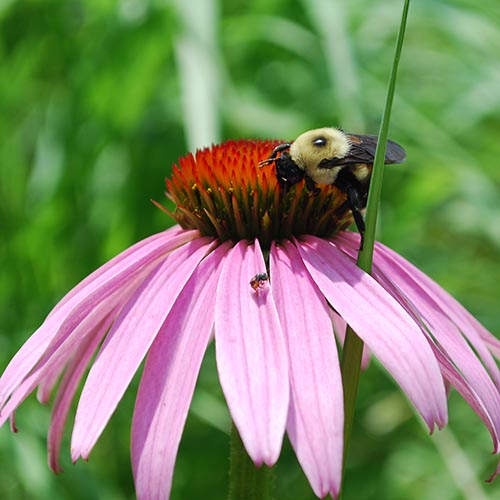 Growing native plants has grown in popularity over the last couple of decades. This has led to an increased demand for native plant seeds. However, many of us have never really stopped to think about how those native seeds are produced on a commercial level. In this episode, we talk with John Seymour and Robert Hoffman from Roundstone Native Seed about this and their recommendations for planting native seeds. John is the president of Roundstone and Robert is their Restoration Ecologist. Growing native plants for commercial seed production is a complicated process. At Roundstone Native Seed, the process starts with collecting the initial native seeds from the wild following the U.S. Forest Service collecting guidelines. The native seeds initially collected must then be grown first as plugs in a greenhouse, and then transplanted into larger production plots which produce the native seeds that are eventually harvested for sale. Once in the production plots, the plants must be cared for throughout the growing season and throughout future years to keep the plots producing to the best of their ability. Some of the ongoing care and maintenance may include watering, hand weeding, and conducting prescribed burns on the fields. For many of the production fields, it may take up to three years before a stand is producing seed to its fullest capacity. For many of these species, much of the harvesting and seed processing must be done by hand. Unlike many of our more traditional crops or flowers, native plants don’t all go to seed at the same time. Often times the staff at Roundstone will go out to each stand every day to hand harvest just the seeds that are ready that day – taking a combine through and harvesting the whole field at once, like is done with corn or soybeans, is often not an option for native seeds. After being harvested, the seeds then have to be dried and cleaned. The cleaning process includes removing all the “fluff” and extra pieces of vegetative material. This can be up to a 17-step process for native seeds, while more traditional crops may only have a few steps in the cleaning process. And each species has different cleaning requirements and needs. Each machine also has to be thoroughly cleaned before the next species can be processed. When it comes to planting native seeds, site preparation is extremely important. The type of site preparation you need to do will depend on the current use of that land. Is it a yard, an existing garden or crop field, a pasture, etc.? The number one thing you can do for site preparation is weed control and a lack of weed control is the number one reason why native plant stands or gardens fail. The three most common forms of weed control before planting your native seeds are herbicide treatments, solarization, and repeat tillage. It often takes multiple weed control treatments over several seasons to get a site properly prepped for planting native seeds. Initial weed control is so important prior to planting native seeds because native plants tend to germinate slower and over a longer period of time than many weeds. That longer and slower germination rate can allow weeds to take over and outcompete your native seeds. The old adage for native plants is that first they sleep, then they creep, then they leap, so you really need to do everything you can to reduce the weed competition during the first year or two. The second most common reason for stand failure with native seeds is probably from planting the seeds too deep. Native seeds need a firm seed bed and often shouldn’t be planted more than 1/8 to a 1/4 inch deep. It is usually better for the seeds to be on the surface than planted too deeply. Depending on your goals, the site, and your weed control process, native seeds can be planted in the dormant season (mid-November through early March) or the growing season (mid-April through late-June). Both planting times have their own pros and cons. One of the things that I really like about Roundstone Native Seed is that they care about their customers and want to help them find the right mixes for them. If you call to talk to Roundstone Native Seed, they’ll often take you through what they refer to as a “seed interview.” During the seed interview, they will ask you lots of questions aimed at identifying what they believe will be the best mix to meet your specific needs, goals, and location. Their main goal is to help you have good stands and success with your native plants. Links:
Episode image:
| |||
| 27 Jul 2023 | What Happens When a Tree Gets Blown Over? Discovering New Habitats Created by Fallen Trees | 00:12:29 | |
As sad as the loss of a tree can be, there’s also an excitement because fallen trees provide many different types of valuable and often overlooked habitats. I talk about some of those habitats in this episode. The full transcript, including additional pictures, can be found on the episode’s webpage: https://www.backyardecology.net/what-happens-when-a-tree-gets-blown-over-discovering-new-habitats-created-by-fallen-trees/ Incorporating native plants into your landscape is a great way to improve the habitat in your yard for butterflies, hummingbirds, songbirds, and just about every other type of animal that visits your property. If you want to learn more about gardening with native plants, then I’d like to give you a free copy of our e-book, An Introduction to Gardening with Native Plants: Hardiness Zones and Ecoregions. Just go to https://www.backyardecology.net/ecoregions/ to request your copy. Links
Episode Image:
| |||
| 19 Jan 2023 | Should you mow your meadow or pollinator planting? | 00:18:23 | |
 Have you planted a meadow or pollinator planting on your property? Or, do you know someone or some place in your community that has one? If it’s on your property then part of the recommended management for it may have been to mow it periodically. Or if it’s not on your property then you may have driven by it only to see it being mowed or find that it had recently been mowed. If you’re initial reaction was something along the lines of “Wh…What?!” “Wait!” “Stop!” “No” “Why?” or included feelings of confusion, sadness, anger, or frustration, then you aren’t alone. In this episode of the Backyard Ecology podcast, we talk about why people mow meadows and larger pollinator plantings. We also talk about whether it is really necessary. The answers to both of those questions are rooted in the grassland and prairie ecosystems that meadows and larger pollinator plantings are often trying to replicate. Topics discussed in this episode include:
I hope you’ve found this episode helpful and that it has encouraged you to think about things. If you’re listening to this in January 2023, please don’t forget to take our survey. Until next time, I encourage you to take some time to enjoy the nature in your yard and community. Related episodes:
Backyard Ecology Links:
Episode image:
| |||